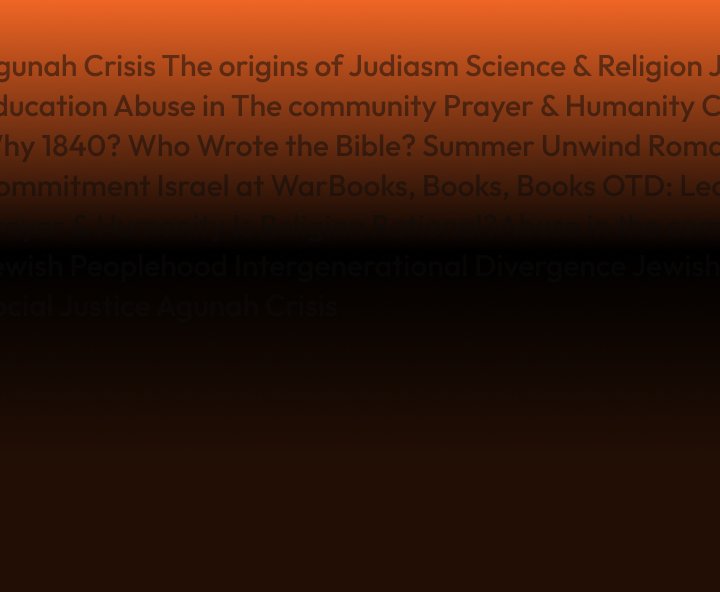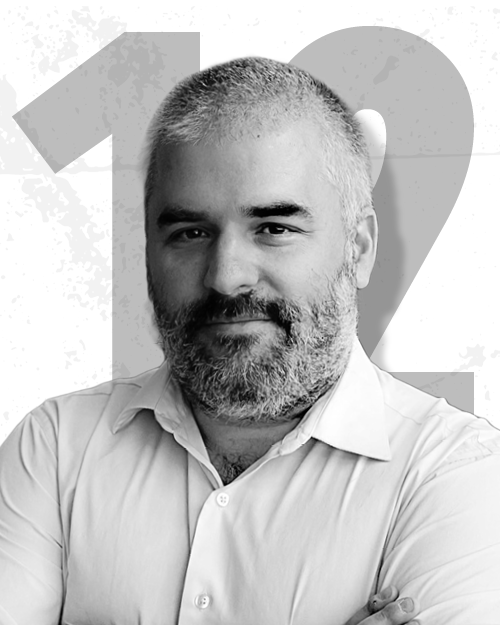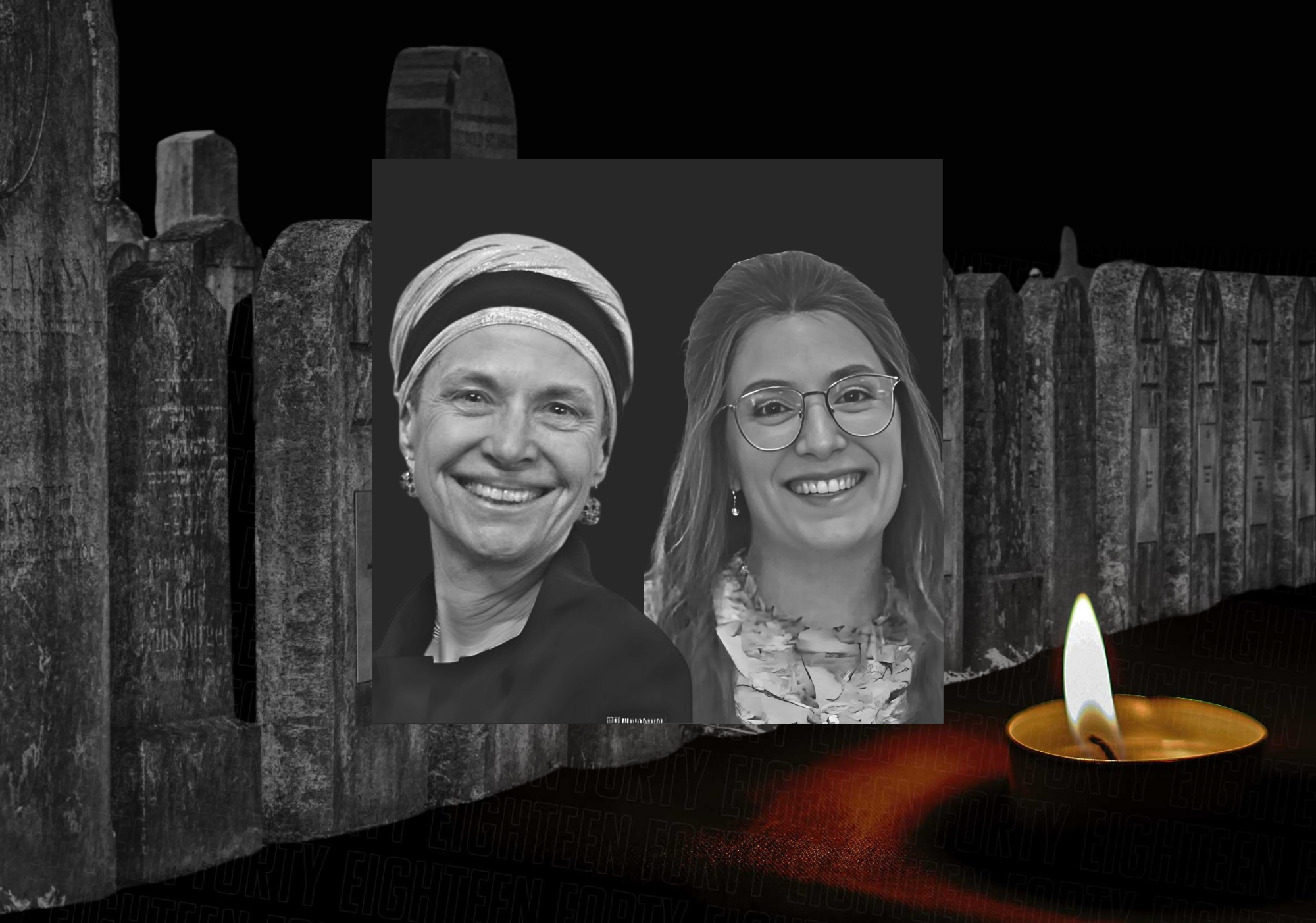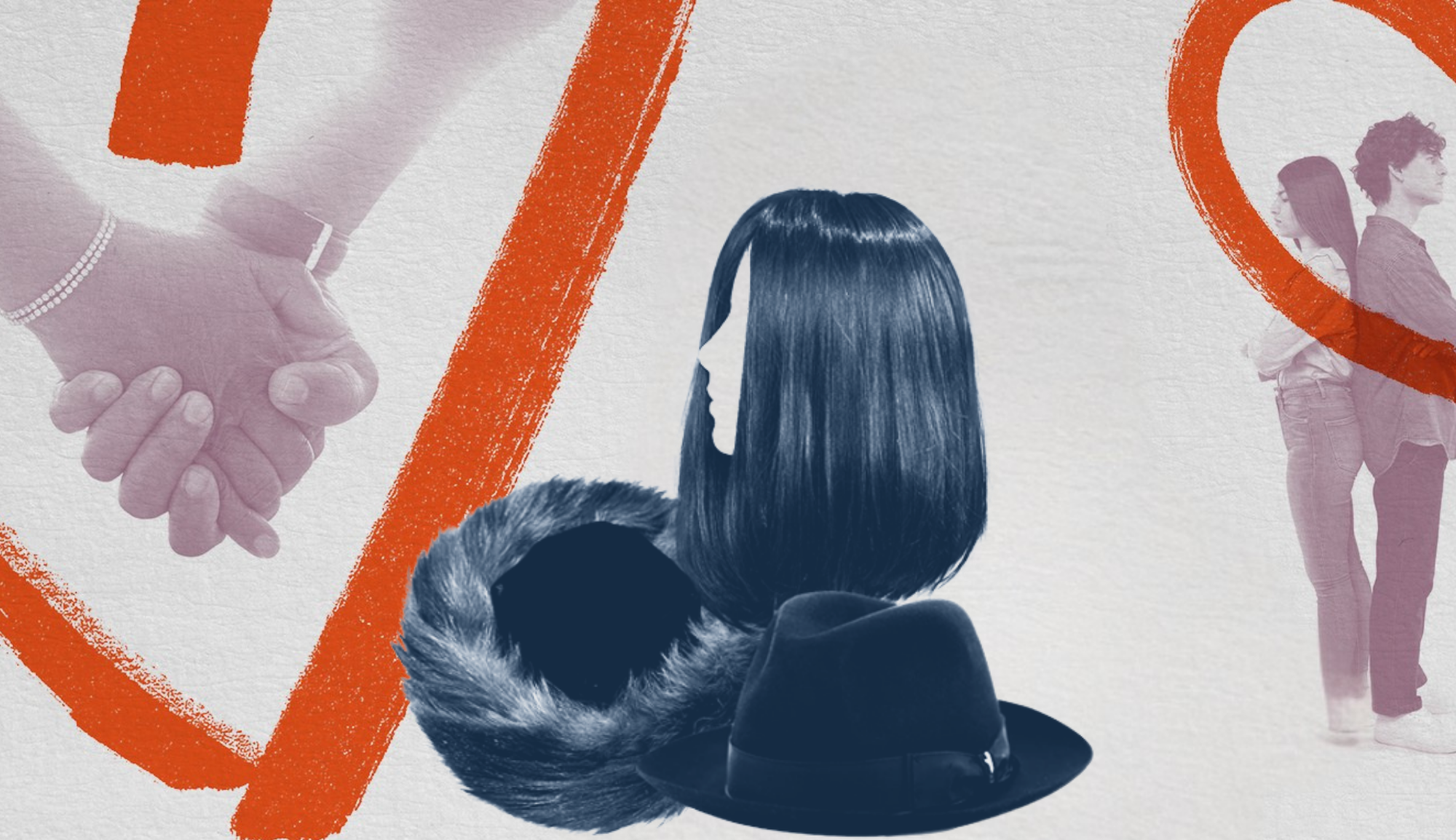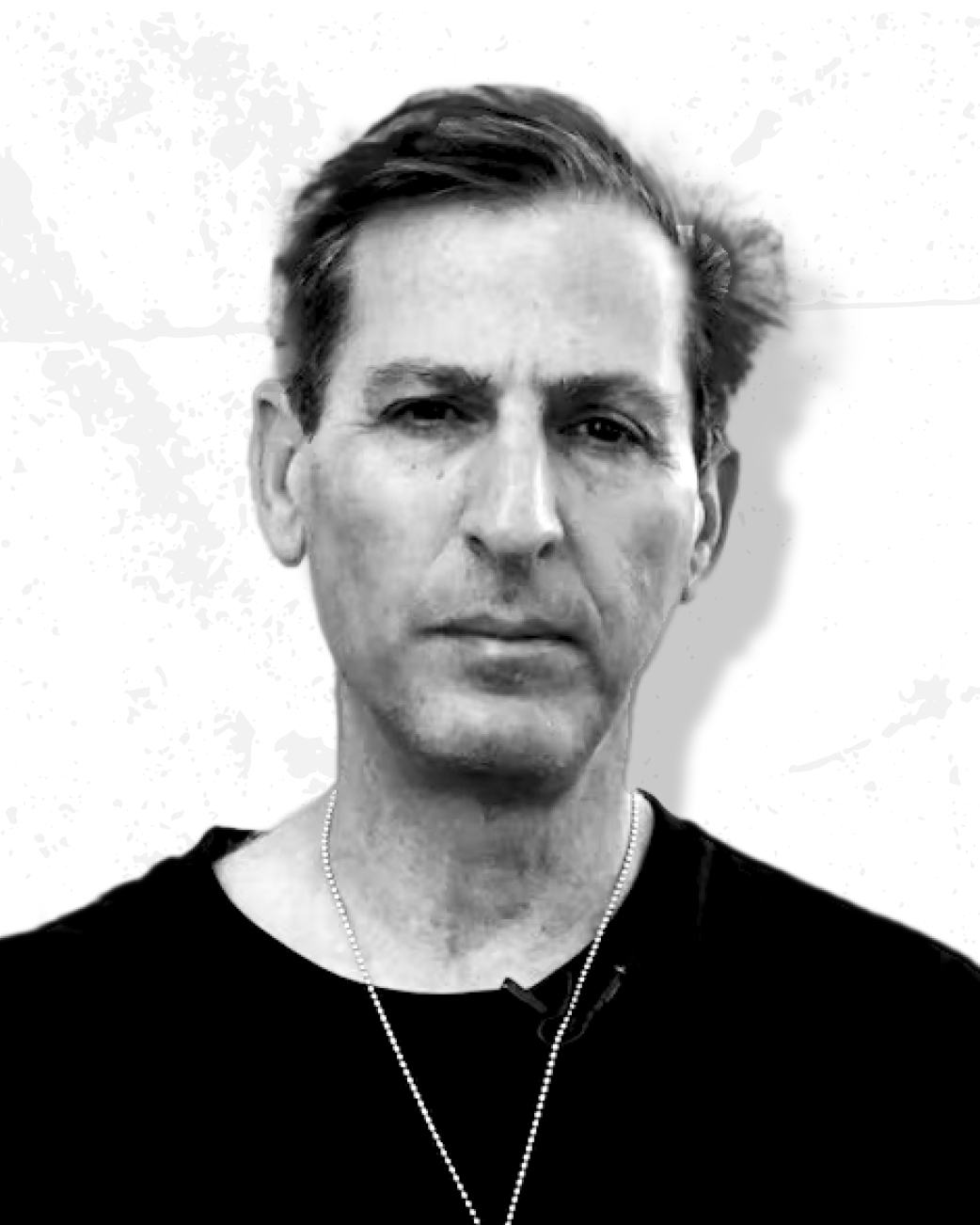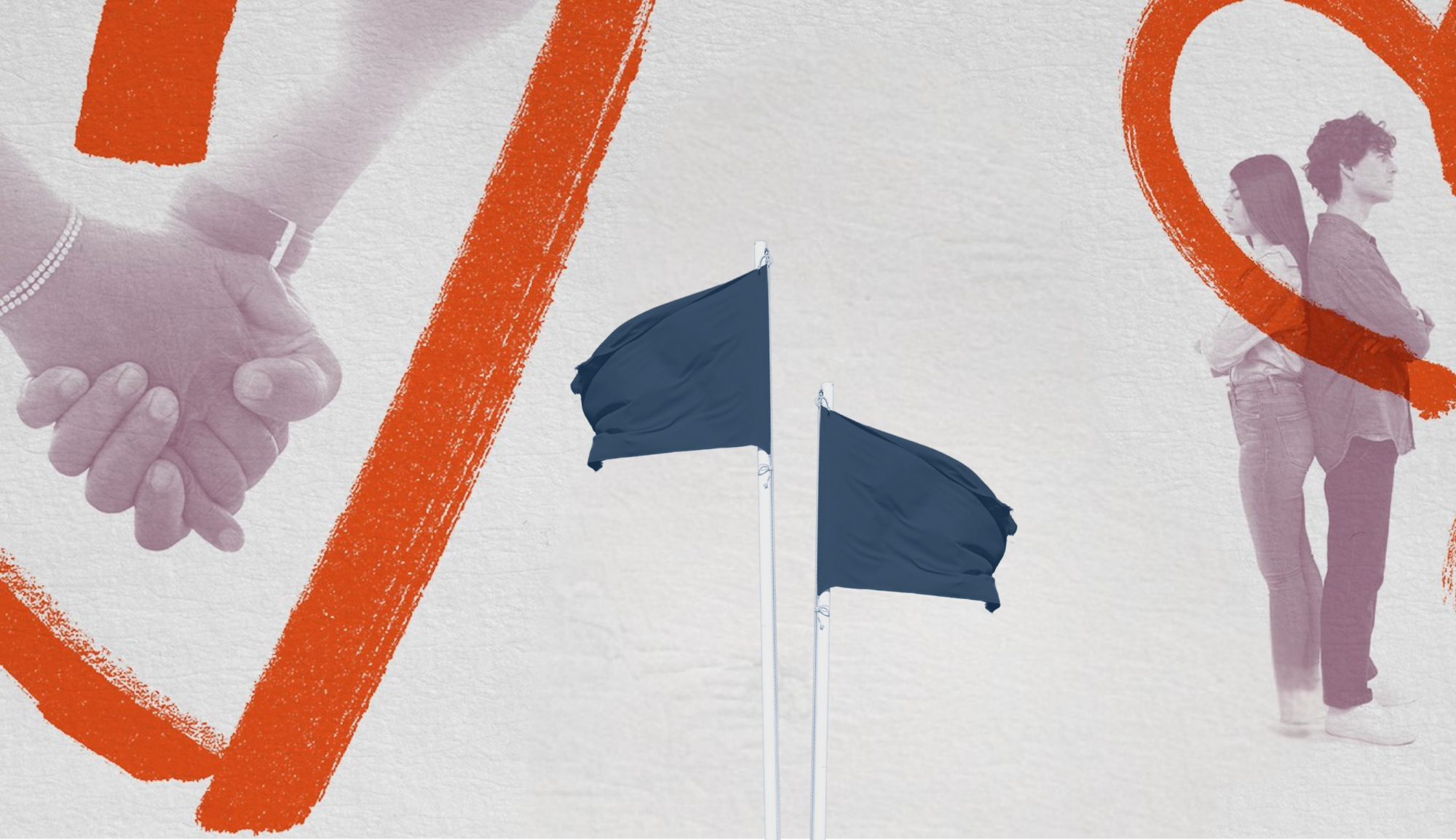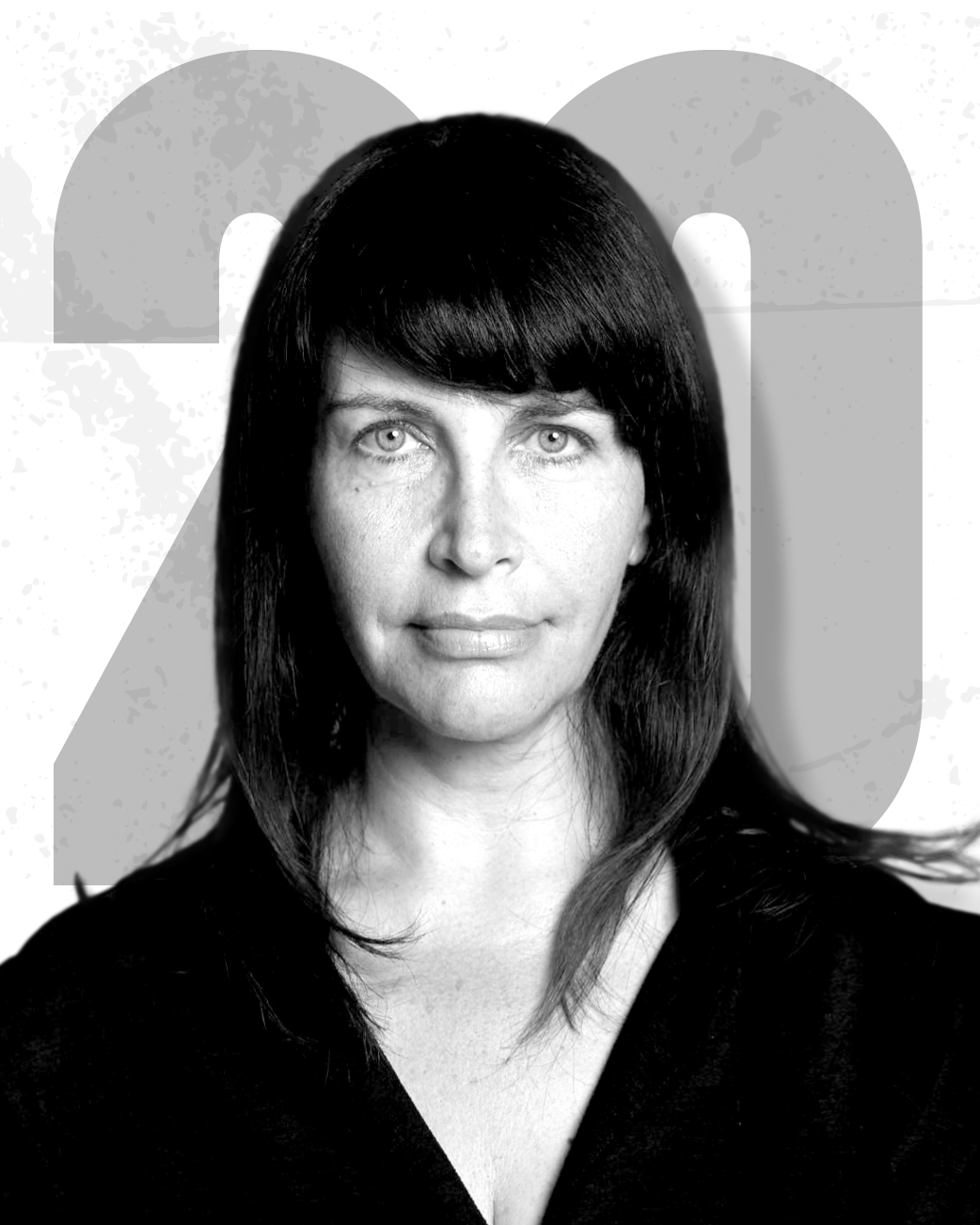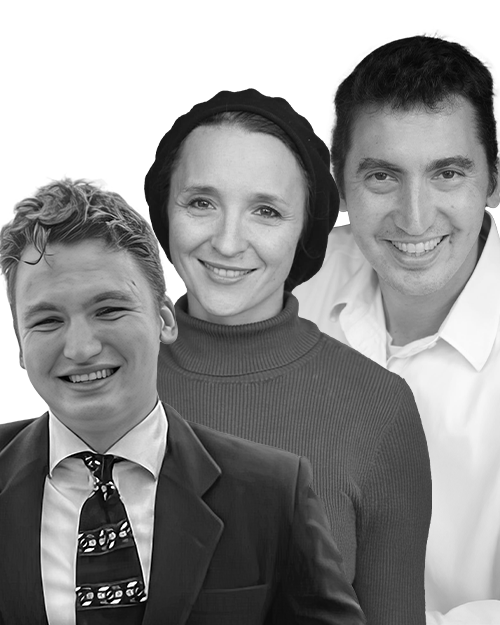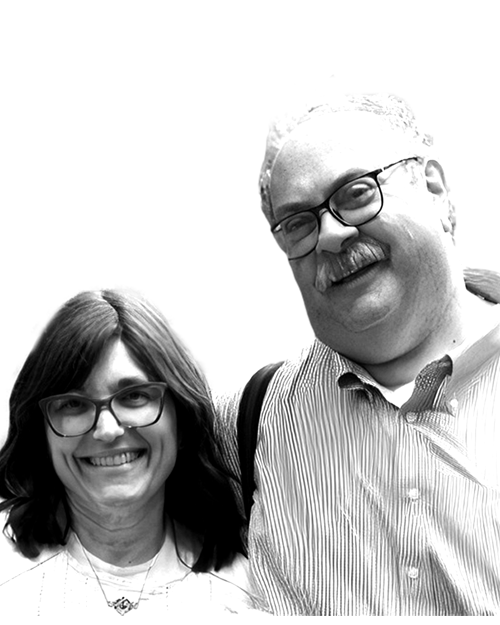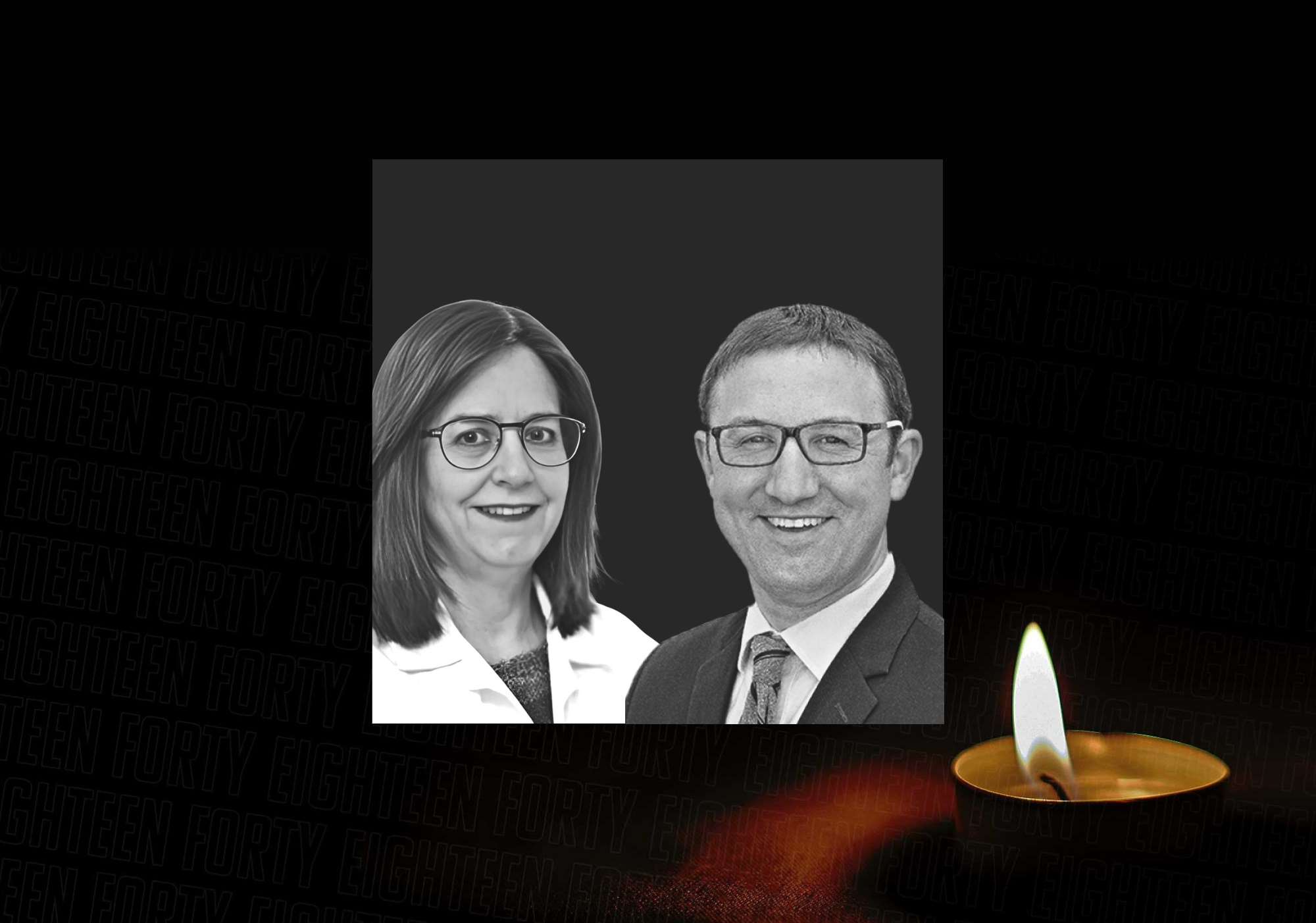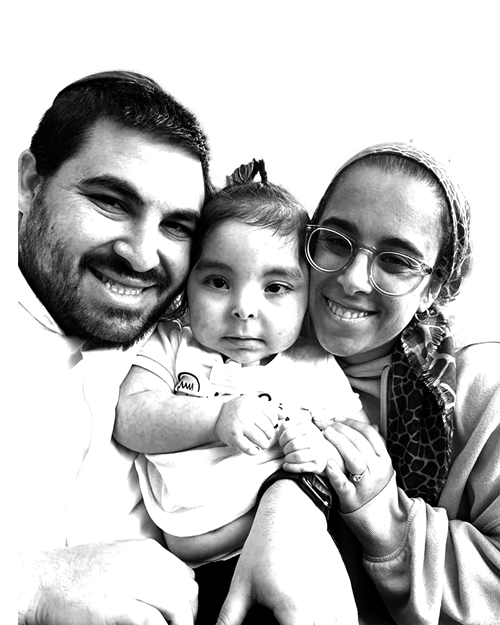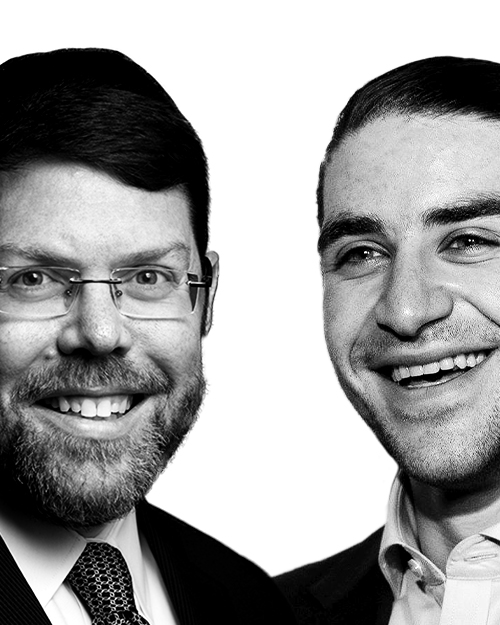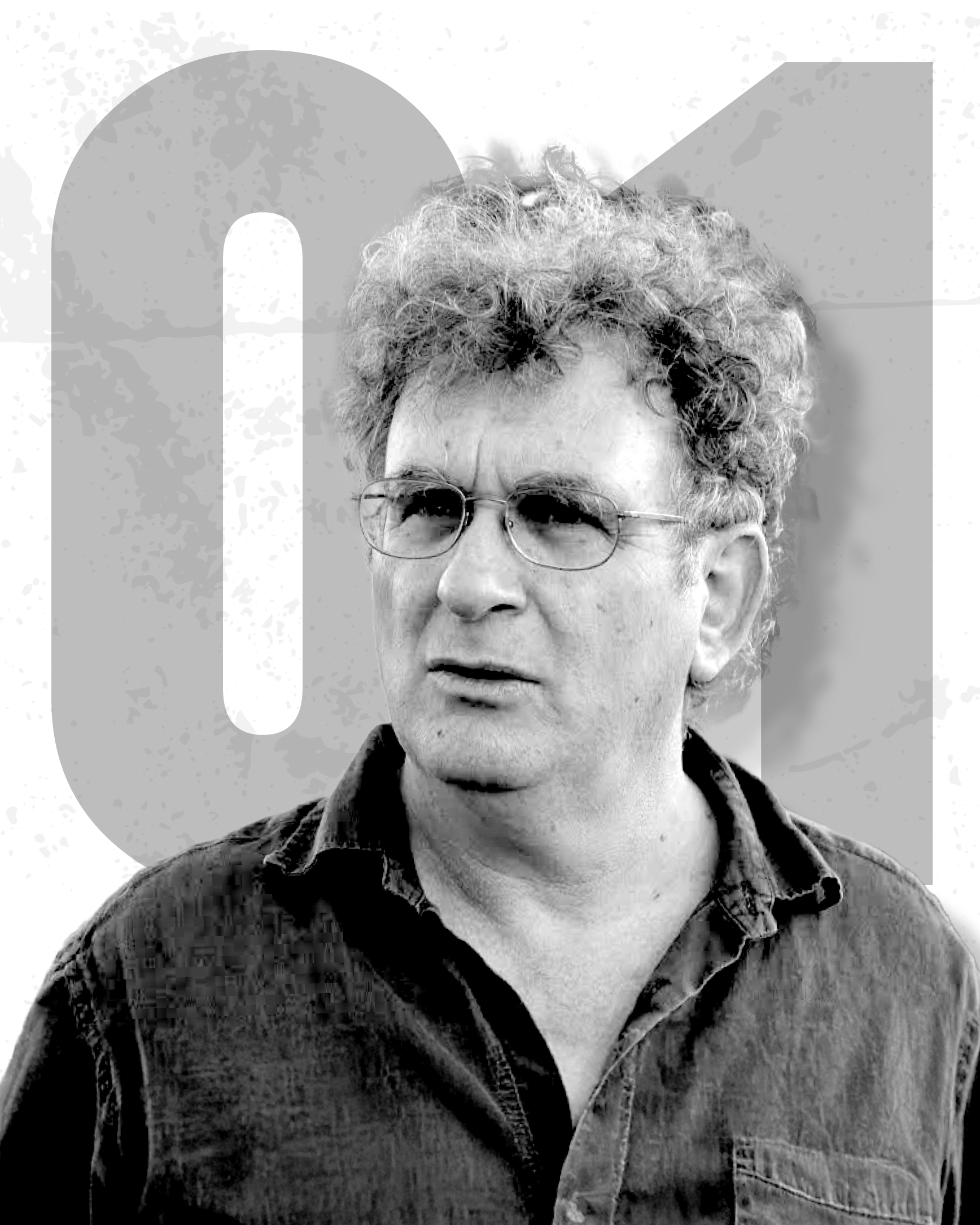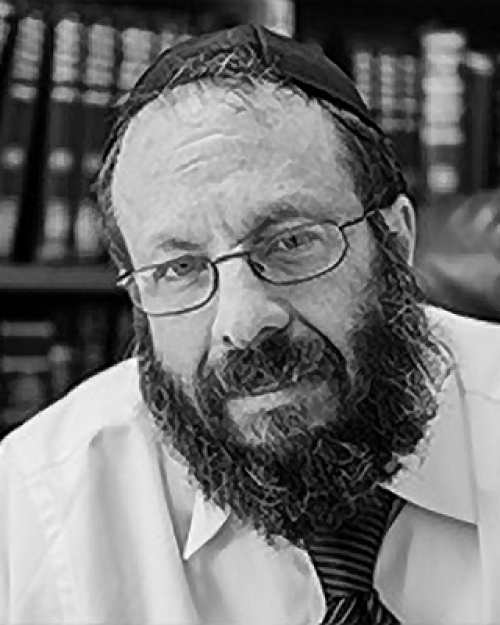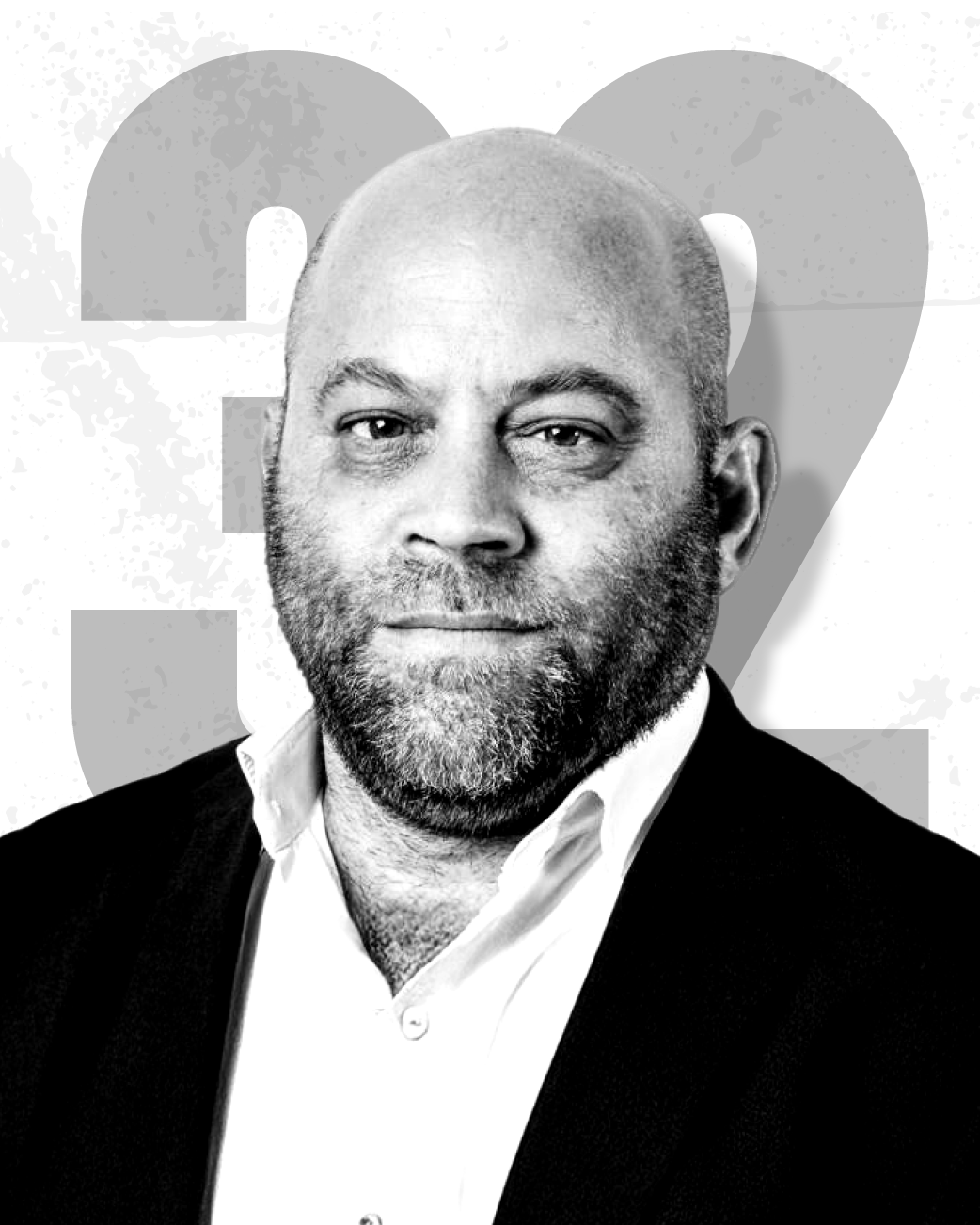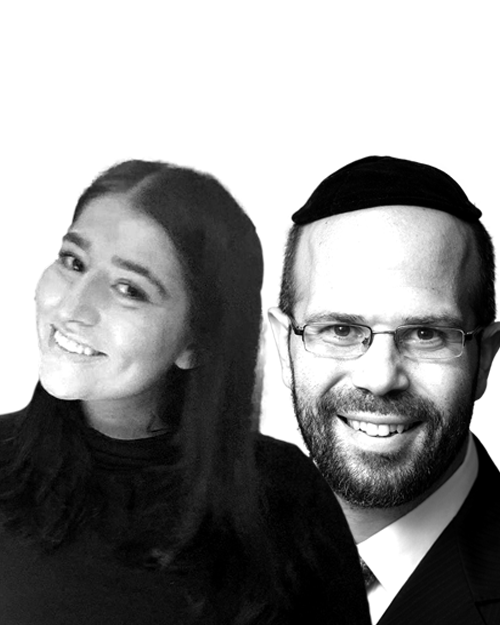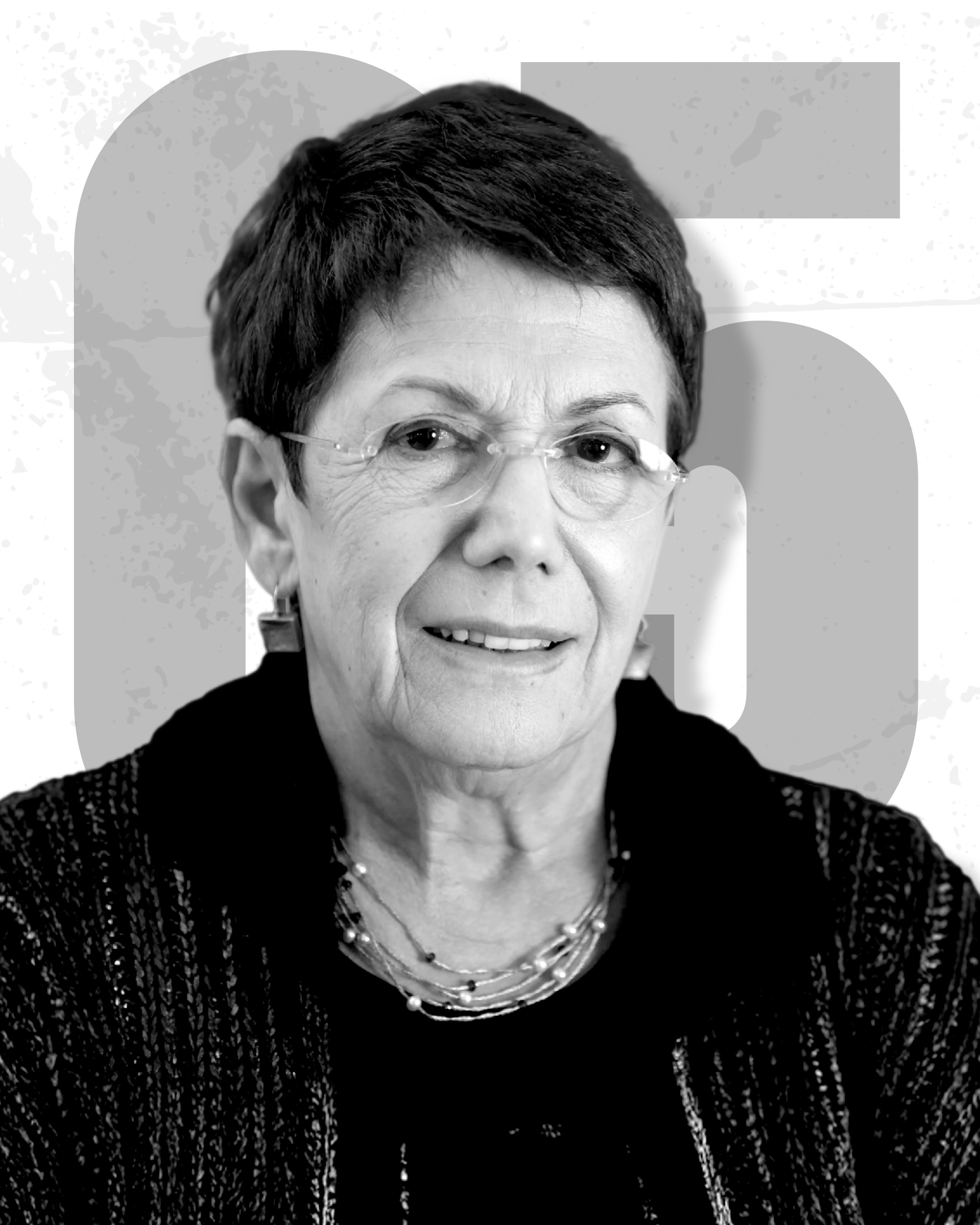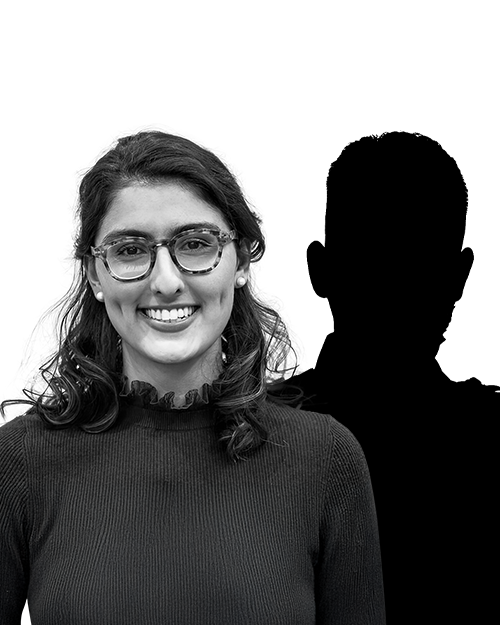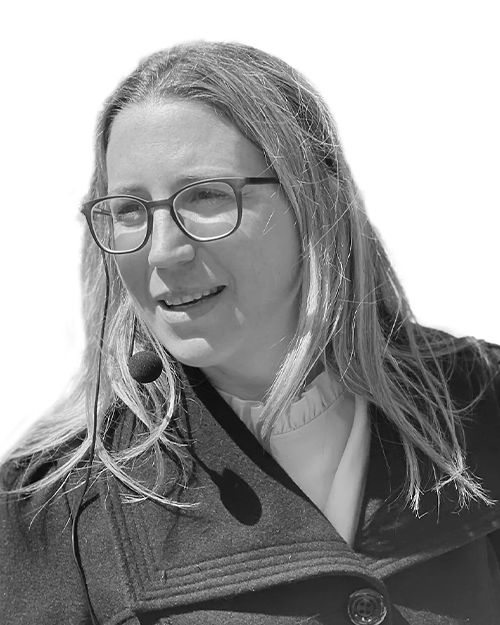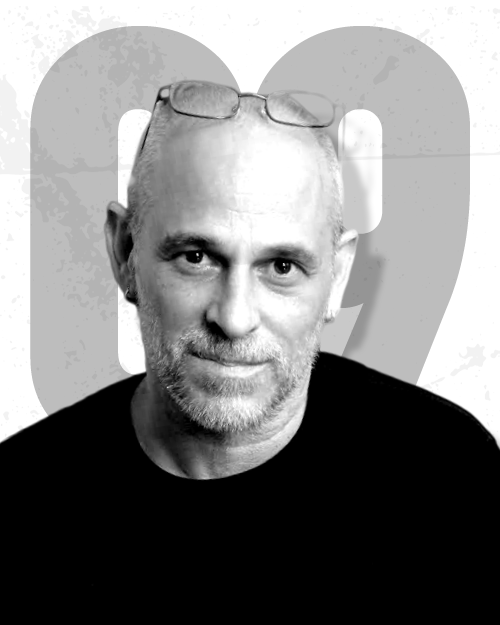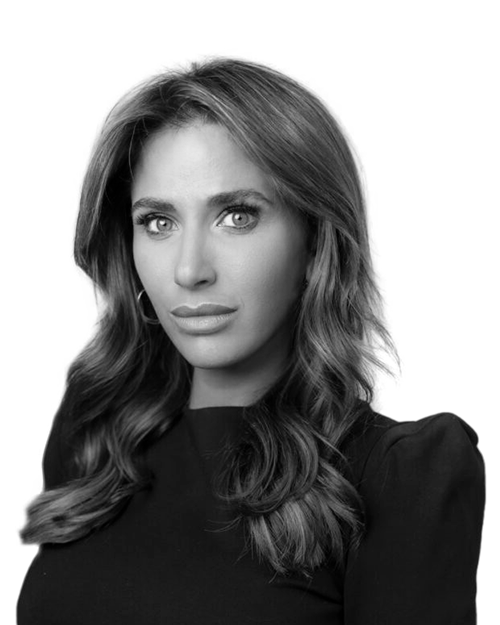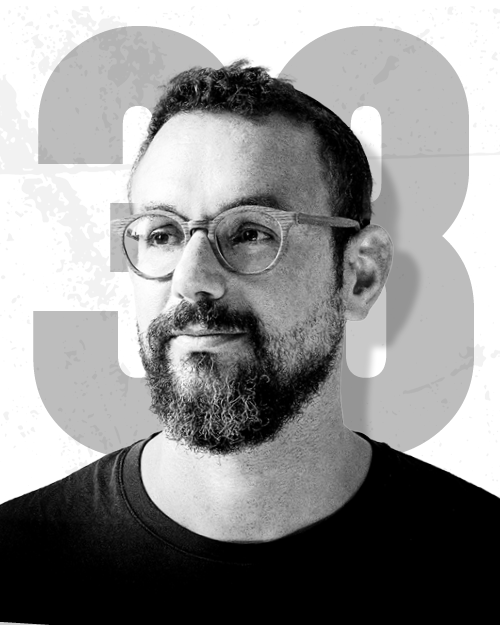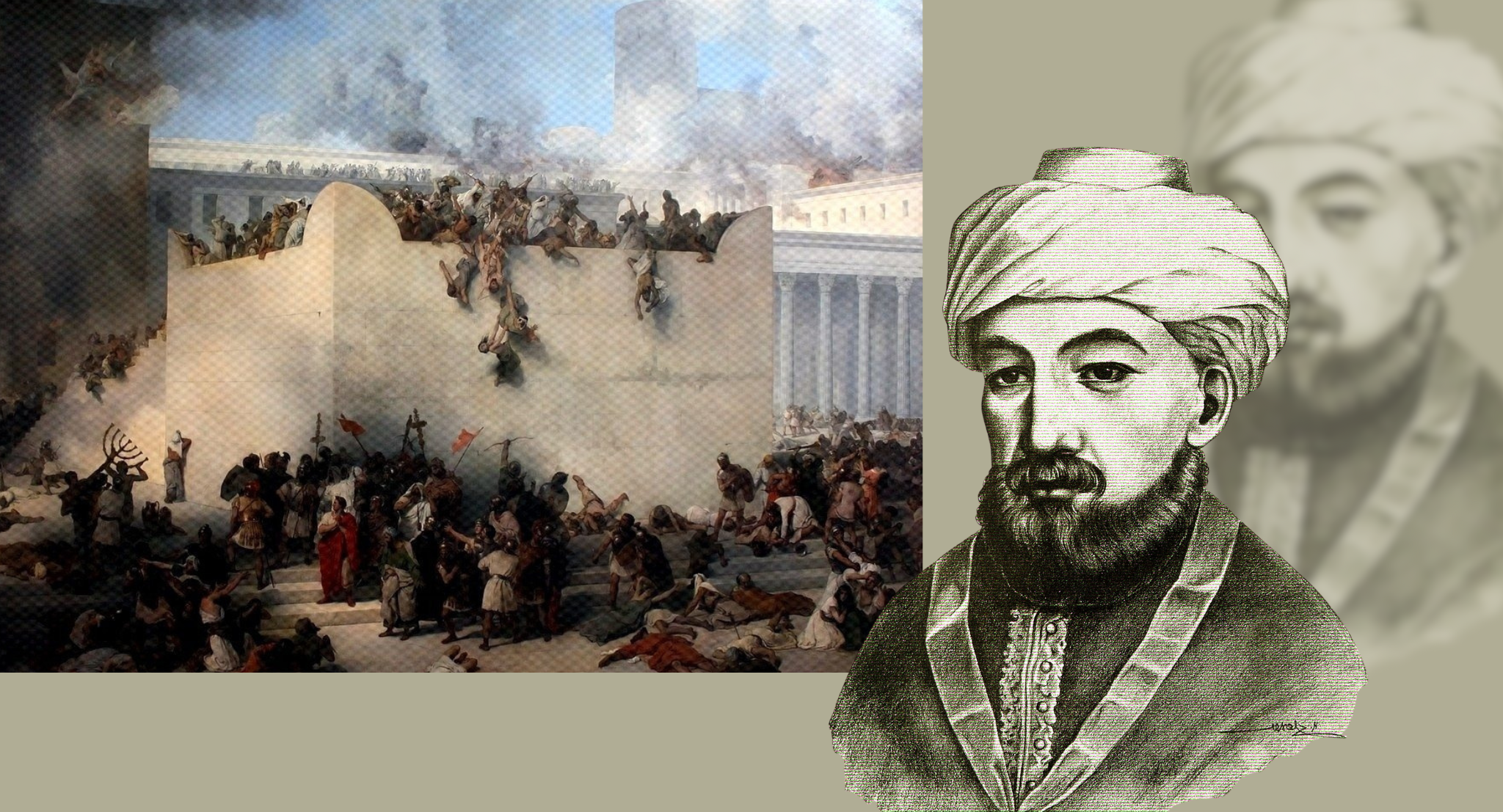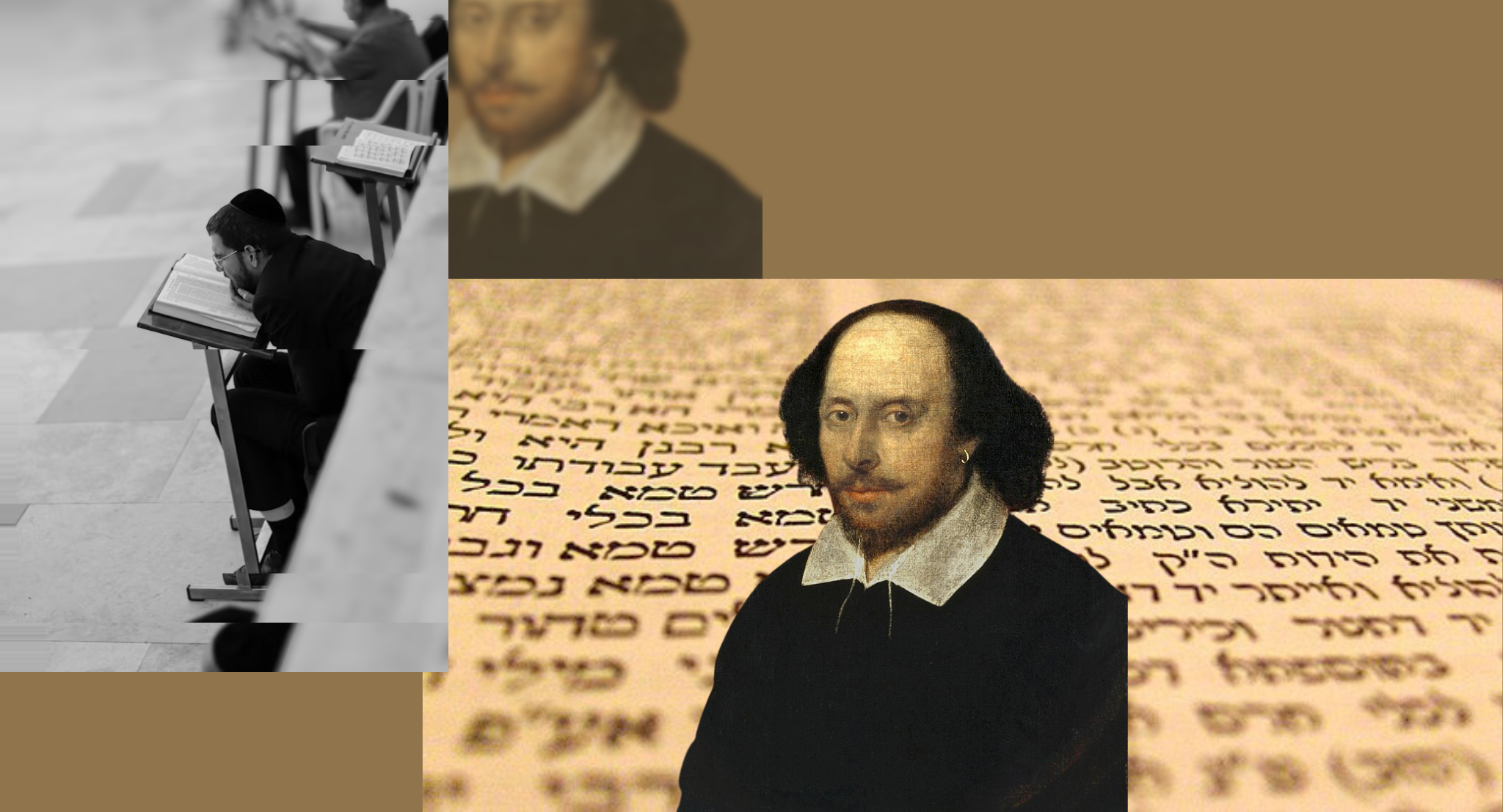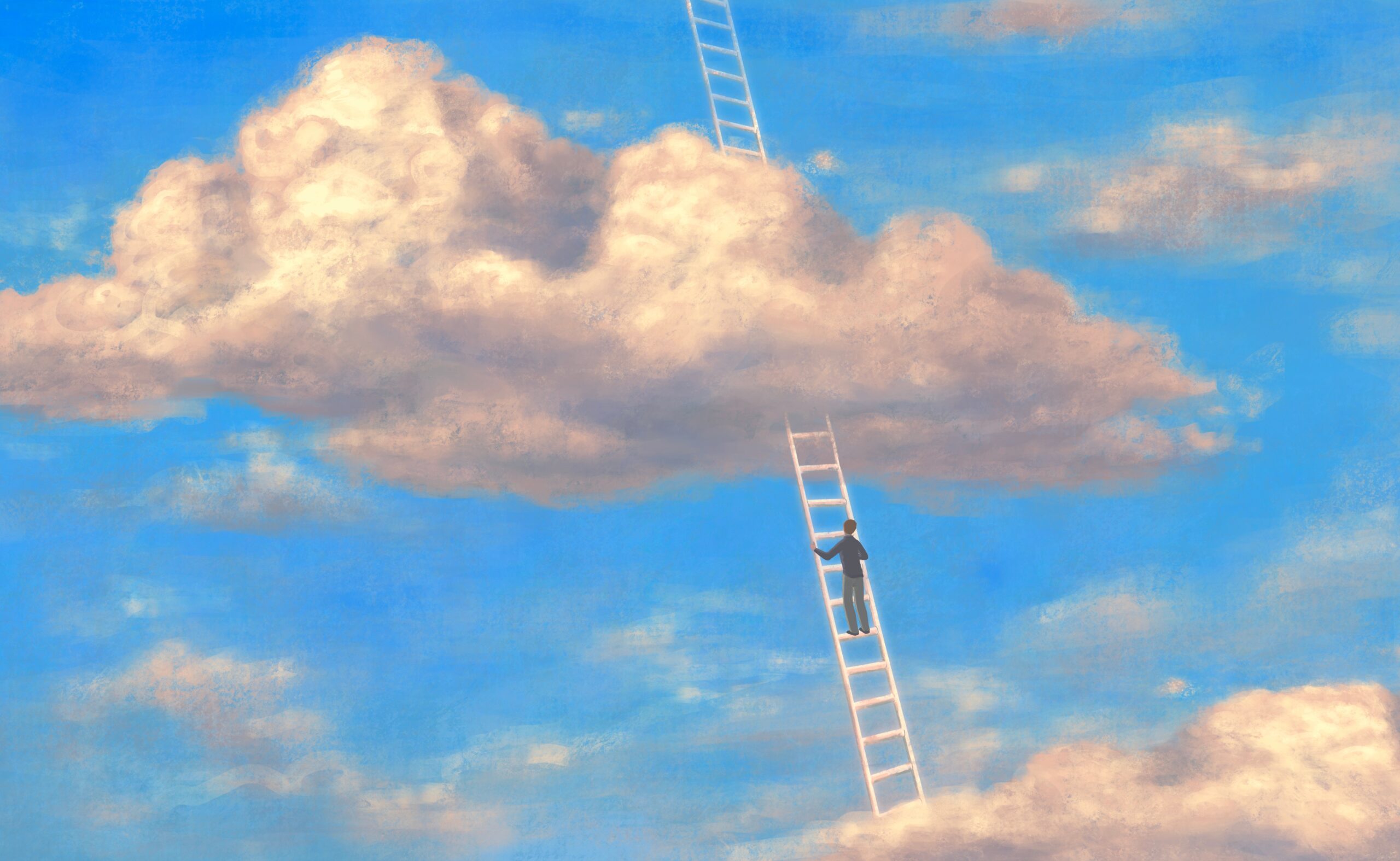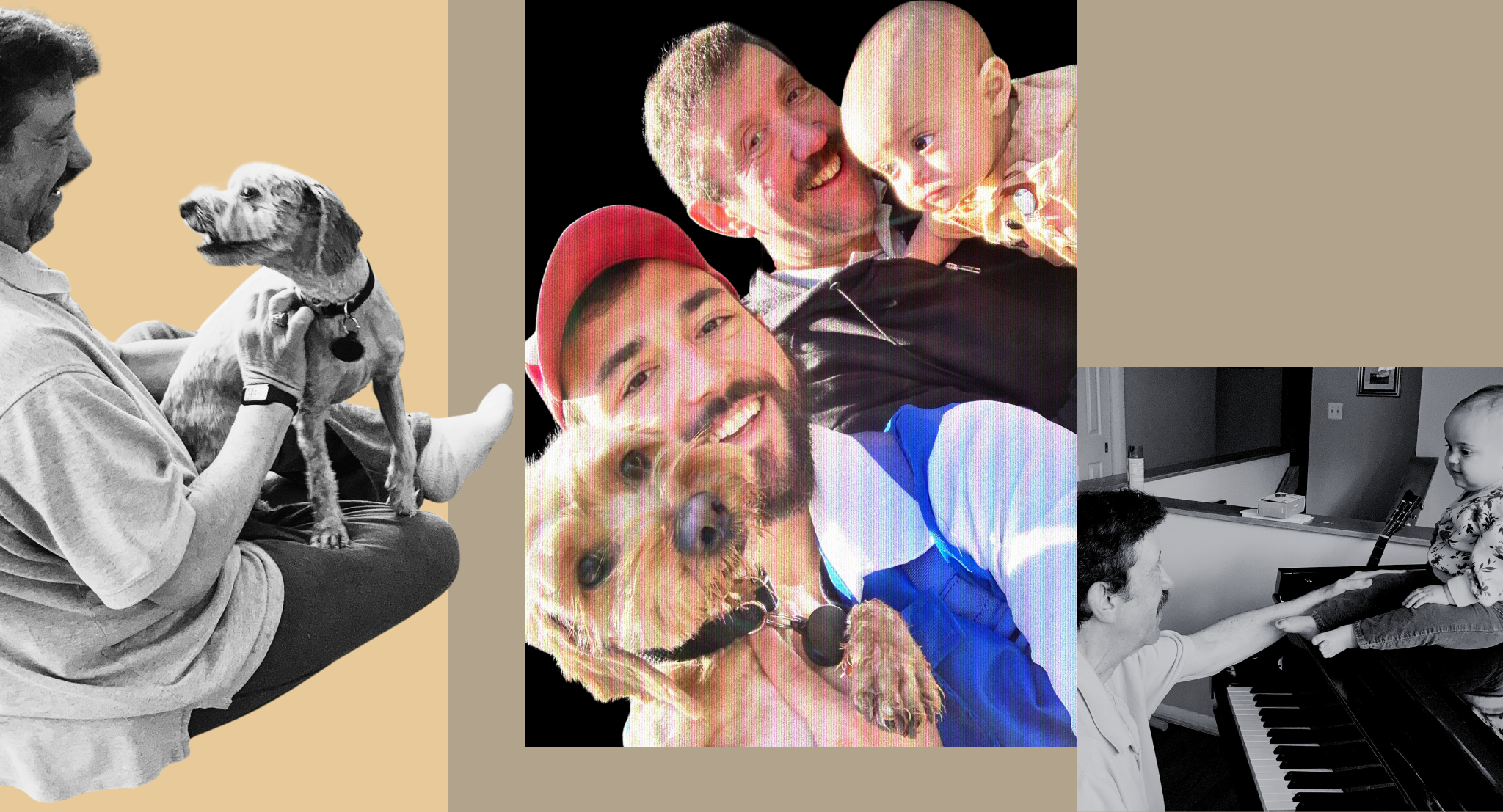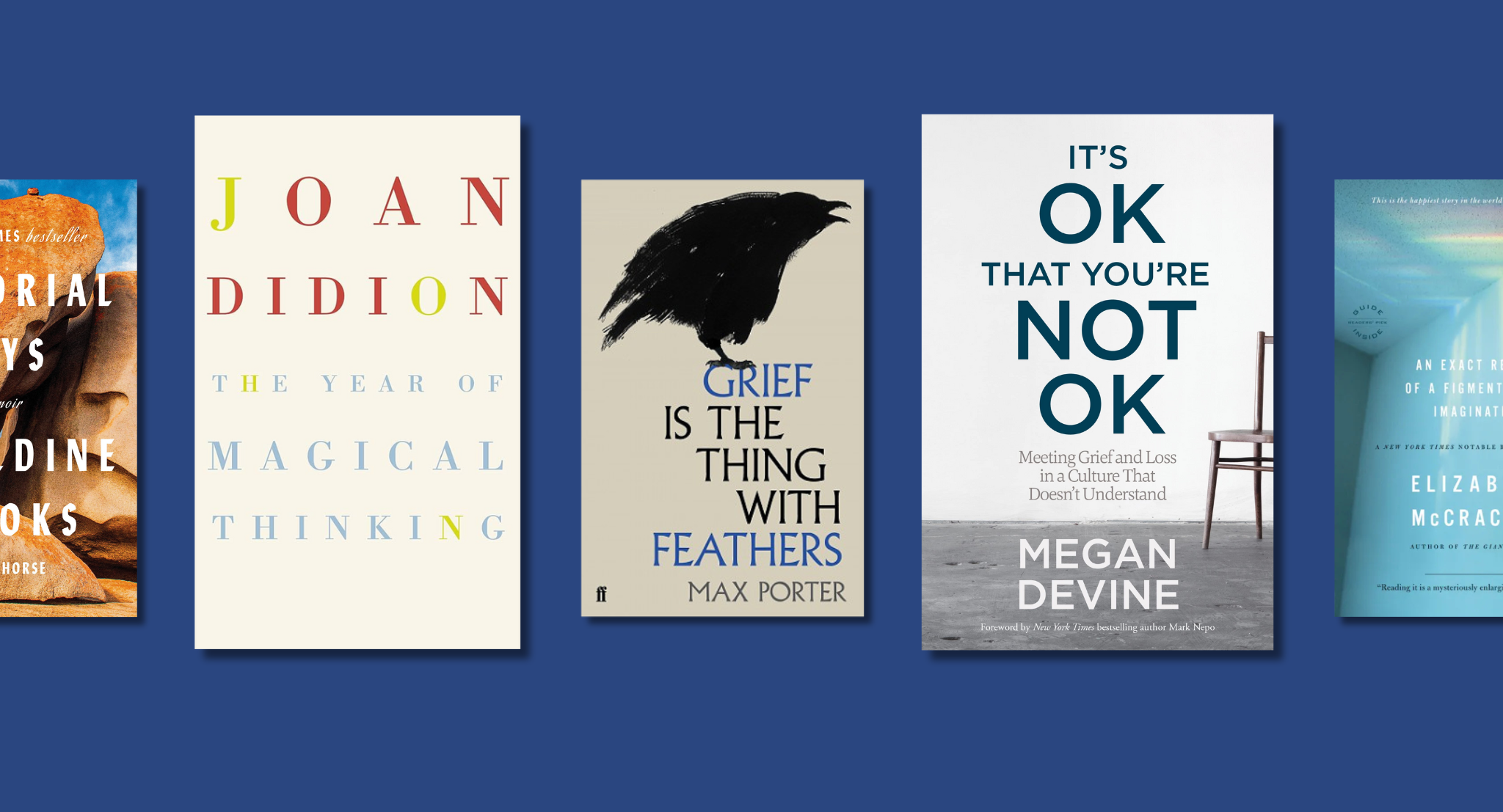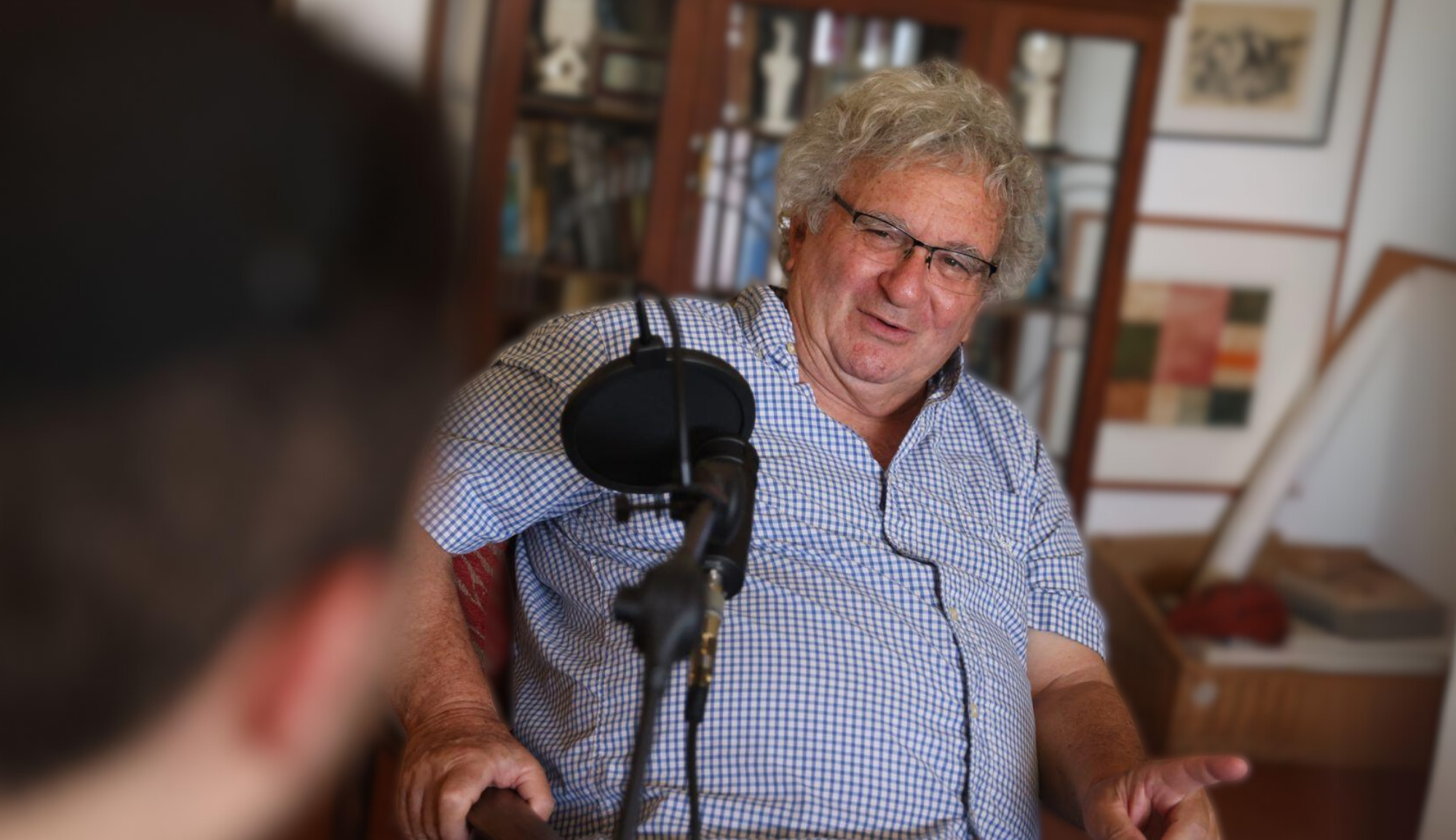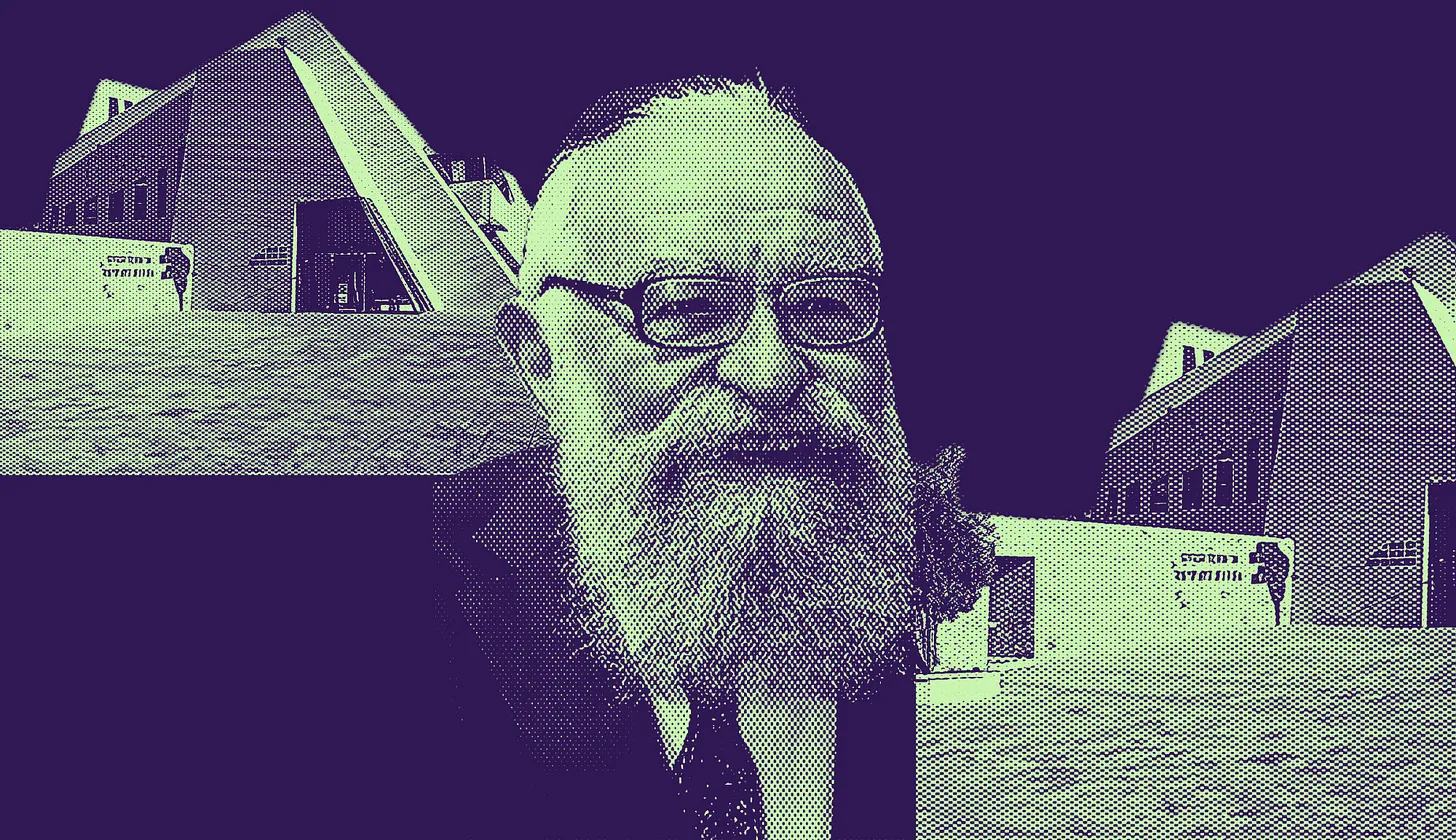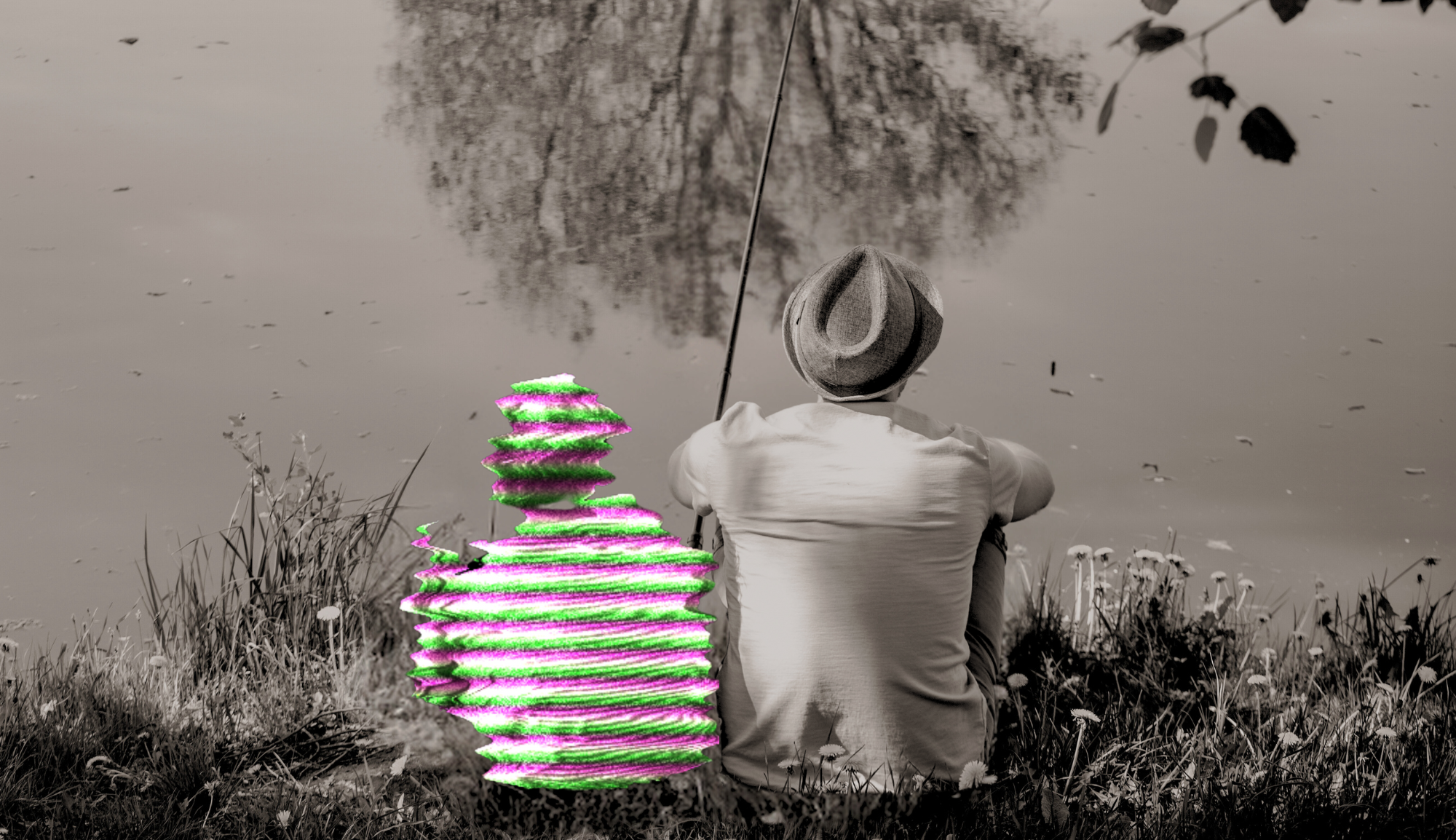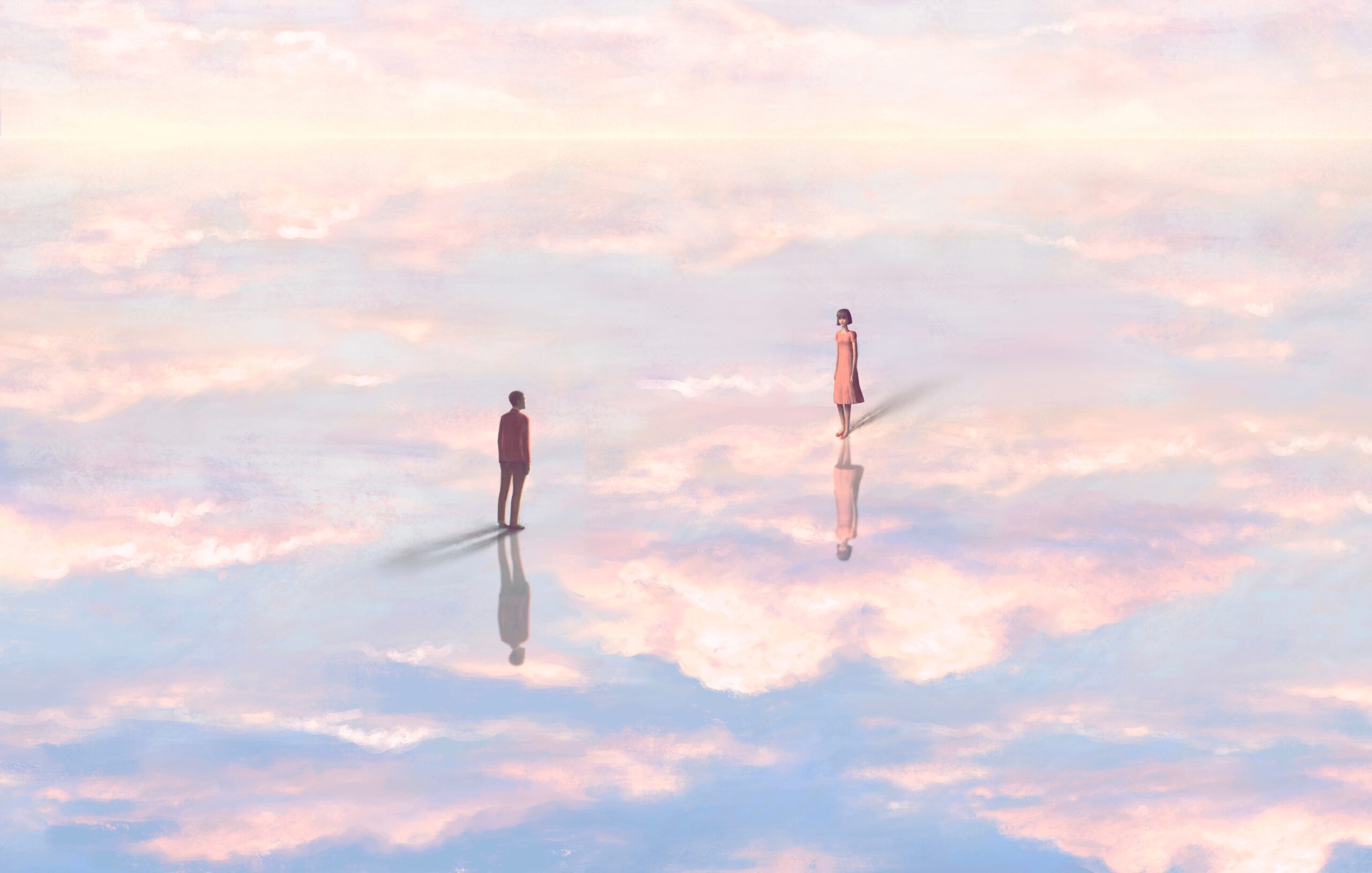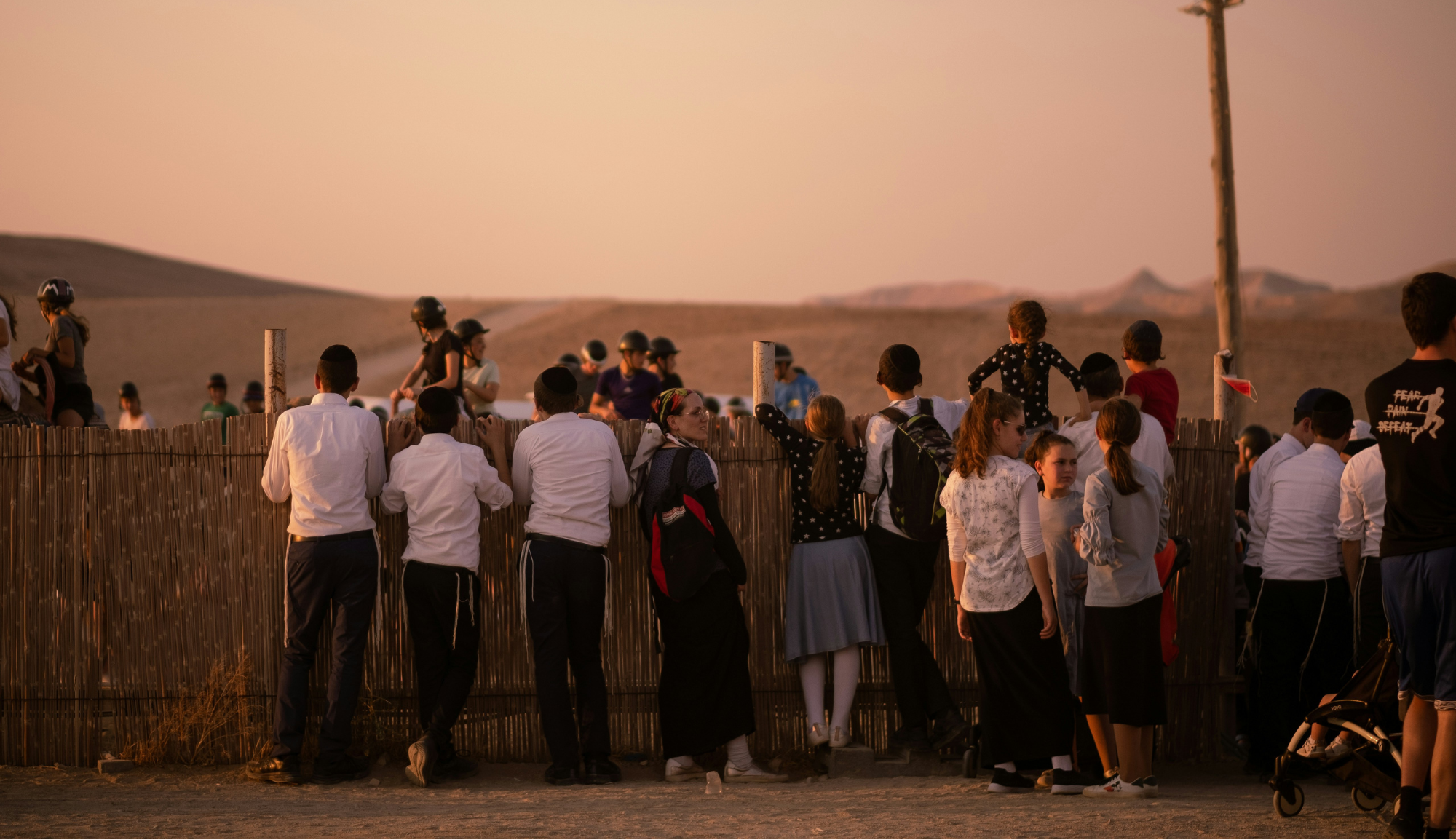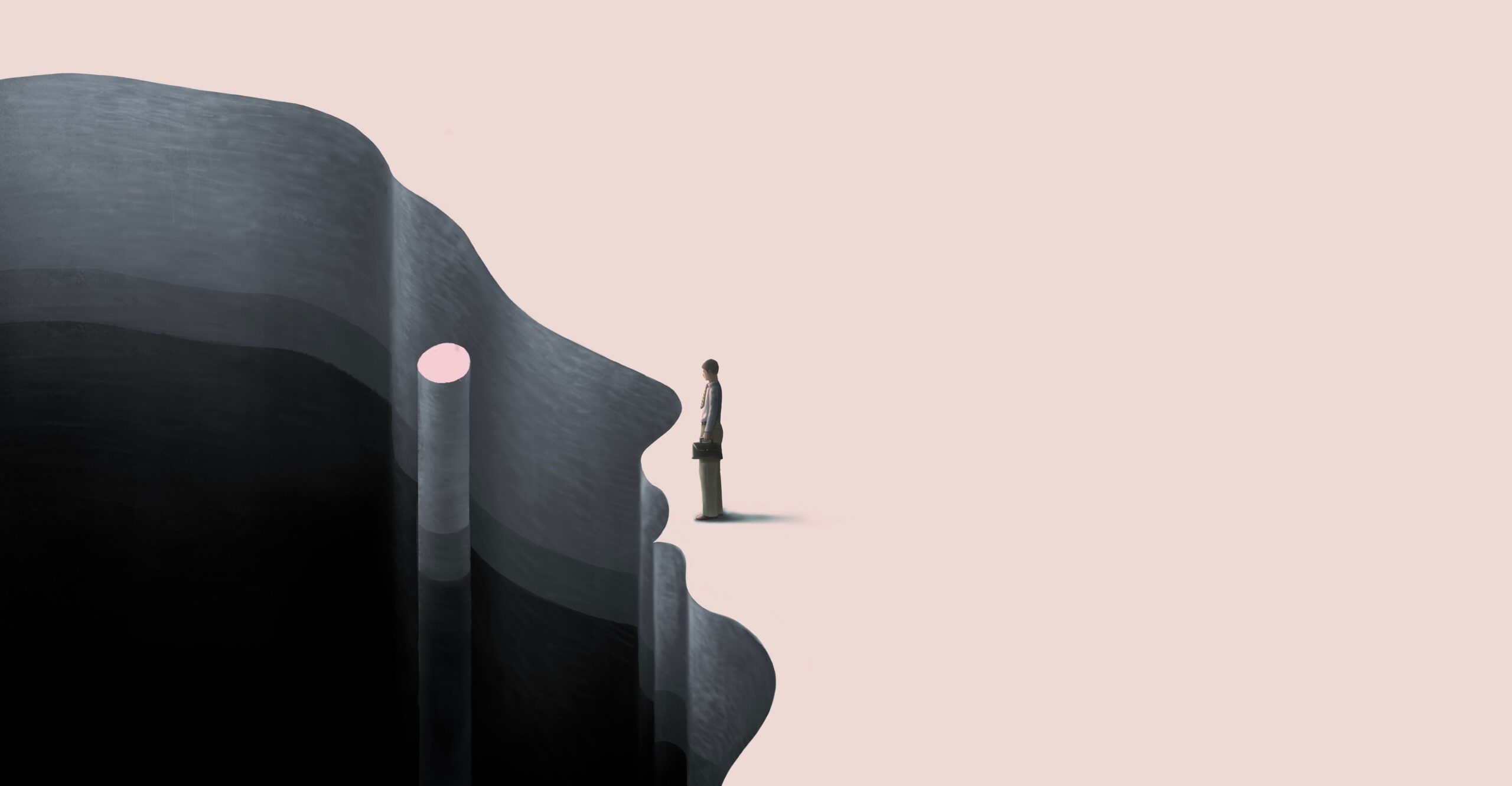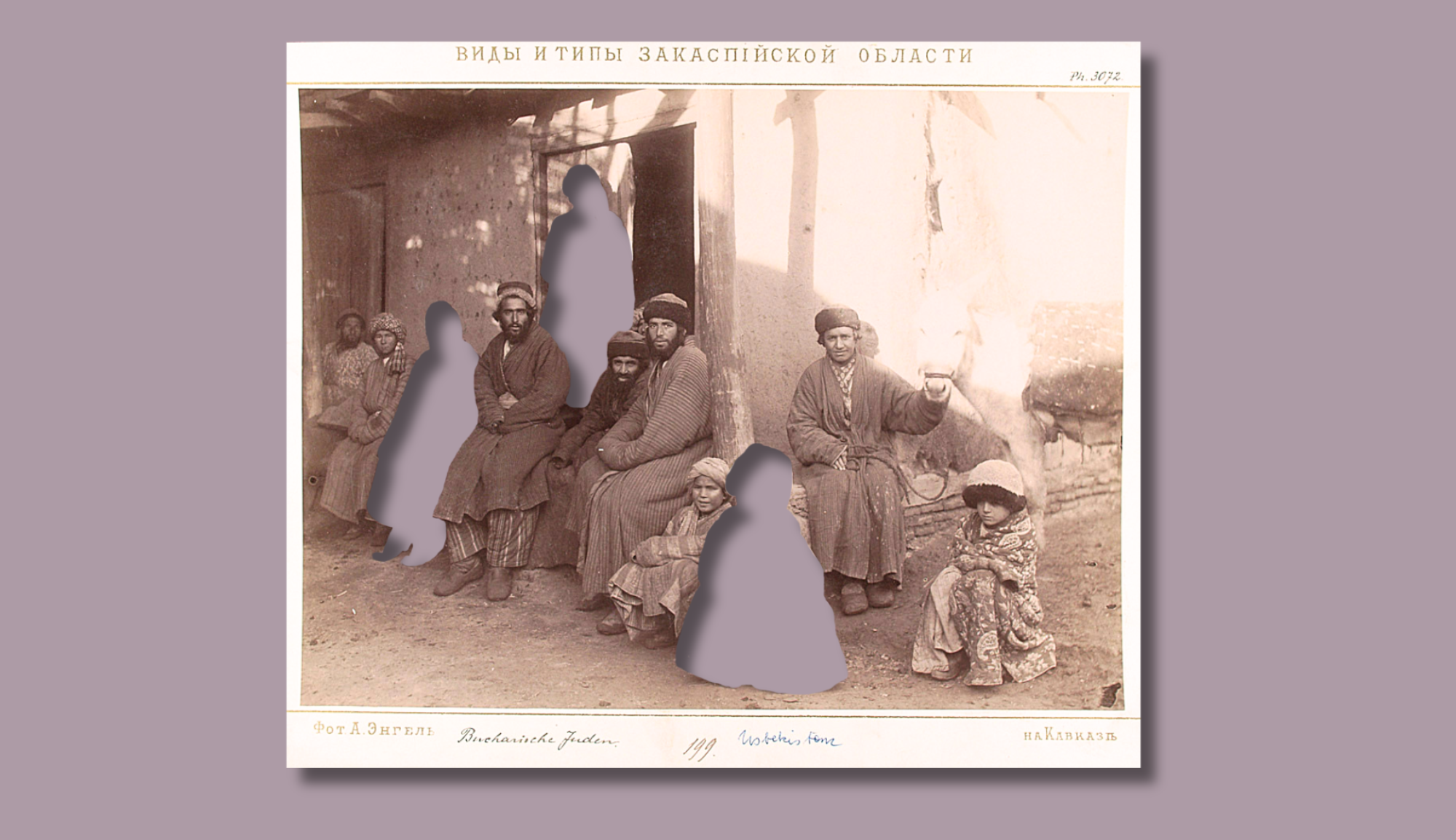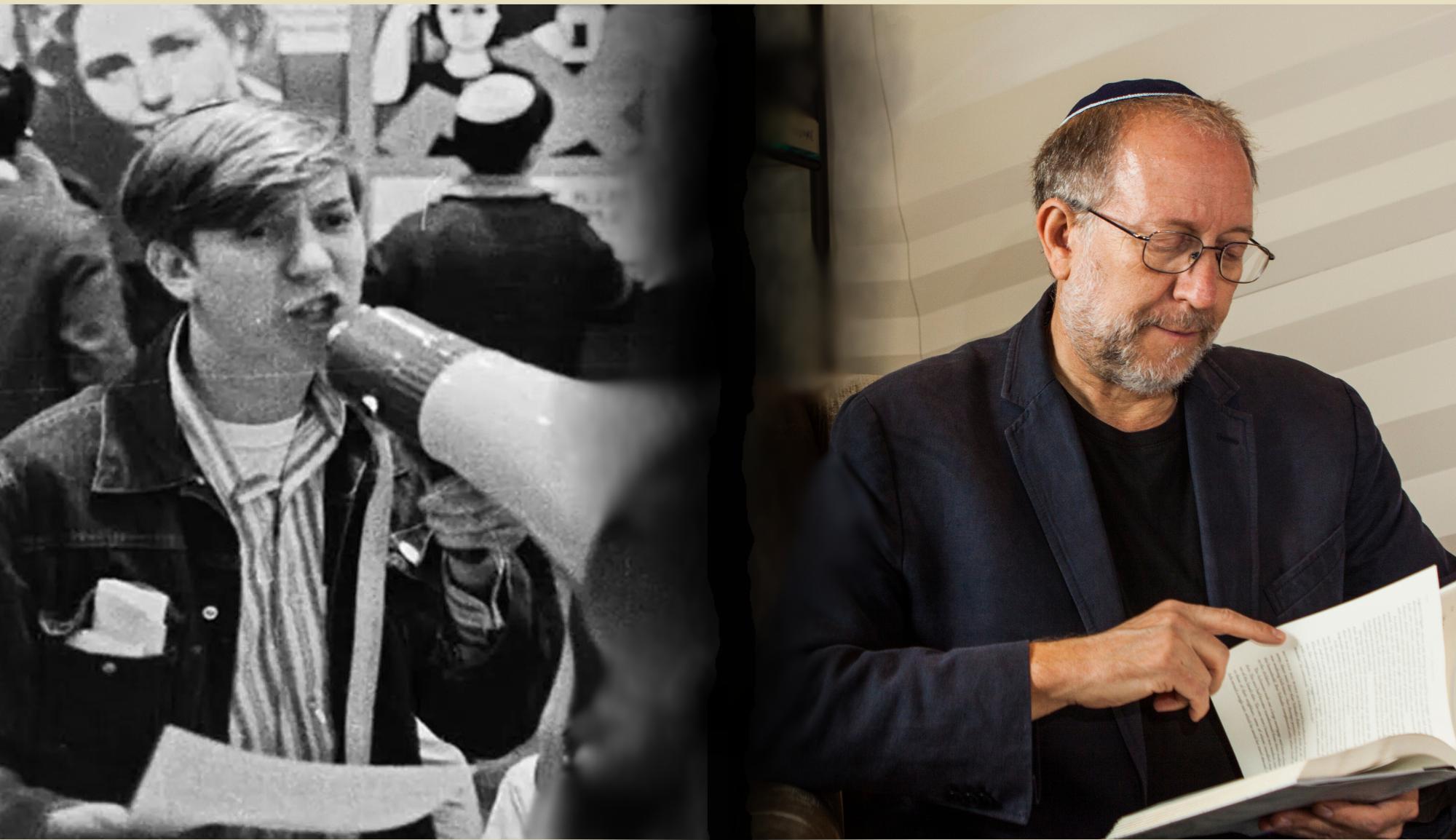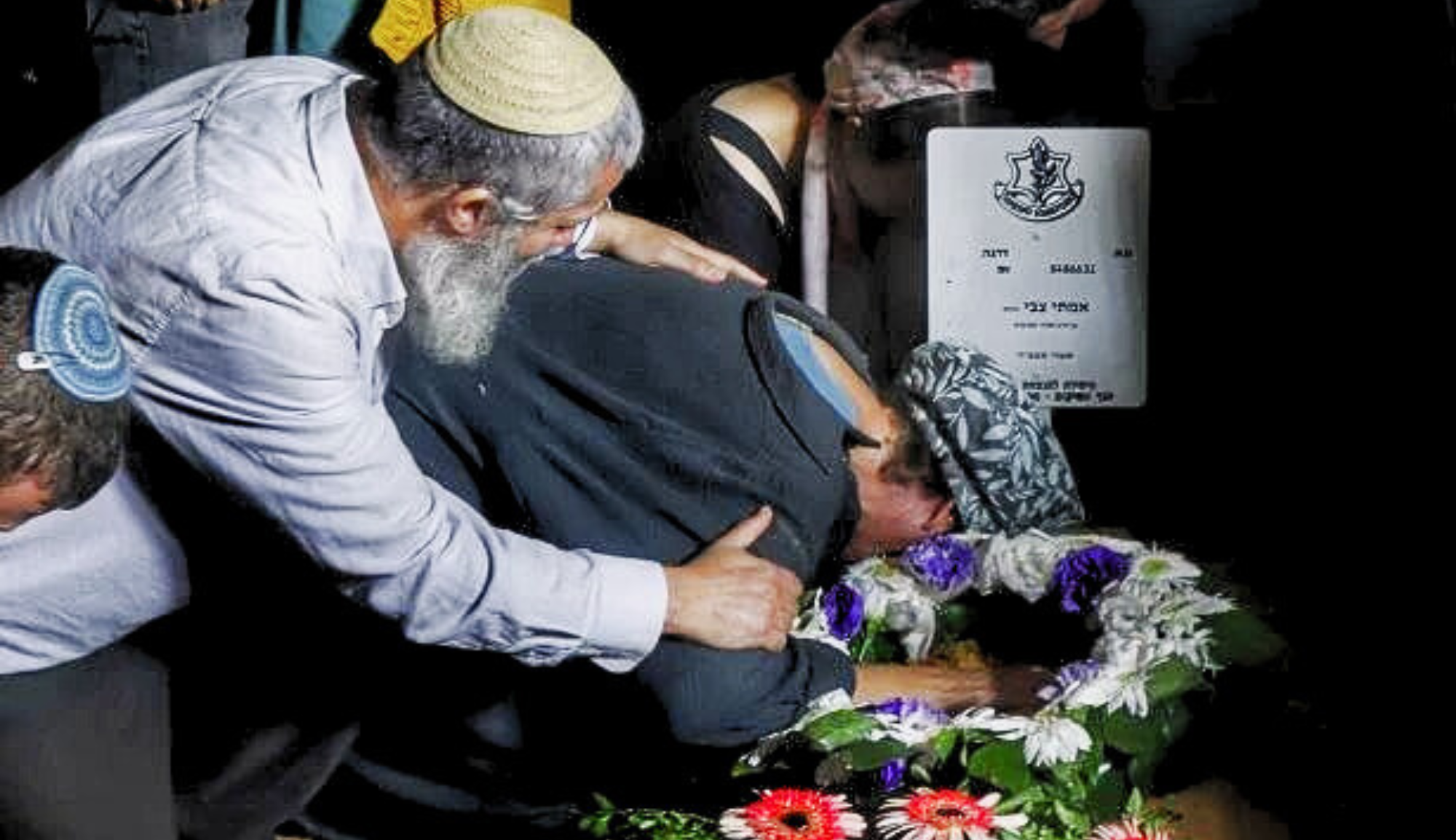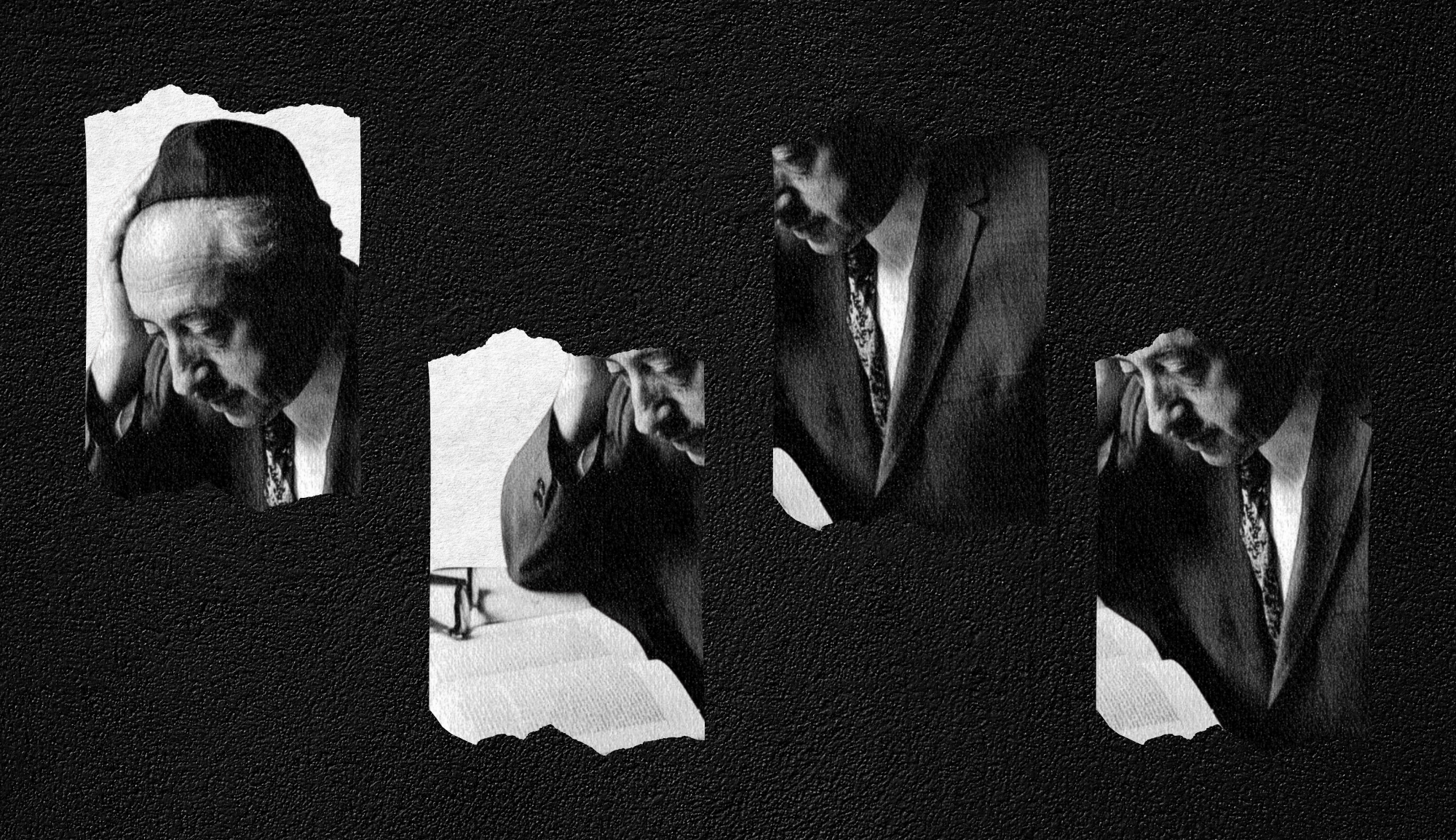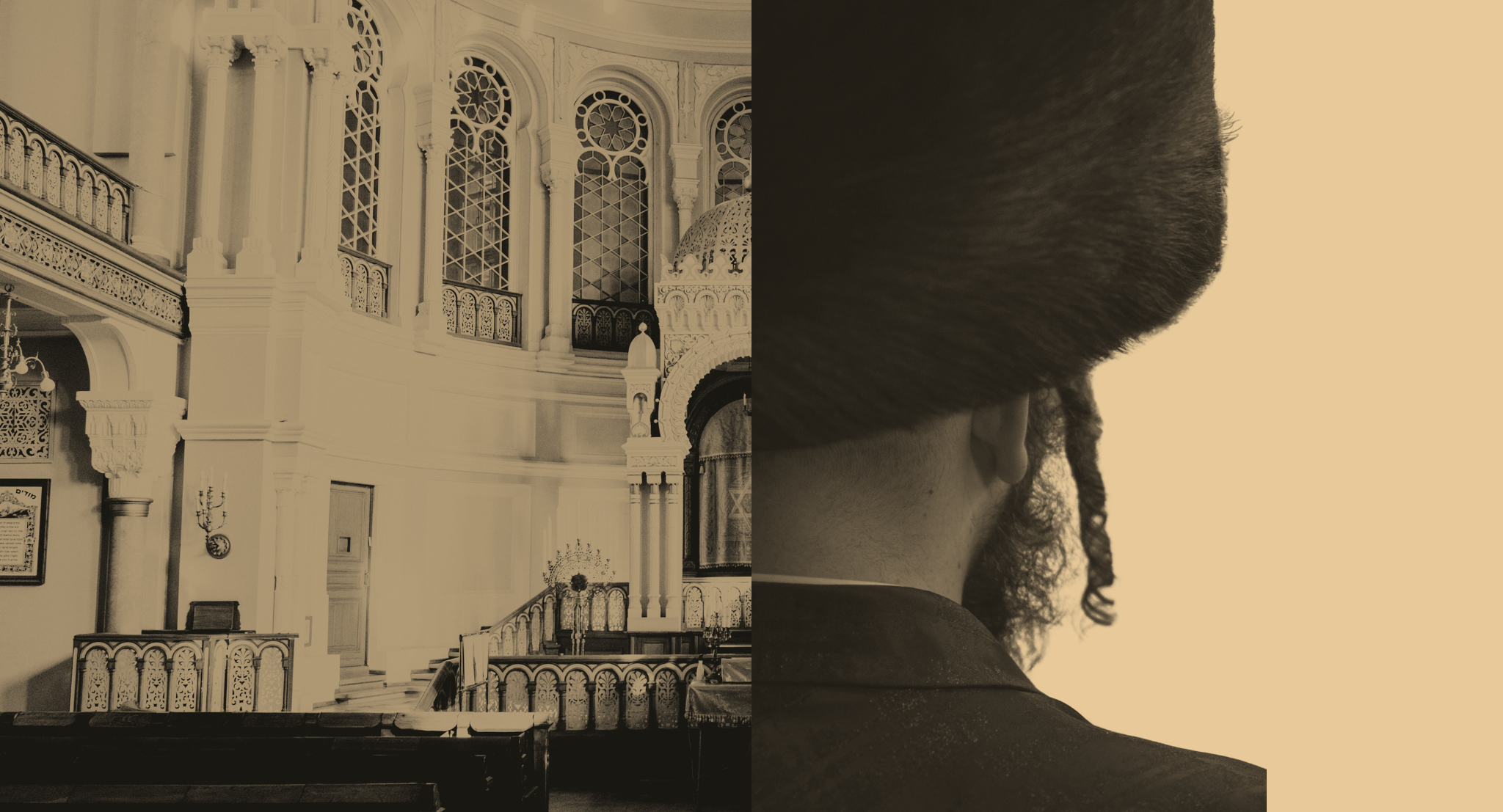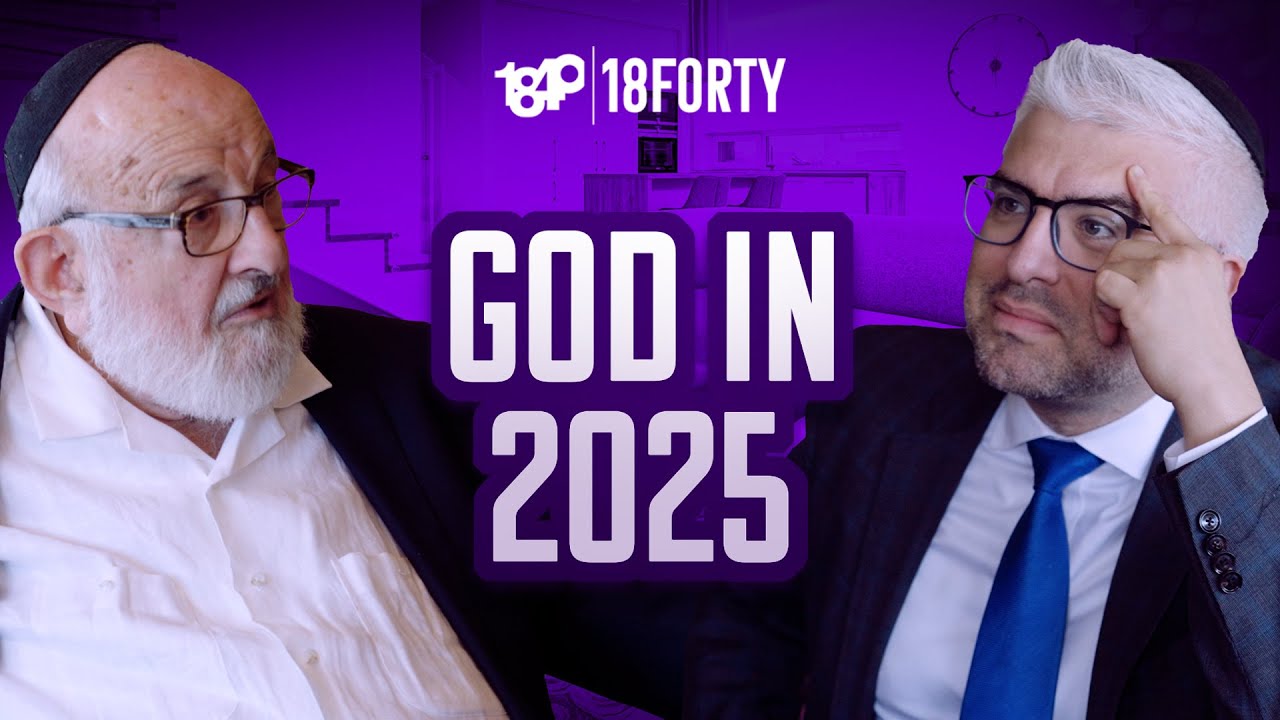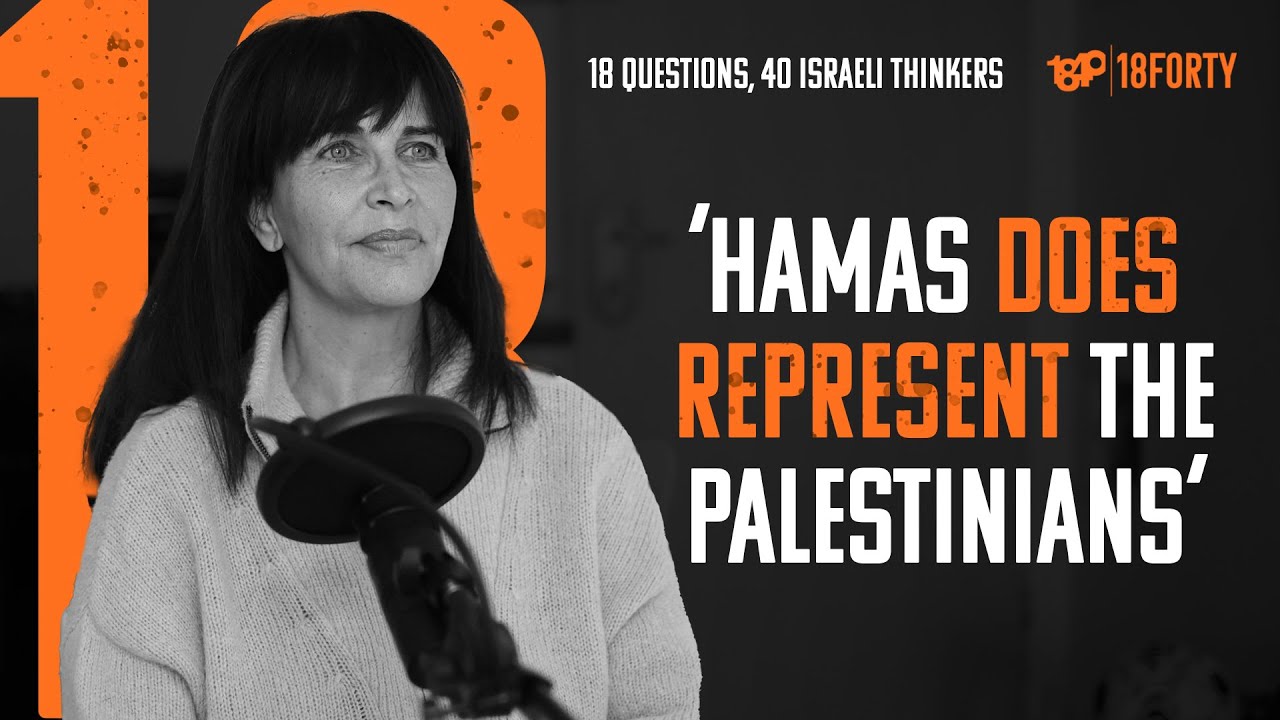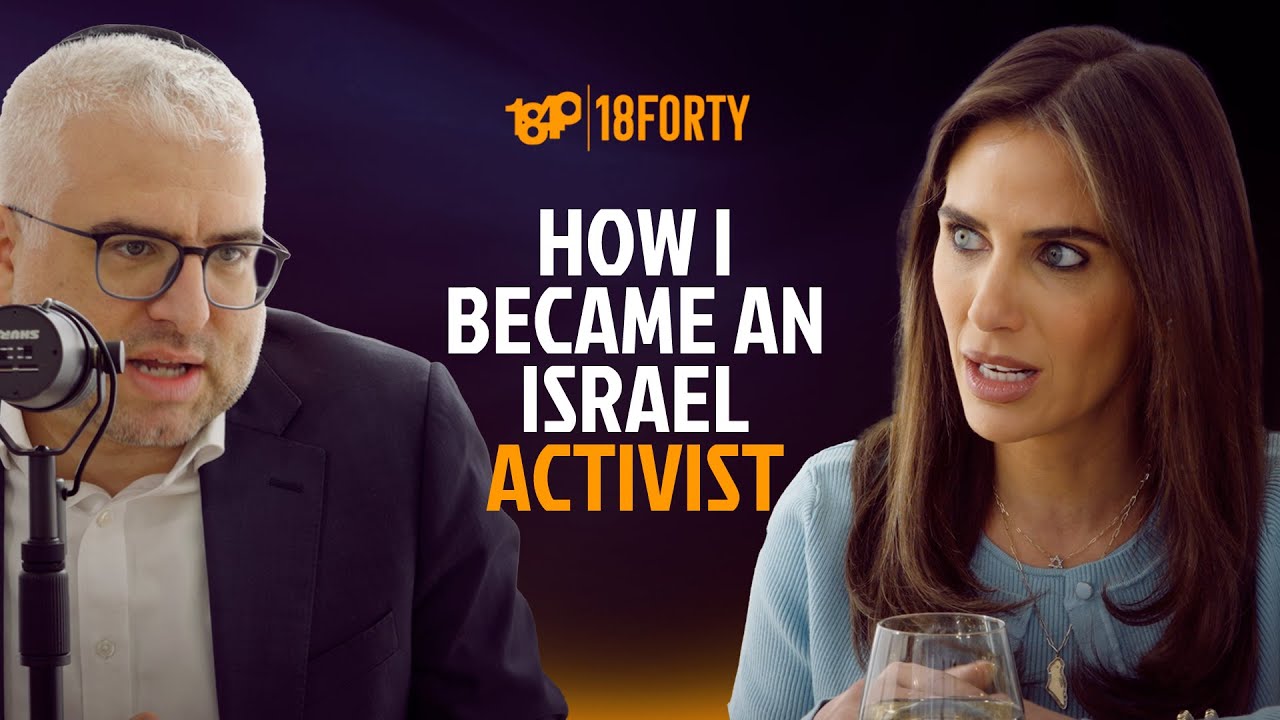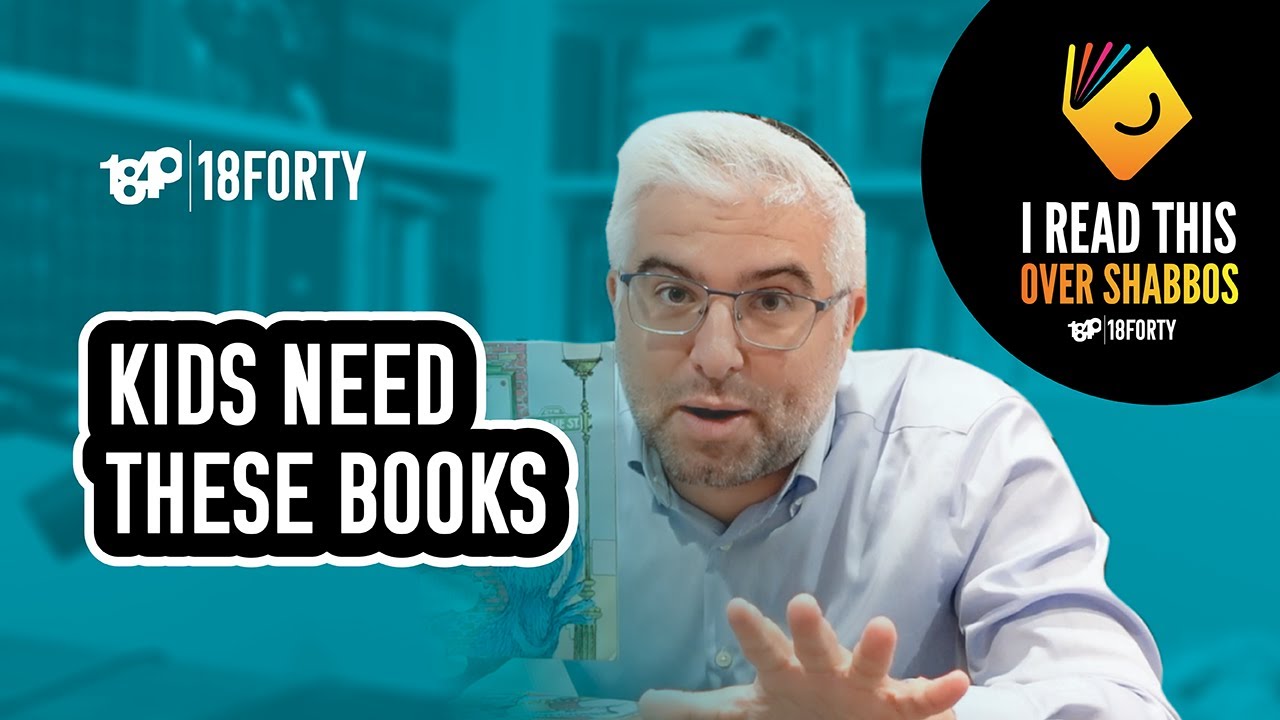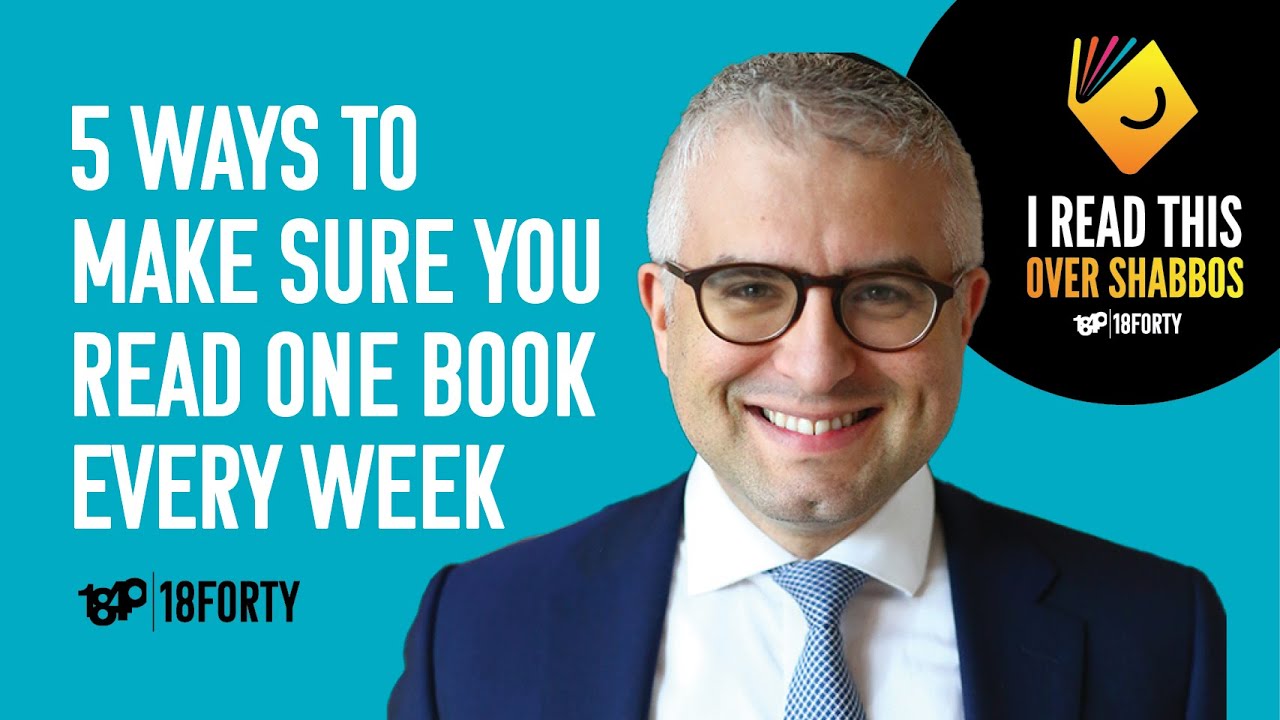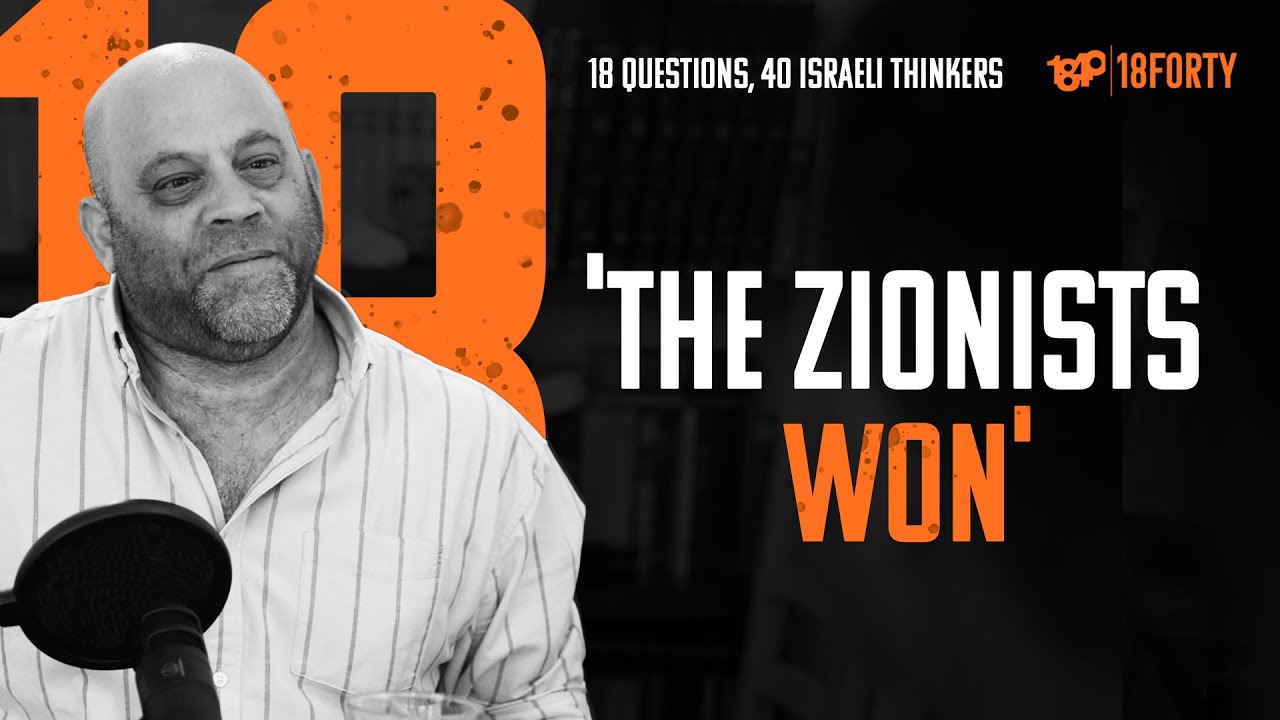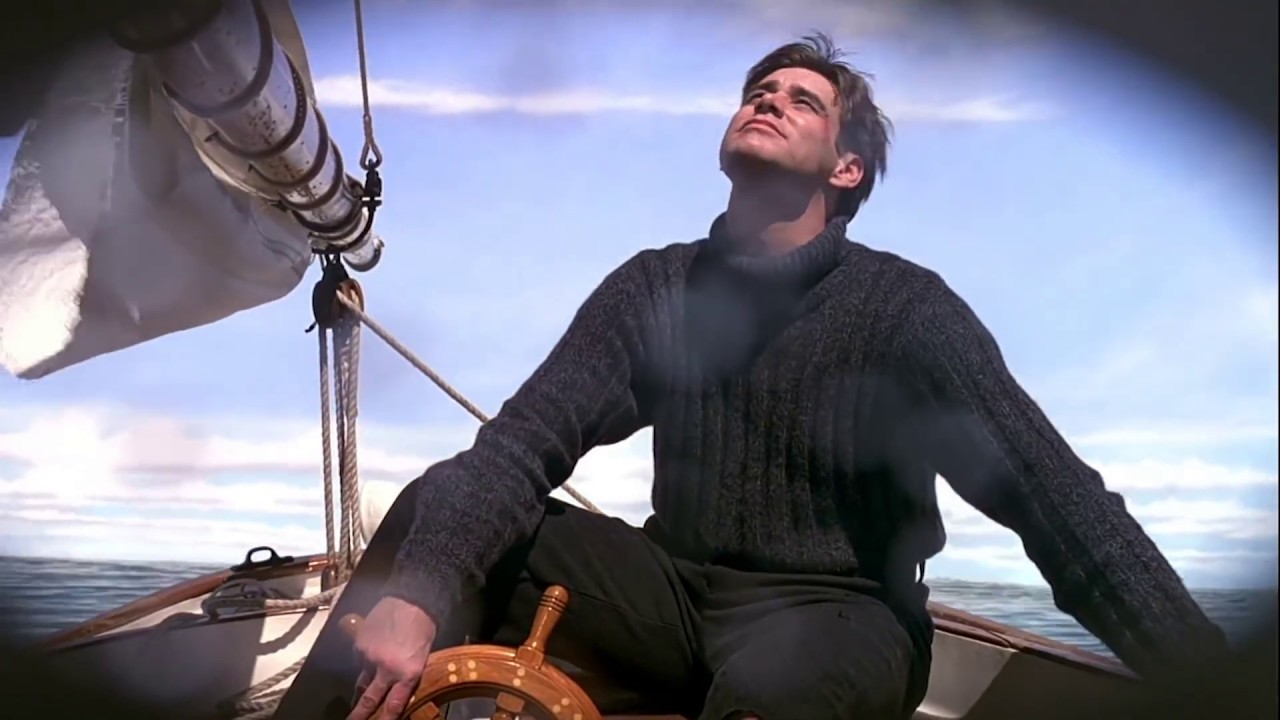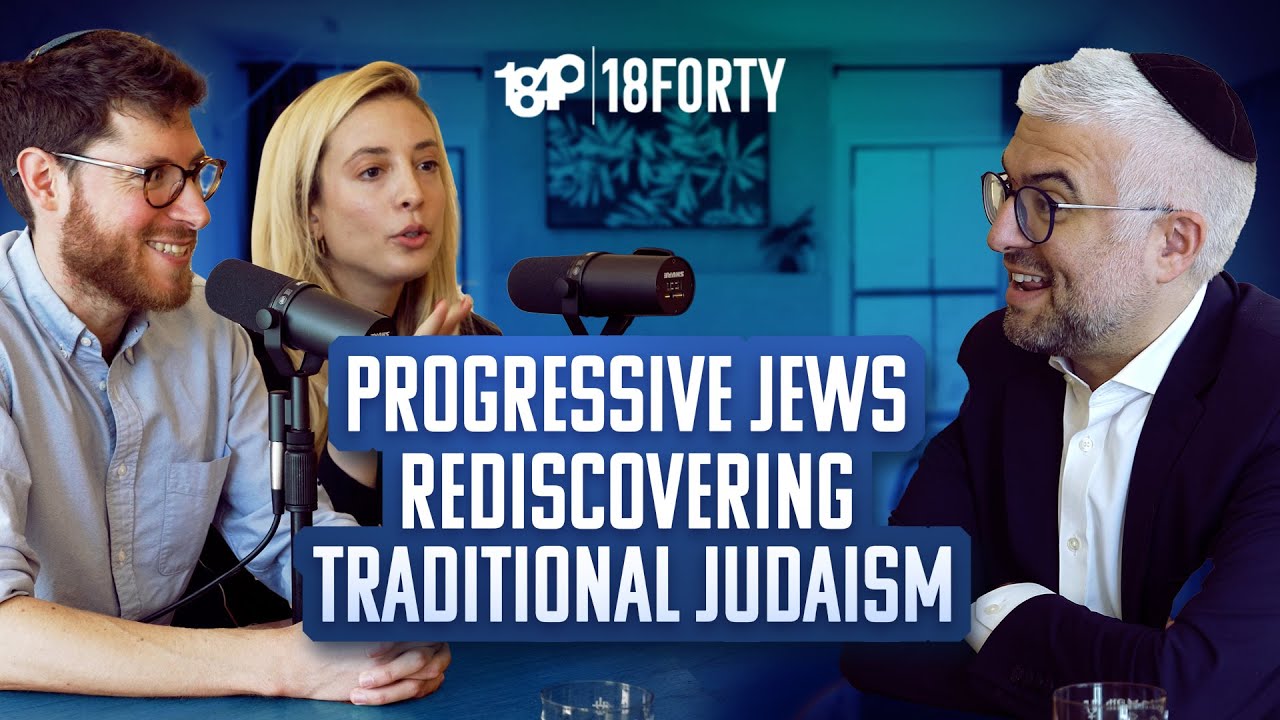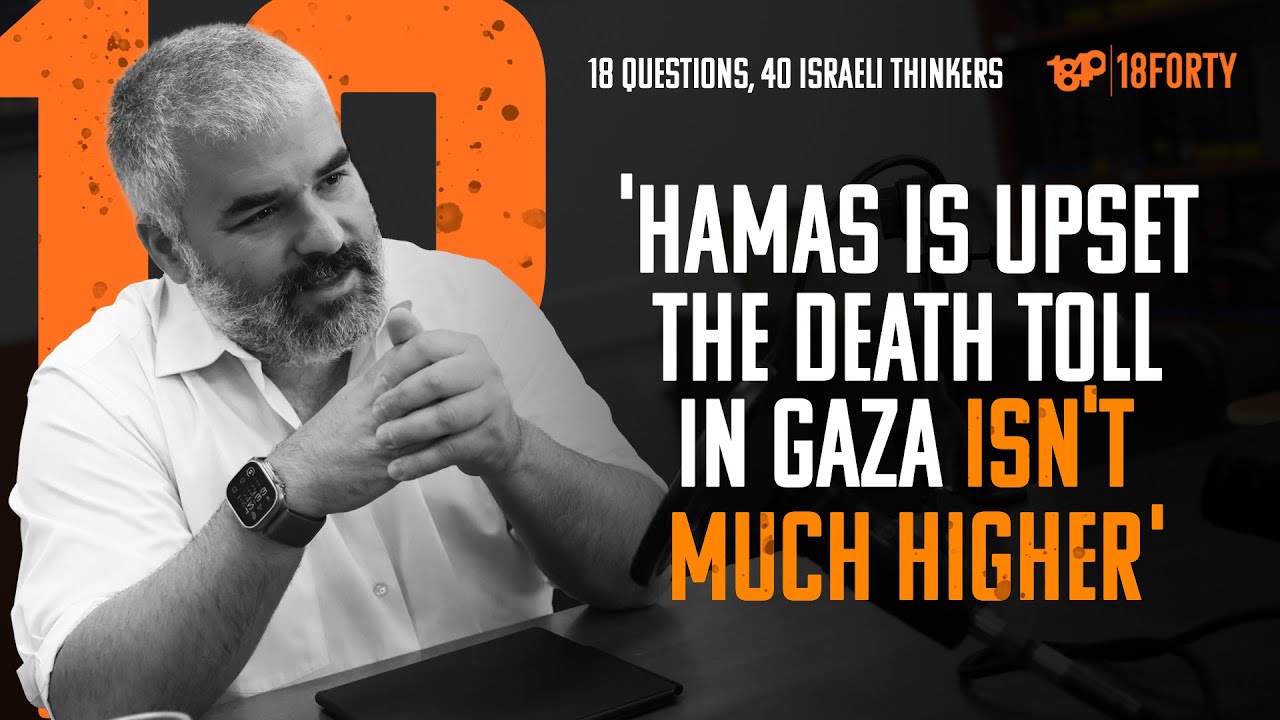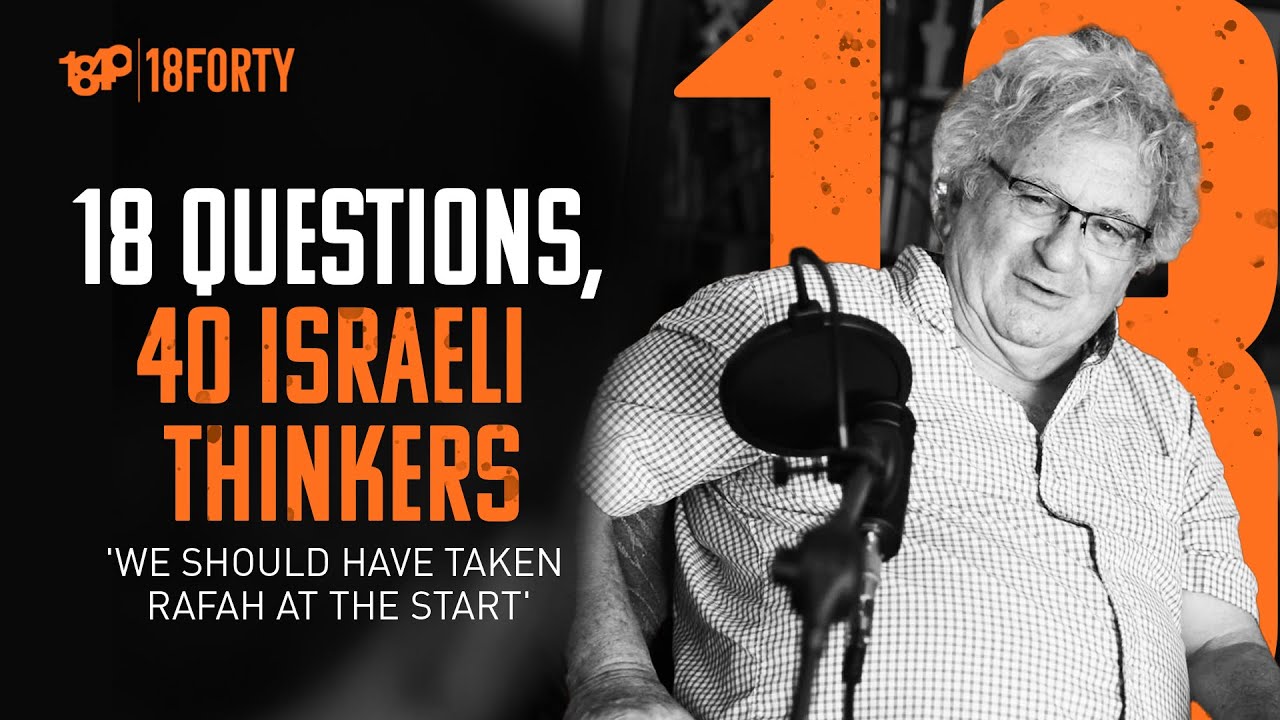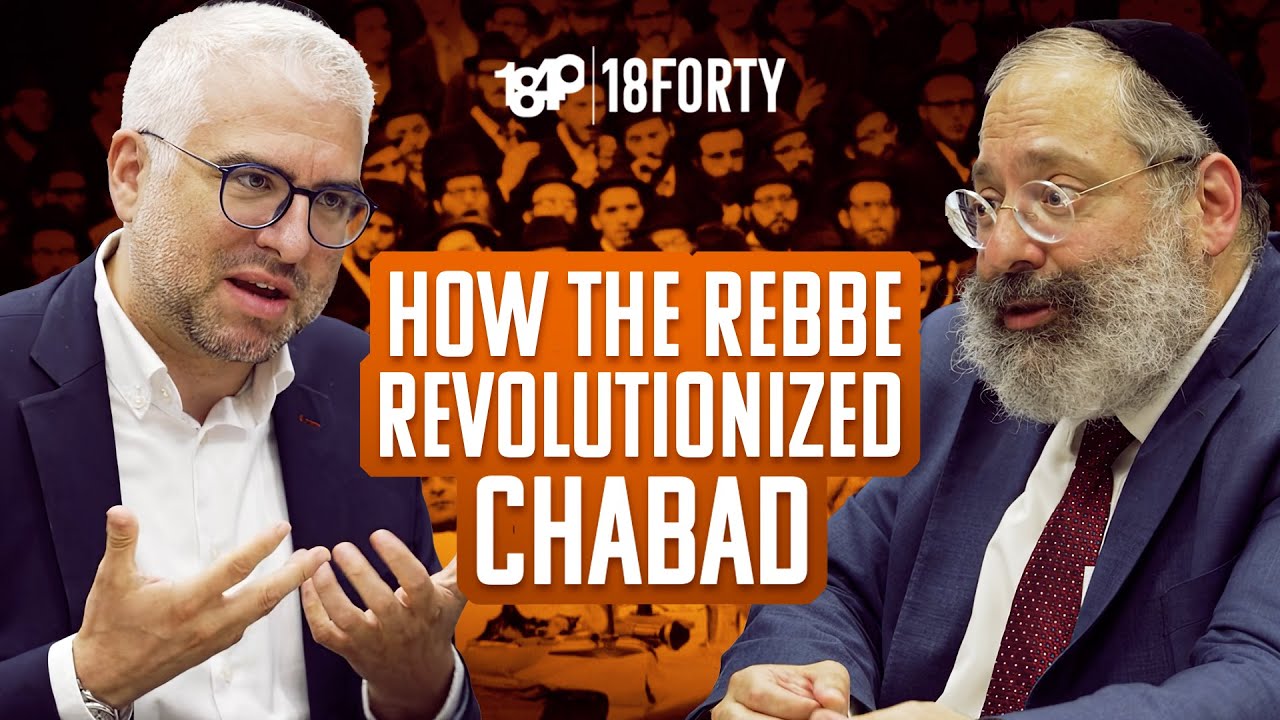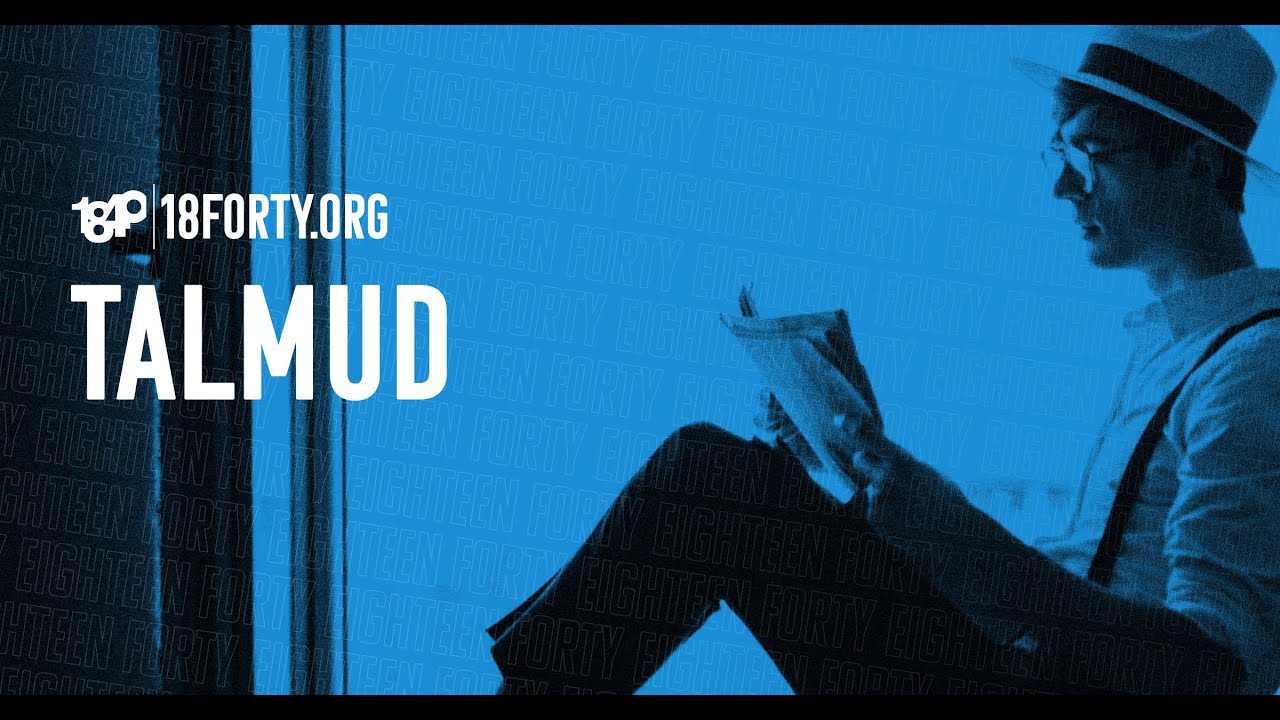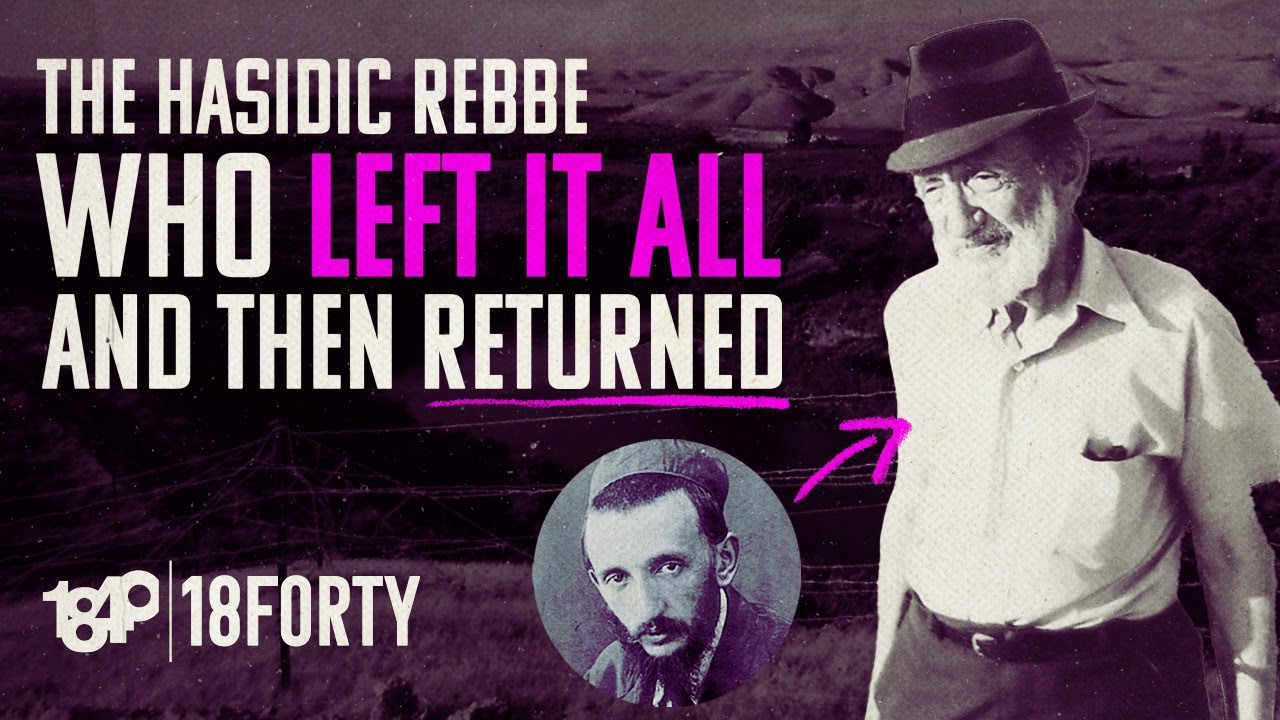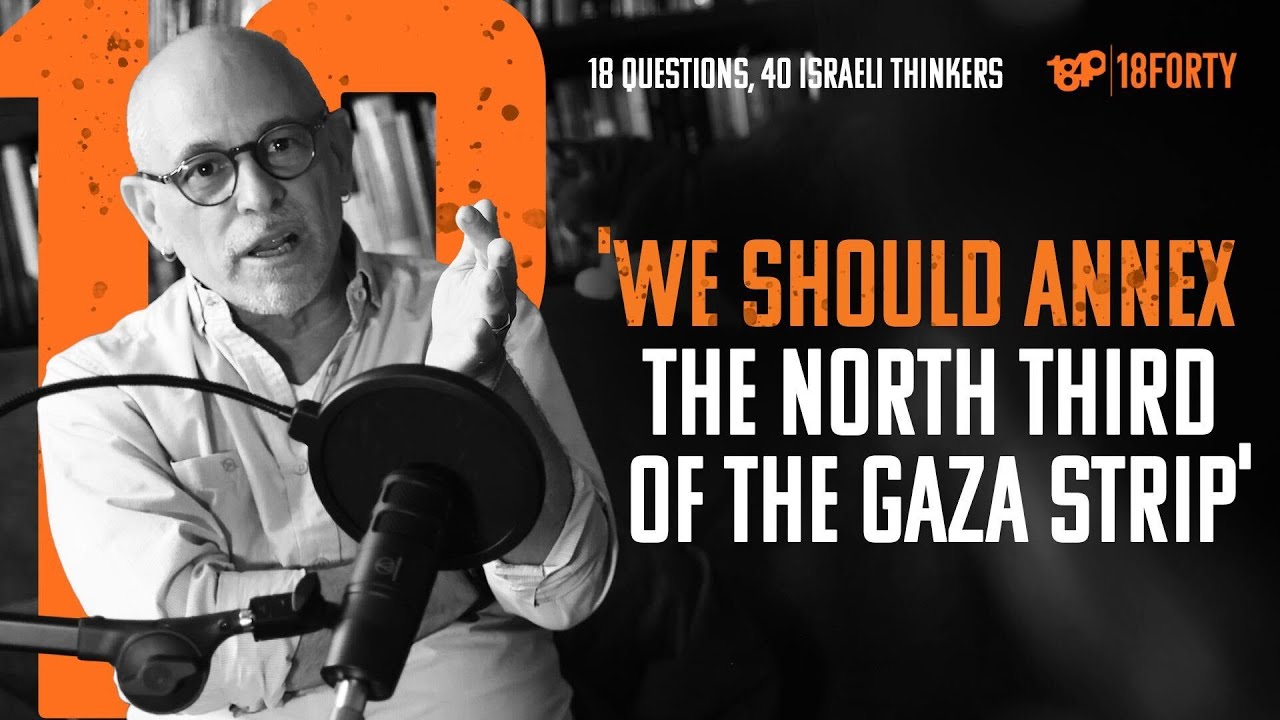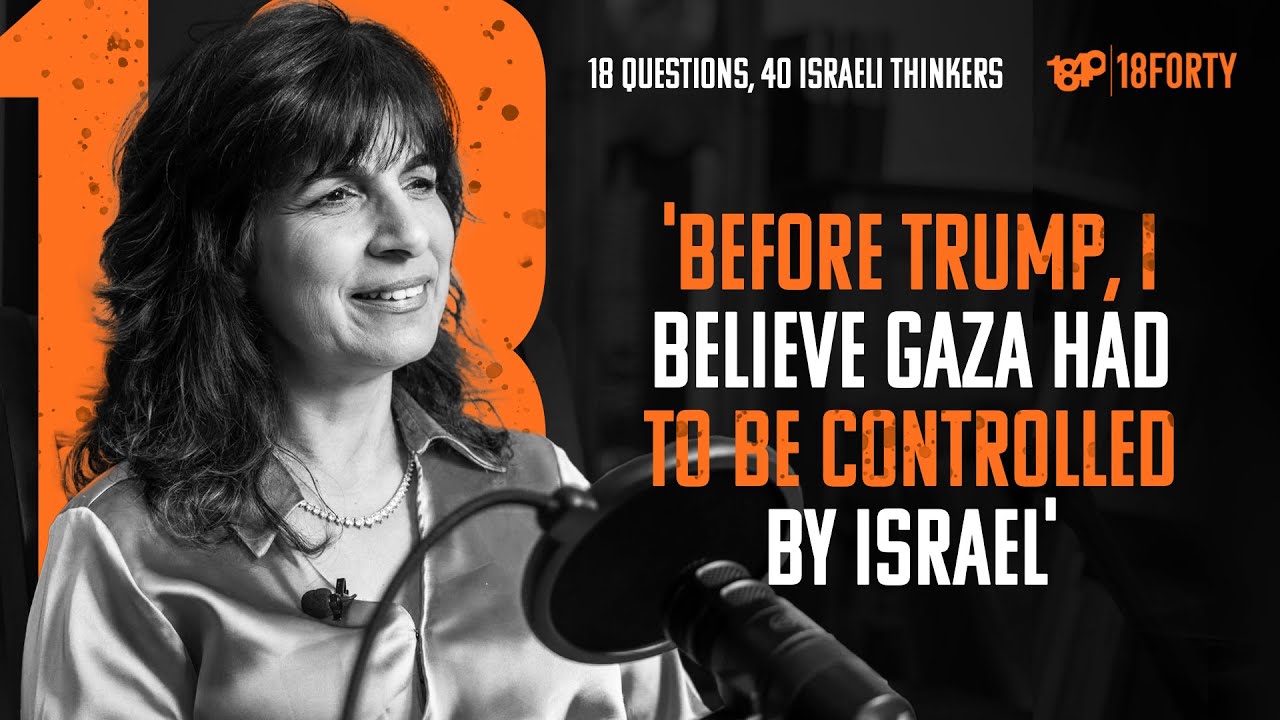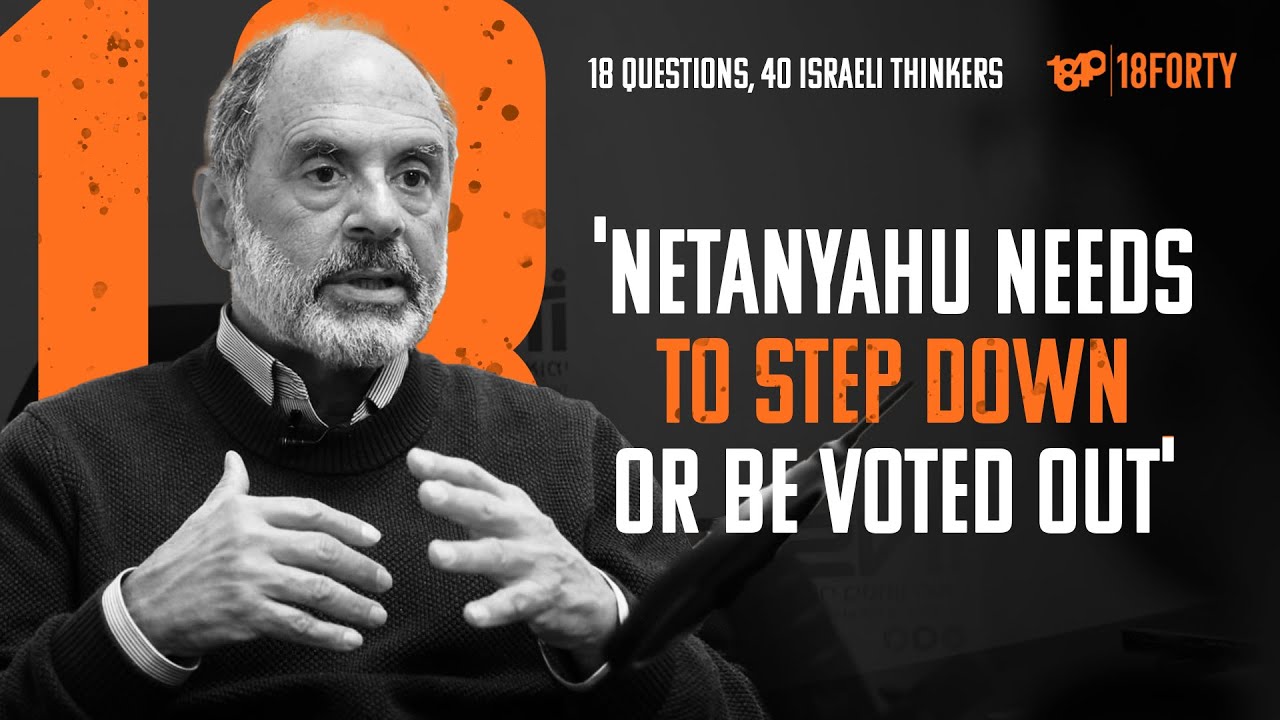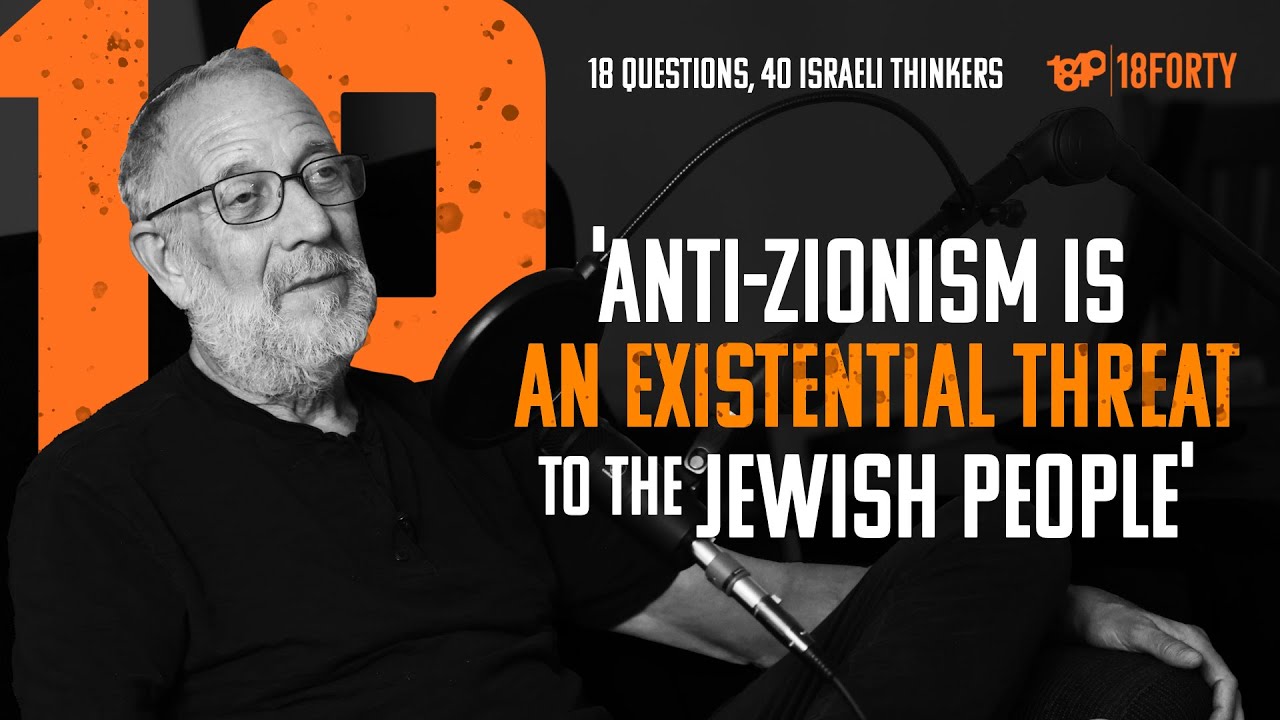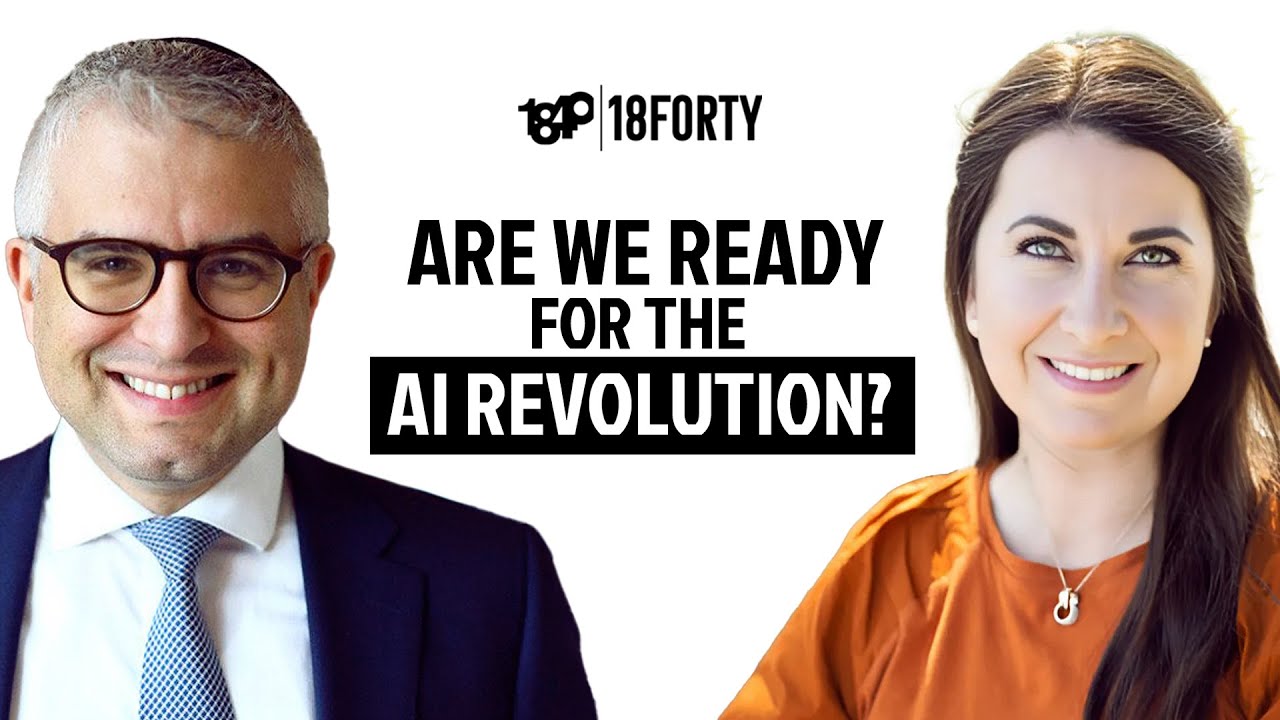
Summary
In this episode of the 18Forty Podcast, we talk to our favorite librarian, Michelle Margolis.
Michelle is no stranger to the 18Forty Podcast —she was one of our first guests, and today, she returns to debut our new Show & Tale series, and talk with us about the role of a librarian and the hidden world of Judaica and rare books.
Show & Tale is a new 18Forty video series that will take you inside some of the great libraries—both public and private—to explore books and treasures from Jewish history.
Michelle Margolis is the Norman E. Alexander Librarian for Jewish Studies at Columbia University. We spoke with her at Columbia University’s Rare Book & Manuscript Library, located in Butler Library.
- Where’s the best place to buy rare Jewish books?
- Why would a siddur need to be politically correct?
- Where should rare Judaica live?
Tune in to hear a conversation about edible glue, fake ivory, and death masks.
Interview begins at 15:04
Michelle Margolis is the Norman E. Alexander Librarian for Jewish Studies at Columbia University; co-director of Footprints: Jewish Books Through Time and Place; and President of the Association of Jewish Libraries. Michelle is a favorite past guest at 18Forty and joins us to talk about the work of a librarian.
References:
Harry Potter by J.K. Rowling
The Story of Dovid Bashevkin by Meaningful People Podcast
Rav Kook: Mystic in a Time of Revolution by Yehudah Mirsky
Gershom Scholem: Kabbalah and Counter-History by David Biale
Pursuit of Heresy, Rabbi Moses Hagiz and the Sabbatian Controversy by Elisheva Carlebach
Making of a Gadol by Nathan Kamenetsky
Footprints: Jewish Books Through Time and Place
The Prince of the Press by Josh Teplitsky
Encyclopedia of Jewish Book Cultures edited by Emil Schrijver
The Hebrew Book in Early Italy edited by Joseph R. Hacker and Adam Shear
A Sign and a Witness: 2,000 Years of Hebrew Books and Illuminated Manuscripts by William Gross, Orly Tzion, and Falk Wiesemann
“Books Weeping for Someone to Visit and Admire Them: Jewish Library Culture in the United States, 1850–1910” by Robert Singerman
“Top Five” by Dovid Bashevkin
“Top 5 Stuff that Get Yeshiva Guys Into Jewish Studies”
Between the Yeshiva World and Modern Orthodoxy: The Life and Works of Rabbi Jehiel Jacob Weinberg, 1884-1966 by Marc B. Shapiro
“The Dual Role of Rabbi Zvi Hirsch Chajes: Traditionalist and Maskil” by Bruria Hutner David
“Rupture and Reconstruction” by Haym Soloveitchik
“Facing the Truths of History” by Jacob J. Schacter
Lithuanian Yeshivas of the Nineteenth Century: Creating a Tradition of Learning by Shaul Stampfer
Jew Vs Jew: The Struggle For The Soul of American Jewry by Samuel G. Freedman
American Judaism: A History by Jonathan D. Sarna
The Shul without a Clock: Second Thoughts from a Rabbi’s Notebook by Emanuel Feldman
Tales Out of Shul: The Unorthodox Journal of an Orthodox Rabbi by Emanuel Feldman
“The Haredim: A Defense” by Aharon Rose
By His Light: Character and Values in the Service of God by Aharon Lichtenstein
The Book and the Sword: A Life of Learning in the Shadow of Destruction by David Weiss Halivni
Transcript
David Bashevkin:
Hello, and welcome to the 18Forty podcast, where each month we explore a different topic, balancing modern sensibilities with traditional sensitivities to give you new approaches to timeless Jewish ideas. I’m your host, David Bashevkin. And this month, we’re exploring books, books, books. This podcast is part of a larger exploration of those big juicy Jewish ideas. So, be sure to check out 18forty.org. That’s 1-8 F-O-R-T-Y dot org, where you can also find videos, articles recommended readings, and weekly emails.
I’m really lucky because growing up, I was always surrounded by books. My father was always reading, always learning. He would spend Shabbos afternoons by shtender learning Gemara. My mother was constantly, constantly reading, even more like eclectic stuff. She was always reading Chumash, but she would always have the New Yorker by her side, taking out articles. She would have tear out articles that she would love and paper them all over her office and was really grew up with a deep, deep culture of books.
I remember even from like a very young age, my mother would bring me to the library. Actually, my memories of going to the library are not actually to get books. Younger people may not even know this, but I would go to the library specifically when I was sick, I remember, and my mother would let me pick out a movie. A library was, aside from Blockbuster, our library used to have VHS tapes, a pretty decent collection actually.
And we would go to the library and I would go and pick out a movie, and they had a really solid collection. And my mother, I always remember, would go and chat with the librarians. And I was like, what? It always struck me as strange that my mother had a relationship. Like she knew them and they knew her, ask what are the new books coming in? What’s going on? What are the recommendations? And it was always strange. I never knew the people who were actually using and speaking to librarians. But my mother always did, which is why she always had a leg up on the best books that were coming out.
I remember in our home, we must have been not the first, but one of the first homes to get a copy of Harry Potter. Like my mother, like she was just up on what was coming out. And I remember, I think I was a little too old to read it, but my brother absolutely devoured all of them. But right when the first one came out, before it was a big deal, before the movies, before it was a major hit, I remember my mother found out about. It was recommendations that she had gotten from the librarian.
Why are we talking about books on 18Forty? Aside from the fact that obviously, I love reading and I think reading is part of Jewish history. I think it’s a lot more than that. I think that in our explorations and this kind of like the depth that we’re trying to cultivate in Jewish ideas and Jewish questions, in whatever those questions may be, there’s only a certain point to where the conversation can take you.
And at a certain point, you do need to kind of like put your head down and immerse yourself in the written word. If you really want to go to the very end and really want to get to the depth and sophistication and the nuance of certain ideas, you’re obviously not going to be able to get in just like a bite-size tweet. You’re not going to be able to get it just in some quick two-minute recap video. But even through conversations, we introduce ideas, but we don’t unpack all of them. And people always send emails. You know, there’s more to be said or they’ll give you a feedback or a critique. And they’re almost always right.
And the reason why they’re right is because this medium, this conversational medium inherently doesn’t lend itself to sequentially unpack the fullness of any idea, which a book does allow you to do. There are advantages of the audio medium, the conversational medium. It can be more personal. It can invite more of an experiential component, which I think is really, really important, and allow for scholars and people to integrate their personal experience with the scholarly ideas or whatever we’re investigating, whatever topic that we’re exploring. We don’t only explore scholarly ideas though. Recently, sometimes it feels that way.
But whatever it is, they allow them to have their more personal experiential lens to be in conversation in dialogue with the ideas that are normally found and unpack most sequentially inside of books. And it’s a conversation I’m constantly having with my partner, really in everything we do in 18Forty with Mitch Eichen, the reason we started this entire project.
And he’s always like, you know, the interview was great, but I have a list of 35 questions that I still have, I still need to unpack. And I always look at them and say, “That’s why these conversations need to be in dialogue with actual scholarship. They need to be in dialogue with actual articles, books, and then the books bring you back to the conversation. And the conversation brings you back to the book.”
I have always been a pretty, I don’t know if the word is vociferous. That’s a little bit of a highfalutin. It sounds a little braggy. I don’t want to use the word “vociferous”, but I’ve always loved reading. Let’s put it this way. I’ve always loved reading.
I think one of my most cringeworthy moments on any interview was actually, I was one of an early guest on a podcast called Meaningful People that I’m sure you’ve heard of and kept track of some of the unfolding drama as it relates to the Jewish podcasting world. But I was one of their early guests and they actually asked me on the show, how many books do you think that you have read? And I’m much better at reading than I am at math. And I was like, I like trying to like do the math in my head. I have no idea how many books. I don’t have a running list.
And I was like, I don’t know, like 10,000. And my nephew, Efraim, who actually is quite gifted at math, ran the numbers. And he looked at me a while after he listened to the podcast. He’s like, “Dovid, there’s no humanly possible way that you’ve read 10,000 books unless your early childhood was not spent in school, but reading like 11 books a day. It’s not really possible.” He crunched the numbers.
So, I don’t know what the number is and the number’s not important, but I really always tried to be reading. And I began recording. And the first one I did was in January, late January of 2020. That seems like universes ago. But it was after that faux pas where I vastly overestimated and you don’t have to send in letters. I know I have not read 10,000 books. I have not read anywhere near that. But I began to wonder like, “Well, how many have I read?” And I said, “I read about a book a week. I try to finish a book every week. I usually start on Shabbos and finish it over the course of the week.”
So, I figured at the end of January, I actually posted on Twitter a little bit of a longer message than what I’ve begun doing now. But I posted a book that I read called Rav Kook: Mystic in a Time of Revolution by Yehudah Mirsky. And I wrote, “I’m embarrassed I haven’t read this sooner. Over Shabbos, I read Yehudah Mirsky’s biography of Rav Kook, so deeply moving, so readable, so brilliant. Do yourself a favor, read it.”
And that was the first time that I posted online what I had been reading over Shabbos. I thought this would become like a weekly custom of mine, but I actually fell off of it. I didn’t post another book until April 17th, 2021. And it was on April 17th, 2021 that I actually posted, “I try to read a book every Shabbos. I’m going to try to post each week’s book after Shabbos. I’m going to try to do this weekly, maybe with some thoughts, maybe I’ll forget after this one. This is what I read this week. Wow book.”
And the book that I had posted, which I have recommended before, a jaw dropping book, probably a book that really changed the way I think about Jewish thought and Jewish history is a book by David Biale called Gershom Scholem: Kabbalah and Counter-History.
And I actually forgot the next two weeks and I stopped. I didn’t post. But then I began a weekly custom. And I’ve kept up ever since really the last two years, every single Motzei Shabbos, I post on Twitter what I read over Shabbos.
And obviously, I don’t always post a long review. I try. I try to do it, but I began kind of on a weekly basis posting in May, early May, 2021. The first book I did was the Pursuit of Heresy, Rabbi Moses Hagiz and the Sabbatian Controversy by Elisheva Carlebach. I’m 50% sure I mispronounced his last name. I don’t know if it’s Hagiz or… I forgot how to pronounce that last name. Okay. You’ll write it and tell me how I mispronounce that.
But be as it may, every Motzei Shabbos I post what I had read over that Shabbos. And obviously, I don’t always finish the book over Shabbos. I try to share some of the key highlights and ideas. And for me, it’s a way of both transforming the discourse on social media. We can share ideas. We can share what books have excited us.
And more importantly, it kind of transforms the Shabbos experience. I know a lot of people who Shabbos is for them is more difficult or they’re less observant, and they’re less engaged on Shabbos. And this becomes a way, like say, you start a new book and Shabbos can become that for you in a very special way to immerse yourself in a world of ideas.
It doesn’t always have to be a Jewish book, but it transforms for me, at least the Shabbos experience, where I literally begin measuring my own development and my own growth through time through the books that I read. Every single week has really, really transformed that. And I think that so much of what we’re doing on 18Forty relates back to book culture and immersing ourselves in the ideas and the excitement that come out in books.
And that’s why I thought for the summer, we could relax a little bit to some degree. It doesn’t always have to be so heavy talking about big theological social issues that we are so excited to confront and grasp, but we could talk about book culture. Because book culture is the repository of Jewish ideas. It’s the repository of any ideas that we transform ourselves and we engage with new ideas. Really, the great place where we find them is always going to be in books.
And I figured that we could do a summer series on books themselves, the culture of books, how we find books, the great writers, the process of writing, all of these ideas of how books come to be, so to speak.
And I hope that this is a larger launch, not just for a summer series, but a larger launch of content powered by 18Forty, not just of great book lists, which we will continue doing and have more lists. And I’m going to share some of my own lists in the outro, so stick around for that.
But really a repository of more content surrounding great books and books themselves. And that’s why I’m really excited to announce one of the new projects that we’re going to be doing on 18Forty is something called Show and Tale, Show and Tale, not Show and Tell, but Show and Tale, which are the great ideas and stories that are buried within Jewish libraries, and the first library that we actually visited. And I want to visit both public and private libraries.
So, please message me if you have incredible treasures of Jewish history and Jewish ideas lurking in your home office, in your living room, we want to visit you. We want to explore them with a camera, with a video and really open up the world of libraries, both public and private to the public audience.
There’s been a newfound interest in auction houses and ideas. And I think a series to really open up through video what are the treasures of Jewish history, Jewish books, Jewish ideas that are, they’re not closed off, they’re open if you can find them, but open them up even more, make them more accessible to the public, whether it is the libraries of great institutions and universities, or whether it’s a personal library, somebody who’s a personal private collector and has these incredible treasures in their home.
I hope that Show and Tale is going to be something that’s going to open up this universe to the larger 18Forty community, to our listeners, to people who are engaging in what we’re trying to build, which is serious and sophisticated engagement with maybe a little bit of a popular twist and a little bit building doorways to profound ideas, I hope in some way that we’re able to do this.
And I hope that this project, Show and Tale, that we’re launching right now is going to be available on YouTube, check it out on social media. But we began with a library that is run by a former guest of 18Forty. And it is the guest that I am so excited to talk even more with today about what it means to be a librarian. And that is the newly elected President of the Association of Librarians.
I know I’m getting the precise name of the association wrong, and that is Michelle Margolis. She was a guest that we had originally in our series of Talmud to tell us about some of the development of the Talmud page. And I am so excited. She is so incredibly gracious with her time. She invited us in not just to record a podcast, but to actually film inside of the Columbia Libraries in Columbia University. And that is a library that she runs, specifically the Jewish Studies collection. I hope I’m not butchering this and getting this all wrong.
But I just want to say, more than her grasp and her scholarship, what really makes her stand the part is her graciousness. And really, if I were to highlight the prototype of what a librarian is, it is not from the great Seinfeld episode, the library cop. But it’s people like Michelle Margolis, who were so incredibly gracious and are looking to open up doorways to the world of books and ideas that makes me so excited to share our conversation on 18Forty today with Michelle Margolis, the Norman E. Alexander Librarian for Jewish Studies at Columbia University.
So, thank you so much for joining us. Again, it really means a lot. And I really want to kind of zoom in on your expertise and really begin with a very basic question, which is what does a librarian do?
I think a lot of people think of a librarian, at least for me, you know, the time that you would have in the library in elementary school, they would help you pick out books. They knew the latest stuff coming. I think they were involved in setting up the Scholastic Book Fair, which is where all people first fall in love with books. But you are not running an elementary school library. You’re running a very serious library, the Columbia Judaica collection.
Michelle Margolis:
Although I would say that elementary school libraries are very important.
David Bashevkin:
Super important. Oh, God forbid. I would never disparage an elementary school library. But maybe you could take us through and help us understand what does a university librarian do?
Michelle Margolis:
Sure. So, yeah, there are lots of different kinds of librarians. And when people ask me this, I always say, I could not do the job of a day school librarian or a public librarian or a librarian who works in a different field than the one I do.
So, I work at a university. And my job is pretty much divided into, I say it is three, which is really two, which is reference. So, I work with anybody from anywhere starting at Columbia. So, Columbia students, Columbia faculty, anybody who is doing research in a particular area to help them with their research.
So, I have to know not all of the information, but how to find at least the vast majority of the information. And so, if somebody’s starting a research project, they’ll come to my office and we’ll sit down and we’ll talk about the relevant databases and primary sources and how to actually find material for the research that you might be doing.
Another piece that I do is acquisitions. So, I acquire books and databases and manuscripts, and sometimes all different kinds of media for the collection, supporting specifically Jewish Studies. So, I need to be aware of current publishing in Jewish Studies. I need to know what databases are coming out in Jewish Studies and sort of everything in between. And then the third piece, as I said, that is really both of the first two is this-
David Bashevkin:
Two that are really three.
Michelle Margolis:
Two that are really three.
David Bashevkin:
Sounds very Mishnaitic.
Michelle Margolis:
Is special collections. So, I’m privileged to work in a collection that has an incredible, rare and unique special collections, collection as well. So, rare books and manuscripts and archives and a Yiddish typewriter and all sorts of other things.
David Bashevkin:
Well, help me just understand that last category, then we’ll break down the first two special. What makes them special exactly?
Michelle Margolis:
Often, it’s that they’re unique, which means that-
David Bashevkin:
There’s a theme?
Michelle Margolis:
… they are the only thing of that in the world. Collections can be special in different ways. So-
David Bashevkin:
What’s an example?
Michelle Margolis:
The easiest example is rare. So, it’s expensive. So, something’s expensive. It’s hard to find. There aren’t a lot of them out there. They’ll go into special collections. When I say unique, I mean that it is the only one of that item. So, for instance, we have Yaakov Emden’s Tur, his Arba’ah Turim. We have the only copy of Yaakov Emden-
David Bashevkin:
That belonged to him, his annotations. Exactly.
Michelle Margolis:
… that belonged to him. There are other copies of that particular imprint, the 1702 Berlin Arba’ah Turim, but ours is unique because it belonged to this individual, which isn’t to say that somebody else’s copy of the 1702 Berlin Tur wouldn’t be in their special collections libraries. It’s old enough, usually pre-1800 is the cutoff for age.
Although I will say also that there are plenty of modern things that go into collections, to special collections. In one case, when I was in graduate school, I worked at the Jewish Theological Seminary, and I noticed in their collection was the first edition of the Making of a Gadol, because that is a rare book.
David Bashevkin:
Excellent. In a way, I have a special collection. I also have a first edition.
Michelle Margolis:
So, there you go. So, a book can be special for all sorts of reasons. Often it’s because it’s rare because there aren’t a lot of them. Sometimes a collection of materials make them special. So, if you have a lot of a particular kind of book together, then suddenly it’s the sum is greater than its parts. And it becomes a special collection.
David Bashevkin:
Do you have any like a thematic special collection that they’re all kind of grouped together?
Michelle Margolis:
So, the best example actually that I can think of is at the University of Arizona, where my colleague Rachel Leket-Mor curates a collection of Israeli pulps.
David Bashevkin:
Pulps.
Michelle Margolis:
Pulp fiction in Hebrew. And it’s unique because they are probably the only collection in the world that specifically has this particular genre. So, things like that when you-
David Bashevkin:
I’m going to be honest with you. And I’m sorry, the only thing I know about pulp fiction is the actual Quentin Tarantino movie. I don’t even know that what that genre means. I know pulp as it relates to fruit and I know that it’s a movie, just a pulp is?
Michelle Margolis:
So, I want to say they’re like very popular. They’re not meant for the- they’re meant for like quick reading. I think. I hope I’m getting that right because I could be getting it wrong. I believe she also has Westerns, Israeli Westerns. So, Hebrew, very special collection. Just one by itself is interesting, but when you have a hundred of them suddenly it raises to the level of something much more interesting.
David Bashevkin:
So, let me ask you, I mean, you’ve had these three categories, you said, research acquisitions, and then special collections. Going back to the beginning when it comes to research, so do you have a responsibility? Who has standing, who can email you? And again, I’m not opening this up to our listeners, but somebody just emails you and says, “Hi, I’m researching X, Y, and Z.” Is it specifically Columbia students that you have a responsibility to do? Do librarians almost have like a code of ethics that we are responsible to the public, to Jews, to what community are you responsible to in responding to research inquiries?
Michelle Margolis:
So, there’s sort of a levels of importance where this comes in. I have a fairly big social media presence. So, people who know who I am.
David Bashevkin:
You sure do.
Michelle Margolis:
So, I do get a lot of queries from outside of Columbia, but my priority, my professional priority is to Columbia. So, if I have 50 questions, I need to answer those emails from Columbia students, faculty and staff. Those are my priorities. And sometimes I’ll say to somebody I’ve gotten queries from students at other institutions, and I’ll say to them, “You have a fabulous librarian at your own institution. Why don’t you reach out to them?” And it’s not that I’m trying to push them off, but actually they have those resources there.
And so, wherever possible, I want people to, as part of it is just, I need boundaries in my life because I have to lots of things that I do. But part of it is just that if you have a resource closer to you, then use that resource. And you know, I’m the incoming President of the Association of Jewish Libraries, there are quite a lot of Judaica librarians out there.
David Bashevkin:
That sounds like a big deal.
Michelle Margolis:
And I’ll be meeting in Philadelphia in a couple weeks.
David Bashevkin:
That sounds like big deal. Mazal tov.
Michelle Margolis:
Thank you. Yeah. I mean, and there are a number of Judaica librarians who do this similar kind of work to me. So, it’s important to me that people make use of their local resources as well. When it comes to our unique materials, so I get queries from around the world of people who are doing research and need access to a particular manuscript that doesn’t exist anywhere else. And so, that sort of falls into the same category of, well, they can’t get help regarding this particular object anywhere else. So, in that case, also that’s first priority.
David Bashevkin:
Do you have- are there particular pieces in the Columbia Library that are almost like you get a lot of requests about them that, that are the most favorites among scholars?
Michelle Margolis:
So everybody wants- people who know Yaakov Emden wants to see Yaakov Emden’s Tur. I’ve actually stopped bringing it out for general sort of “show and tells” I call them, because it’s really not in great condition. And I don’t want to damage it further. Yaakov Emden used his books to death. I mean, he really used it. So, there are materials that are known.
Another one that ironically is known but I don’t get a lot of requests for is what’s called the Columbia Talmud. This is a Yemenite Talmud written in 1546, that has important variants from the printed text of the Talmud that we know about. And so, that’s something that scholars of Talmud are interested in. And then people who study Gemara are like, “Oh wait, isn’t that the one that has the variant in Megillah that says,” I can’t remember-
David Bashevkin:
There’s some textual variant.
Michelle Margolis:
It’s a textual variant-
David Bashevkin:
That’s important.
Michelle Margolis:
… where essentially, it’s important. It’s like a no, instead of a yes or something like it changes the whole picture. I cannot offhand remember what it is. I’m sure your listeners will quickly jump in-
David Bashevkin:
Right in, jump in right now in the middle.
Michelle Margolis:
… and remind us what it is. So, that’s something that actually is digitized. So, I don’t need to pull it out because it’s available online. So, if somebody wants to read that text, they can see it.
David Bashevkin:
Do you oversee the digitization of materials?
Michelle Margolis:
I don’t oversee it, but it’s done, I work in partnership with the folks in digitization.
David Bashevkin:
So, I’m just curious, are there any research journeys that you are particularly proud to have been a part of or serve that you can share or that you’re comfortable talking about? Like a scholar who reached out, not the Show and Tell or Show and Tale as we call it, just bringing out objects for your average person on the street who wants to see cool things, but a scholar who was really looking for something and you played a role or you partnered in your role as librarian on their research journey.
Michelle Margolis:
So actually, the one of my favorite stories is one that I set into motion, but I didn’t bring them the manuscripts. So, as some people may know, I worked with a friend of mine, Russel Neiss, who helped me create a Twitter bot that tweets out Columbia’s Hebrew manuscripts. So, it just tweets out images and a small amount of data about particular manuscripts in our collection.
David Bashevkin:
Automated.
Michelle Margolis:
It’s automated. It tweets out two manuscripts a day. And I actually wrote a blog post on this because I have learned so much about the materials in our collection because of people’s random engagement with our material just by scrolling through Twitter. So, there are people who never enter the library, who I may never have interacted with in any way, but they taught me about the collection and they learn sometimes, sometimes it has led to them doing particular research.
I had a scholar in this morning, who’s starting in a research project because of a manuscript she saw that came through that bot. And that’s really exciting to me. But a particular anecdote is a manuscript that is a translation of a Spanish book that describes Columbus’s voyages. This was the translation was done by Yosef Ha-Kohen, who’s known for his history of the Jews in the 16th century.
And he wrote this manuscript describing Columbus’ voyages in Hebrew. And he uses Hebrew terms. He calls Columbus ish gibor chayil. He’s translating it into Jewish more than just into Hebrew. But what’s really interesting about it, and this was Alan Elbaum of the Geniza Lab, who discovered this and shared it with me is that this manuscript actually contains words in a Native American language, Nahuatl.
David Bashevkin:
Nahuatl is the name of the language?
Michelle Margolis:
Yeah, if I’m pronouncing it correctly. For particularly North American animals and birds, so talks about coco, which is a seed that is used as a currency by the people in the Americas. It talks about I think avocado or just particular sort of flora, fauna, and animals that are unique to the western hemisphere. But in Hebrew, translating all of this Native American culture into Hebrew in 1557 in Italy.
David Bashevkin:
Wow.
Michelle Margolis:
So, it’s this really early mix of cultures that I would never have known about that is in our collection. But because materials from our collection have been made available, other people were able to read through that and discover this sort of amazing information.
David Bashevkin:
There is great deal of attention, because you were involved in the uncovering of Spinoza’s death mask. How exactly did that come about? You’re a librarian in Columbia. I assume you’re working primarily with books. How on earth did you come into contact with A, a death mask, which is not a term that I had heard before, but the one that belonged to Spinoza?
Michelle Margolis:
So, I’ll caveat by saying we have not confirmed that it belonged to Spinoza. We believe it might have. And there’s still more research to be done. And there are scholars who are working on this up to and including potentially comparing DNA samples and all sorts of interesting things. So, this was found, I had a student, Marianna Najman-Franks, who was working on the processing of the Oko-Gebhardt archive. So, this was a bunch of boxes. Marianna was going through the material in the collection.
David Bashevkin:
Oko-Gebhardt the name of a person?
Michelle Margolis:
It was two people. Adolph Oko and Carl Gebhardt, we have a collection called the Spinoza Collection, which is works by and about Spinoza. That’s a subset of the special collections. And these were the people who donated that collection. These were major Spinoza scholars and we also got Adolph Oko’s personal papers. And so, Marianna was just going through the boxes. I had asked them to process the collection, so to inventory, to check the materials in the collection, so that we could create a finding aid so that scholars could have access.
David Bashevkin:
You could create a what?
Michelle Margolis:
A finding aid. So, a finding aid, when dealing with archival collections with personal papers, a finding aid is a guide into those papers. If you have boxes and boxes of correspondence, for instance, the finding aid will indicate who the person corresponded with. So, if you’re looking for something specific, you can find the material you need in that collection.
And Marianna opened a box and she actually texted me and said, “Could you come here and tell me what’s here?” And I went back and it is labeled within our materials as Spinoza’s death mask, but we don’t have enough data to comprehensively say that that’s what it is.
David Bashevkin:
But a death mask is a mold that’s made after death of a person’s face, essentially.
Michelle Margolis:
Yup.
David Bashevkin:
And that’s somewhere in this building with us.
Michelle Margolis:
It is in this building with us.
David Bashevkin:
It’s not here.
Michelle Margolis:
No.
David Bashevkin:
Behind me. Okay.
Michelle Margolis:
No, it’s in our vault.
David Bashevkin:
One thing that I’m really fascinated by, and these stories are just amazing to be a part of that research journey and whole tangibly Jewish history, world history, human history is just something really exciting. But one thing that’s always intrigued me is the second category of what you do, which is acquisitions.
Meaning, so, I understand you are going out and you are buying books for this Columbia Judaica collection. I assume you’re not going to a Barnes & Noble. Where exactly do you acquire books? Do you have a budget for this? Take me into the world of library acquisitions.
Michelle Margolis:
Okay. So, I will say we do buy some things on Amazon. I’ll admit that. But we have library vendors. So, one of the biggest one is Gobi YBP. And this is where people say to me, “What do you mean you could do your work online? During COVID, you were able to do your work remotely, how could you do that?” And the answer is because a lot of the general buying that I do is by going to a website and looking at lists of materials and saying, “Yes, I want this, I want this, I want this.” Just like you can buy your books online on Amazon. I can buy my books online through the online platform for our vendors.
So, for general materials, it’s pretty straightforward. For rare collections, there are a couple of different ways. There are particular dealers that I work with who often who focus on Judaica, although not specifically. There are general rare book dealers who know that I’m interested in particular kinds of materials. I actually have on the rare book and manuscript library’s website is a very clear paragraph for each of the areas of the curators who work in the RBML, what they collect.
David Bashevkin:
RBML?
Michelle Margolis:
The Rare Book and Manuscript Library.
David Bashevkin:
Okay.
Michelle Margolis:
So, it’s what we collect. So, if a vendor reaches out to me and says, “I sell rare books, don’t you want to buy this from me?” I will send him this paragraph and say to him or her, this paragraph and say, “Here’s what I collect, what you’re offering me is not on this list. And so, I won’t buy it.”
David Bashevkin:
Do you have a yearly budget?
Michelle Margolis:
I do.
David Bashevkin:
And it renews every year?
Michelle Margolis:
Correct.
David Bashevkin:
Again, you don’t have to answer any of these questions, can you say what universe the Columbia acquisition budget is yearly?
Michelle Margolis:
The Columbia general acquisition?
David Bashevkin:
Your, for Judaica.
Michelle Margolis:
That I’d rather not share.
David Bashevkin:
Okay. I totally understand that, but I’m mischievous.
Michelle Margolis:
Yes.
David Bashevkin:
So, I had to ask. Now when you go, do you ever go to live auctions?
Michelle Margolis:
I do. And it’s a lot of fun. I generally go to auctions that specialize in Judaica. So, Kestenbaum & Company for instance is a Judaica auction house. I’ll go to Sotheby’s. They have usually at least one Judaica auction every year. Usually it’s in December. They have one now coming up. So, if there’s material anyway that I’m interested in, I love to go to the auction itself. I’ll go in advance to look-
David Bashevkin:
Who shows up to these auctions? Is it just librarians or are you the anomaly or are you the normal, the average person there?
Michelle Margolis:
So, it’s a little of both. I would say that many librarians actually don’t always go. A lot of the people that are there are book sellers who are buying to resell or who are buying for a client who don’t want people to know that they’re the one bidding on something, especially for people who are well endowed. And I have this problem just because people look at me and they see Columbia and they assume I can pay anything for material-
David Bashevkin:
You kept the budget a secret for good reasons.
Michelle Margolis:
… which is not true. Although we do accept donations. And so, somebody will see me or a private collector raise their hand for something. And they’ll say, “Oh, we can keep bidding because that person can afford anything. So, we can raise the price.” So, there are some people who specifically don’t go to the auctions. I enjoy going to the auctions because it’s fun. I mean, it’s just fun.
But I will say that I am often in the minority there as a woman. It’s mostly interestingly, the Judaica auctions are mostly Orthodox. It’s mostly Orthodox people buying, although not by no means all. And of those, probably 75%, maybe a little bit less are chassidim. And nearly-
David Bashevkin:
That’s fascinating.
Michelle Margolis:
… nearly all of them are men. And so, me sitting in the room, usually I look around because I’m looking to spot the women and I remember seeing somebody, I was like, “Oh, who’s that?” And it was the wife of the seller of that particular collection. I was like, oh. But I do have female colleagues who buy as well. I’m not going to make any generalizations here. But that’s presently who’s buying because if you know Judaica well, you often have to know, and again, this is not always, but you often have to know Jewish texts. You have to know what they are and why they’re important.
And so, somebody who’s looking to collect a Bomberg Talmud is probably not a good example because that’s an investment. Somebody who might never open the Talmud could buy one. But particular things, in order to know that Yaakov Emden’s Tur is something that’s interesting, you have to know who Yaakov Emden is and everything around him. And so, there has to be a little bit of a deeper knowledge of Jewish history, sometimes of Jewish texts. Sometimes it’s modern history, depending on what it is.
David Bashevkin:
Are you ever concerned about forgeries, fakes? Have you ever gotten an item that you were then afterwards concerned about? I mean, how do you know it’s real?
Michelle Margolis:
It’s a good question. So, I am very careful about who I buy from and the individual sellers and auction houses that I use are people who I trust, which doesn’t mean that they won’t get a fake, but these people have been in the business for decades. And so, it would be very surprising. They also stand behind their words. So, if I came back to them and I said, “Look, this was determined to be a fake,” I could trust that they would…
David Bashevkin:
Honor.
Michelle Margolis:
They would honor it as a fake. But yeah, it’s interesting. The late Al Moldovan came to- he was a major collector of Judaica. He came to see our collections a number of years ago. And I showed him an Esther scroll that was in an ivory case. It’s a very ornate ivory case. And he took one look at it and he said, “How do you know it’s not a fake?” Because there was a time when people were, somebody was selling fake ivory, specifically fake ivory Judaica and he knew about this because he had been involved a little bit in tracking people down. He was very, very brilliant scholar, bibliophile.
And he told me actually how you figure out if ivory is real or not. But if there’s ever something that I’m unsure of, when I wanted to buy something that was an autograph, so it was from a particular individual, I thought it was the handwriting of a particular individual, I called up somebody that I knew an expert scholar of that individual. And I said, “Can you take a look at this for me?” And they confirmed that indeed that was his handwriting.
David Bashevkin:
Wow.
Michelle Margolis:
So, I have sort of people that I can go to.
David Bashevkin:
Now, some people I could imagine criticize that the whole auction universe, you have some people who specifically want this should belong in a library that knows how to preserve it. We’re sitting now in the Columbia Library, we’re recording. One of your students is in the background using the special, what I’ve been told is edible glue. I don’t see her eating it now.
Michelle Margolis:
It’s not made to be edible, but it’s safe enough.
David Bashevkin:
It was the first thing she told me. I said, that’s fancy glue. She says “You could eat it.” Just, do you have to eat it? That was my first question. But there’s a fancy glue. And you’re able to preserve something and have it well, and you have this accessibility that you’re able to do to have people find it.
And then there’s this new massive, I don’t know if it’s new, but there seems to be an increased interest in the last ten years or so of these private collections of people taking this amazing rare Judaica, and then having it in their home, giving them a sense of authenticity, a sense of a piece of Jewish history. And I could see people having issues with both of those, meaning it doesn’t belong in a library. This belongs to the Jewish people. And on the flip side, in a private collection, this doesn’t belong in a private collection. This belongs in a library where everyone can have access to it. Now we’re never going to know where it is, how to find it?
Where do you, I mean, obviously you’re a librarian, so it wouldn’t shock me, but how do you make sense of the two sides of this argument, private collection versus libraries? Where should rare Judaica live?
Michelle Margolis:
Both and. Both things can be true. I am a firm believer that this is a symbiotic relationship. So, there have always been collectors of Judaica and Judaica collectors build amazing collections that libraries often can’t build. And then those collections, nobody lives forever. Or they choose to give those collections to a larger institution. And sometimes it circles back. Sometimes the library has to close, and their materials go back on the market. And then they go into yet another collection.
And so, it’s really a cycle. And there are private collectors who are exceptionally open with their materials. They allow scholars. Renee Braginsky for instance, digitized all of his rare books. Well, his most important printed books and all of his manuscripts, you can see them online at braginskycollection.com. So, you can access them, even though he privately owns this material.
If you look at the Encyclopedia Judaica, you’ll see certainly in the older version, but I believe a lot of the newer version as well. A lot of the images are courtesy of William Gross. The William Gross family collection, because Bill Gross is an incredibly open person who has shared his collection throughout the decades with scholars and researchers.
There are also those, and sometimes you’ll go to an exhibition. You go to the Met, you’ll go to different places. And you’ll see on the exhibit it says owned by a private collector. And so, there are many, many private collectors who are taking exceptionally good care of their materials and are stewarding them.
In many cases, they’re the only ones who can afford certain materials that libraries can’t afford. Libraries can’t spend millions of dollars on one book, whereas a private collector who’s spending a million dollars on a book has the capacity to care for that book as well.
And so, I think it really goes both ways. And I think that’s really important. I’ve gotten people who have told me that Columbia shouldn’t own it and it was stolen from the Jews. And I can give you the provenance of the materials that we had.
David Bashevkin:
What’s provenance? Tell me what you mean by that.
Michelle Margolis:
So, provenance is the history of ownership of a particular book.
David Bashevkin:
The chain started from the very beginning.
Michelle Margolis:
Yeah. Where a book went. It’s often used in art, who owned the art piece beforehand, but it’s increasingly being used for books as well. And that’s something that’s becoming increasingly important with books because we have this big era between 1939 and 1945 when many books were stolen from many Jews. And they have appeared on the market and there’s been all sorts of in the last two years, I would say three years, there’s been all sorts of articles and court cases, and many different things that have come up about Nazi looted books that now the collections where they originally were have said, you know, “we want our materials back.”
And that’s another piece of things. I say, you know we have the collection of um, Yaakov Emden, Guiseppe Almanzi and MJ Lewenstein, who is the chief rabbi of Surinam. And we only have half of their materials. So, the other half of the collection is at the British Library.
So, we could virtually bring those collections back together, but the British Library’s not giving me their books and Columbia’s not giving the British Library our books. And so, these books move. Books have lives. Books, sometimes stay in a family for hundreds and hundreds of years. But more often, and especially with Jews because they move so often and things happen so many different things happen to them, they move, and things change and hands change. And that’s fine. That’s part of history that adds a new layer of history to that particular book.
David Bashevkin:
Is there a particular acquisition that you are proud of and why are you proud of it? Meaning when you go in, is there something that you got, you beat the auction or found it, and that you’re really proud of that you got and maybe tell us a little bit why you’re proud.
Michelle Margolis:
So, there’s so many different examples that I could think of offhand. I recently acquired a 15th century mathematical manuscript in Hebrew on parchment from Italy. Now, I am not a math person. But there’s something about seeing those triangles and the Hebrew letters for numbers and knowing which the Spanish Jew from the 13th century who actually created this theorem, that’s just amazing to me.
But probably one of the pieces that I was most excited about was a machzor. Because when I first started buying for Columbia, I was like, I’m not going to buy siddurim. Everybody has a siddur. What’s important about a siddur? And there was this book. I bought it from Kestenbaum & Company, that was part of the, had the unique rite of the Jews of the south of France, of the papal states, the Comtat-Venaissin area.
And what was unique about this particular machzor for Simchat Torah is that the prayer that the Jews said annually on Simchat Torah for the pope was actually replaced with the prayer for the king. And this showed a historic moment. It was actually nine months when Louis XIV invaded the papal states, kicked out the pope. The Pope ended up dying, and after nine months a new pope came in and Louis XIV didn’t have a problem with the new pope. And so, he left. But it’s more complicated than that.
But essentially, it shows this specific moment in Jewish history where the Jews were like, “We can’t pray for the pope if the king’s in charge. That’s going to get us in big trouble.”
David Bashevkin:
Exactly.
Michelle Margolis:
And so, they have to change their actual tefillah. They have to change their prayer.
David Bashevkin:
To make it actually politically correct.
Michelle Margolis:
To make it politically correct.
David Bashevkin:
In the most literal sense.
Michelle Margolis:
Make it acceptable. Yes, exactly. And so, this was a case where, first of all, I learned something which is that don’t discount siddurim. There’s so much to learn from them. It was one of the first books I ever bought.
But secondly, how much history you can find by looking beyond sort of what you expect to see. So, it’s not just something that’s marked “history of the Jews of whatever”. You find history in small spaces, in reading carefully, in looking beyond what you would expect. So, that to me is really important.
David Bashevkin:
So, it’s kind of like leads me to the work that you do in Footprints, which I have notoriously gotten that name mixed up. I always call it Footsteps. And you’re not just very different organization. One that I have my own connections with, but Footprints is your work. Again, what you just said about like finding history and those nooks and crannies in those little places that exist in books and how books carry history, what exactly is your work doing in showing, highlighting the history that resides inside of our books?
Michelle Margolis:
So, that’s exactly it. And thank you for the question, because Footprints is really a passion project that I work on. I co-direct it with Adam Shear at the University of Pittsburgh with Joshua Teplitsky at Stony Brook University and Marjorie Lehman at the Jewish Theological Seminary.
And this is a digital project where we are reconstructing the paths that a book takes. And what’s really important here is again, looking at the material that’s not the text of the book. Everything else, the binding can tell you, can have a name on it. We have a Dutch tehillim and slichot that has the name Sarah Perero on it in 1714, I believe.
So, we know that this woman, Sarah, owned this book in Dutch in 1714, only because of the binding or it has an inscription, or it has a censor’s mark where Dominico Irosolomitano signs the book in 1597 to say this was approved in Mantua in 1597 by the church that the Jew owning this book can continue to own it because it doesn’t contain heretical material. So, we know that the book was owned by a Jew in Mantua. We don’t know who.
David Bashevkin:
Was that typical that people were signing off, that it was okay for you to own?
Michelle Margolis:
Censors. Yeah. Expurgators.
David Bashevkin:
On the ownership, even.
Michelle Margolis:
They would put it in the back of the book. It’s called a generally called a censor’s mark, where the church censor would sign the book at the back.
David Bashevkin:
And this is okay to own.
Michelle Margolis:
Saying I reviewed the book, you’re allowed to continue owning it. We don’t have to burn it.
David Bashevkin:
I always associate that with publishing.
Michelle Margolis:
So, I’m using my terms incorrectly. So, a sensor is to do with publishing, as you’re saying, where a censor’s approval for publishing would be at the front of the book like you said.
David Bashevkin:
Correct. That’s what I’m familiar with. This is something else.
Michelle Margolis:
On the title page. No, this is somebody who’s also known as an expurgator. He’s the guy who crosses things out-
David Bashevkin:
After it’s published.
Michelle Margolis:
… after it’s published.
David Bashevkin:
Maybe it was published a generation before.
Michelle Margolis:
Sometimes the Sarajevo Haggadah, which was written in the 13th century has a censor’s mark from the 16th century. So, imagine taking an illuminated 13th century manuscript and signing your name at the back. So, that the church knows that this is acceptable to own.
David Bashevkin:
I don’t remember if I told this story, but anytime I hear like an expurgator, I was a fairly precocious reader. And I started reading when I was like longer books when I was a little bit younger. And when I was in sixth or seventh grade I asked my mother to read the Godfather. And my mother having seen the movie was like, “I don’t think you can read this book.” So, she said, “I’ll do you a favor. I’m going to read ahead. And I’m going to cross out the parts that are maybe just inappropriate.” And I remember I finally got the book back, the first two chapters, and it looked like a redacted congressional report. She was an expurgator.
Michelle Margolis:
Exactly. Your mother was an expurgator.
David Bashevkin:
My mother was an expurgator.
Michelle Margolis:
And you look at some of these books and that’s exactly what it looks like. I love that comparison to a redacted congressional report with cross-outs, throw outs. We actually have a slichot that looks like the expurgator took a paintbrush and just smeared paint.
David Bashevkin:
Really. Because what’s in the shlichut that’s so objectional. I don’t want to highlight the fact that I no idea what’s happening in slichot.
Michelle Margolis:
This is an excellent question. It also what’s particularly interesting is that the owner then wrote sort of CliffsNotes on the side-
David Bashevkin:
Oh, of what got delete after, after the expurgator looked.
Michelle Margolis:
… of what got deleted so that he would know what actually to say. Yeah. In one case though, there’s a book at Yeshiva University that has a note from the censor that if the owner replaces the text or if somebody else replaces the text, the owner is going to be fined because this happened so often.
David Bashevkin:
Oh. So, they got onto it.
Michelle Margolis:
They got onto it. None until the 18th century, but yeah. So, these are the kinds of things that we’re learning by just looking at the books. So, look at what’s there that was put there by a previous owner. Sometimes it’s a book plate. Sometimes it’s something very clear. But sometimes you have all sorts of really interesting material. My colleague, Josh Teplistky, showed us a-
David Bashevkin:
And this is Josh Teplitsky. He just wrote a fantastic book.
Michelle Margolis:
Yeah. The Prince of the Press on David Oppenheim. Another wonderful collector and a fellow bibliophile David, right? But he found an inscription from a, crossed out inscription from a woman who was lending money to her brother-in-law, and her brother-in-law gave her this book as collateral. Because books were so expensive that you could use a book as an object in return for a loan. And then it was crossed out because the loan was paid back.
David Bashevkin:
Wow.
Michelle Margolis:
So, she gave him the book back.
David Bashevkin:
It was almost a form of currency.
Michelle Margolis:
It was currency, it was currency. And another, I mean, Josh brings this up actually in his book on Oppenheim where there was a court case where a widow and two students of a rabbi came to David Oppenheim and the student said where the intellectual heirs of this rabbi. We want his book. And the woman said, “I need to put food on my table. I need his book so that I can sell it.” And David Oppenheim said it belongs to the woman.
David Bashevkin:
Wow.
Michelle Margolis:
Because she’s the heir of her husband. So, again, you’re finding so many little pieces of history, so many people that otherwise have disappeared from history that we learn about just by looking at the books that they owned.
David Bashevkin:
That is absolutely incredible. And honestly, I would read a book just on court cases involving Jewish books. I feel you could make a whole book on that, for sure.
Michelle Margolis:
You probably could. Yeah. I’m sure.
David Bashevkin:
Some chapters have to famously already been written, but that is something I would absolutely love to read. Kafka, Chabad. And there’s some you could write a whole book, just court cases, books on trial.
So, I’m really curious. And maybe we could almost conclude with this because it’s so curious in a general sense, but also particularly with you, which is the road to how someone becomes a librarian. I’m asking that really, if you’ll allow me in two senses, number one, I have no idea, do you go to school to become a librarian? What is the area of knowledge that you have to master aside from, obviously, I would hope in abiding love for books.
And I’m also curious with you in particular. It sounds like you were, I don’t know your entire life story, but it sounds like you were not raised necessarily in a community where the normal trajectory would be to become a librarian in an Ivy League university. So, I’m curious, what is the discipline of librarian? What do you need to learn and to do to become a librarian? And particularly for you, how did you find and construct this path?
Michelle Margolis:
So, it’s a good question. The general answer is that I have a Master’s in library science, which is a Master’s degree. That is the professional degree in the field.
David Bashevkin:
And what does that cover like?
Michelle Margolis:
It covers reference. So, how to do what we call a reference interview. If I meet you sit down at my desk and you say, “I’m doing research on Shabbtai Tzvi. Where do I start?” So, I’ll say, “Well, what are you interested about Shabbtai Tzvi? Are you looking at the person? Are you looking at post-Sabbatean? Are you interested in the movements following? Are you interested in women involved in Shabbtai Tzvi?” So, I would ask a bunch of questions to narrow down your topic to try-
David Bashevkin:
Got you. Like an intake interview…
Michelle Margolis:
It’s sort of an intake interview.
David Bashevkin:
… to like, where do I put you.
Michelle Margolis:
Yeah, which also then will help you to figure out what your topic is. Because you just coming in with a giant topic.
David Bashevkin:
You’re helping them. I know what that’s like. Yeah.
Michelle Margolis:
Exactly. Yeah. And then, so something like reference, collection development is a course that’s taught. So, how do you decide what to buy for a collection? How do you weed a collection when you look at a collection and there are too many books on the shelves and you have no other space for it, what are you supposed to get rid of? What are the key reference books in the field? Every Judaica collection must have what, which books?
David Bashevkin:
Oh, that’s such a good thing to know. That list exists.
Michelle Margolis:
Many of that list exists. What else? Cataloging. So, how do you make a book accessible? We commonly say that we librarians commonly say that if a book is not cataloged, it may as well not exist. Because if you can’t find the book on the shelf, if it’s not in the place where you expect it to be on the shelf, then it’s like it doesn’t exist. Just because we have the book in the collection doesn’t really matter if nobody knows that it’s in the collection.
David Bashevkin:
I’m fascinated by this because I’m crazy about memory and mnemonics. And when I learn or when I read, I have a whole cataloging system for where I put the knowledge. And you listen sometimes and you hear a beautiful dvar Torah. You read an excellent paragraph in a book. You’re like, “Oh my gosh, it’s amazing.” And you spend years of your life where you forget everything because you don’t catalog anything, in your mind almost. And the very act of cataloging helps you just understand what am I reading? What am I looking at?
Michelle Margolis:
Exactly, exactly. And I mean, we call it metadata also. So, data about data, where are you putting your information when you digitize? It’s very nice to say, well, digitize all the manuscripts. It’s not just digitizing all the manuscripts. You need to have fields within that digitization that will tell me that this is a siddur produced in 1705 in this particular city, so that I can find it if I’m looking for siddurim of the Roman rite or whatever it is. So, cataloging is another one. And I can go on, but there are all different-
David Bashevkin:
There’s no course on how to be shrewd and awesome and strategic at an auction?
Michelle Margolis:
No.
David Bashevkin:
I would totally take that course.
Michelle Margolis:
Afraid not. No, that comes with time. You should go to more auctions.
David Bashevkin:
And do they let anybody in the room?
Michelle Margolis:
Anybody can go in.
David Bashevkin:
And is it like in the movies where you have the little…
Michelle Margolis:
You raise a paddle.
David Bashevkin:
… paddle, like going once.
Michelle Margolis:
And they say going once.
David Bashevkin:
And they talk really fast.
Michelle Margolis:
I’m telling you, you should go.
David Bashevkin:
The whole thing.
Michelle Margolis:
It’s a lot of fun.
David Bashevkin:
I definitely … Next time let me know in advance. I would love to be your apprentice at the next auction. And what about you, what brought you to this path? Obviously, you love books. It’s not a path that I think for anyone is ever clearly paved. So, what brought you to this? I don’t know your full history. Were you raised in an academic home?
Michelle Margolis:
It depends on what you ask by that. So, I like to say that my great-grandmother was a zogerke. She was the one in shul who would read the prayers so that the women could repeat after her and say the prayers.
David Bashevkin:
Is she in Europe?
Michelle Margolis:
In Poland. Yeah.
David Bashevkin:
Wow.
Michelle Margolis:
Yeah. In Poland. She was killed in the war.
David Bashevkin:
Zogerke.
Michelle Margolis:
Zogerke. It’s a Yiddish term. My grandmother was somebody who read multiple Yiddish papers every morning because she wanted to know. So, I come from a family that’s interested in learning. That’s always been interested in learning. And I grew up in a house that was relatively open. And so, I was encouraged to study what I was interested in studying. When I went to college, I decided to major in history, which was maybe not the most practical of majors.
David Bashevkin:
Was there an area of history that was calling out to you?
Michelle Margolis:
So, it’s funny. I went to University of Maryland Baltimore County, which is a smaller state school. It’s not the big College Park that everybody knows. And basically, every history class that I took, I did the Jewish angle. So, I took American Revolution and I found the Jewish girl who was called the Jewish Paul Revere because she announced that the British were coming.
Or I took an early modern history class. And I wrote on the earliest printed books. So, whichever class I took, I took a Byzantine history class and we had to write a fiction story using true historical facts. And I wrote about a young boy who was a merchant who met Rashi and then ended up getting killed in the Crusades. It was really fun.
David Bashevkin:
I hope you share those ones. I’m sure they’re hiding somewhere in a drawer.
Michelle Margolis:
Yeah. So, if you want to say I had any particular focus, Jewish studies was my focus, even though I wasn’t at an institution that had a strong Jewish studies program.
David Bashevkin:
I guess allowed me to put a finer point on the question. I think that sometimes there is a suspicion, a concern, especially when you grow up in a more yeshiva oriented home, there’s a concern about like the academic study of Judaism that so to speak, it’s not preserving the Yiddish as we live it, and it can take somebody in the wrong direction.
Michelle Margolis:
So, I’ll push back a little bit.
David Bashevkin:
Please. I want you to.
Michelle Margolis:
And say that’s not always the case. You hear about it when it is the case.
David Bashevkin:
What’s not always the case?
Michelle Margolis:
That there is this suspicion. I mean, there’s certainly a concern I have to say. I walk when I started my graduate degree in Jewish Studies, I walked into the office of the chair at the department who was Larry Schiffman, who clearly looked quite religious. And I said to him, “Well, is there going to be apikorsus in any of the classes?” And he’s like, “You know what to take and what not to take.” And so, I was interested anyway in history. So, it wasn’t an issue for me. I wasn’t looking at materials that would’ve been-
David Bashevkin:
But you have because you asked the questions.
Michelle Margolis:
I asked the question. I asked the question and I was a bais Yaakov girl. I mean, that was where I was coming from, but it wasn’t that I wasn’t allowed to go to college. My parents actually said that I had to go to college. And I think, I mean, everything is a spectrum. Obviously, I wasn’t raised in a chassidic community, but I was raised in a community that would be considered charedi by some people that is definitely-
David Bashevkin:
Old school Baltimore. It’s its own thing.
Michelle Margolis:
It’s awesome.
David Bashevkin:
It’s its own thing. I love it.
Michelle Margolis:
But I think that’s the key is that I was raised that education was important. And if there was something that was questionable as far as Judaism went, so I didn’t go there. I didn’t go into that field. And the fact of the matter is that now today, if somebody comes into my office and asks me about the four author theory of the Bible, I’m not going to say, “Well, no, there is only one author of the Bible and it is God.” I’m going to talk about the scholarly perspective because that’s my job.
And regardless of what my religious views are, that’s not relevant. I’m here to talk about Jewish Studies, academic Jewish Studies. That’s my job. That’s what I’m going to discuss. And I think it has to do a lot with the kind of family that you come from when coming from a more religious space.
David Bashevkin:
Do you think you’ve become more confident over the years?
Michelle Margolis:
In what?
David Bashevkin:
Meaning that first question that you asked-
Michelle Margolis:
I would never ask that now.
David Bashevkin:
Of course. I identify with that myself. That nervousness of like-
Michelle Margolis:
I think it has to do with my own journey within Judaism. So, what my beliefs are, and that’s not what this podcast is for, I’m not going to go into that in depth, but my beliefs are beliefs that I’ve questioned and I’ve analyzed and I’ve learned more about, and I’ve asked about, and for myself over decades, because that’s, I want whatever truth is truth for me.
So, I’ve done that study and that work and that analysis and that questioning in order to answer those questions for myself. And I think every person has to do that. And you have to do it yourself. You can’t have somebody else do it for you. But once you have the answers that are answers for, you can do anything. It’s irrelevant because they’re two different things.
David Bashevkin:
It’s so it’s so funny you say that because that you have to do it yourself and I couldn’t agree with that more. You can’t have somebody else do it for you, but you can get the assistance of a librarian to point you in the right direction and let you know.
Michelle Margolis:
I don’t know that I do religious guidance. I did. I was once called … I know you’re trying to finish. I did once get a phone call asking about how to do a Jewish funeral. I did not answer the question. I referred him to the three major sects of Orthodoxy and said, “You can choose your rabbi that you’re most comfortable with, but I will not tell you how to do a funeral.”
David Bashevkin:
I think you do do in a way a religious guidance. You’re not pointing somebody to a specific path, but I feel like what you house and the excitement that you bring to Jewish books and Jewish history, it certainly has aided my own love of Yiddishkeit and Jewish history. And I’m sure there’s so many others whose own religious journey has been enhanced and benefited from the work that you and really the community of Judaica librarians and librarians in general have done for this world.
I always close my interviews with more rapid fire questions. I know right now you’re probably looking at me and say, “I did this once already. And maybe it hasn’t changed. Can you just take it from the last time we did it, so you don’t have to go through it.” Again, but we’re going to go through it again, nonetheless.
Michelle Margolis:
Okay. The problem is that I’ll probably answer different questions. I’m going to answer different answers for sure.
David Bashevkin:
That’s great. That’s great. We love evolution. We love evolving journey.
Michelle Margolis:
So, I’m a human being that changes. Yeah. Go for it.
David Bashevkin:
So, we’re talking about love of books, and there’s so many terminology, insider books, we were talking before miscellany.
Michelle Margolis:
Miscellany.
David Bashevkin:
Miscellany, which is a collection of different manuscripts kind of miscellaneous incunabula.
Michelle Margolis:
Incunabula.
David Bashevkin:
Incunabula, which are books that were pre-print.
Michelle Margolis:
No. They were the first printed books, printed prior to 1501.
David Bashevkin:
Prior to 1501 to?
Michelle Margolis:
From the beginning of printing with moveable type in the West. So, Guttenberg.
David Bashevkin:
I butchered that. And I came in so excited to drop that term. Say-
Michelle Margolis:
Incunabula.
David Bashevkin:
Incunabula. I see it in print all the time. And again, that is book-
Michelle Margolis:
Those are the very first printed books.
David Bashevkin:
The very first printed books.
Michelle Margolis:
So, it’s the first 50 years or so.
David Bashevkin:
There’s so many insider terms. Somebody who wants to get an overview of the history of Jewish books, the book culture, the history that emerges from books itself, particularly within Judaism, where do they start? Where would you tell them to go?
Michelle Margolis:
So, I definitely didn’t give this as the answer because it didn’t exist then. There is a new Encyclopedia of Jewish Book Cultures that is edited by Emil Schrijver and others. Unfortunately, it is a Brill publication, which means it is very, very expensive.
David Bashevkin:
That’ll cost you.
Michelle Margolis:
But there are some wonderful essays that have been written by major scholars in the field that do an overview of the many topics. There’s no one history of the Jewish book. The Jewish book in the 20th century is a very different story than the Jewish book in the eighth century.
David Bashevkin:
What’s an essay or where would you point a couple, just like highlights of places to get to kind of immerse and develop that appreciation, and some of the insider terminology that obviously you’ll butcher the pronunciation much like myself, but where would you point somebody aside from the book, that encyclopedia you just mentioned?
Michelle Margolis:
So, I’m particularly interested in the beginnings of early print. So, one of the books that I reread recently is an edited volume by Yossi Hacker and Adam Shear called the Jewish Book in Italy. And it’s a series of essays, and I think that’s what’s great about it by different scholars on different aspects of the early book in Italy at that time.
So, I encourage, I like edited volumes because they’re a broad range of materials rather than a single, many people turn to David Amaram’s the Jewish Book in Italy as sort of the overall history of the Jewish book. That book was printed first in 1909. So, a lot has changed since then. But that is an overview. He says it’s about the Jewish Book in Italy, but it’s an overview of early Hebrew printing generally. There are some wonderful auction catalogs. No, sorry, not auction catalogs, exhibit catalogs, A Sign and a Witness from the New York Public Library.
David Bashevkin:
A Sign and a Witness. And that’s like an overview.
Michelle Margolis:
And it is about Jews. It’s about Jews and books. Israel Ta-Shma I think has an essay in that one. Although I could be mixing it up with another one. But there are a number of exhibition catalogs and of course, there’s Bill Gross’ Catalog of Catalogs, which is a book on exhibition catalogs of Judaica. So, it really depends on the area that you’re interested in.
Bruce Nielsen at the University of Pennsylvania put together a guide to the Study of the Jewish Book that I’ve updated somewhat. It still has a lot more work to do that’s available on either the University of Pennsylvania site or on the Columbia Library site that it just shows just how much there is out there. There’s Zotero is a citation manager and I have a Zotero collection that’s open on references in the study of the Jewish book.
David Bashevkin:
Never ask a librarian.
Michelle Margolis:
Yeah. Sorry. I’m just going to give you so much information, but that’s what I do.
David Bashevkin:
My next question I always ask is if somebody gave you a great deal of money and allowed you to take a sabbatical with no responsibilities and go back and get a PhD, what do you think the topic and title of your dissertation would be?
Michelle Margolis:
The Creation of Jewish Libraries in America in the 20th Century.
David Bashevkin:
I think your answer did change.
Michelle Margolis:
What did I say last time?
David Bashevkin:
If my memory serves me correctly. I have to go back and check. I’m 99% sure.
Michelle Margolis:
It was different?
David Bashevkin:
But that’s a great answer. The creation of libraries in America.
Michelle Margolis:
Judaica libraries.
David Bashevkin:
Judaica libraries.
Michelle Margolis:
So, this comes from there’s a wonderful essay by Robert Singerman called A Book’s Weeping for Someone to Go and Visit Them, which is actually talking-
David Bashevkin:
Just repeat that again a little slower because that sounds so beautiful.
Michelle Margolis:
A Book’s Weeping for Someone to Go and Visit Them. It’s a quote from-
David Bashevkin:
My heart felt it.
Michelle Margolis:
Right. It’s a quote … You have seen some of these books that it was talking about because it was a quote written in the late 19th century about the books that were then at Temple Emanuel and were donated to Columbia University. So, I’m very pleased to say that they had not wept.
David Bashevkin:
Book Weeping for Someone to Go and Visit hem.
Michelle Margolis:
Once they arrived here. Yeah. And that is a history of Judaica collecting in America up to the 20th century. It goes a little bit into the 20th century. But there is a huge amount of literature. And I realized this because I just wrote a chapter on Columbia’s collection. And actually, one of the reviewers said, “Well, why aren’t you citing this in the context of the building of other Jewish libraries?” And I realized that there is not an overall, there are individual histories that have been written.
David Bashevkin:
That’s a great book.
Michelle Margolis:
Well, so I need that sabbatical.
David Bashevkin:
Get that great sum of money.
Michelle Margolis:
Right.
David Bashevkin:
My last question, I’m always fascinated by people’s sleeping schedules. What time do you go to sleep at night and what time do you wake up in the morning?
Michelle Margolis:
It’s a complicated question because my life is complicated, but I can tell you that last night, I went to sleep a little before midnight and I woke up at 6:00. I needed to be on a bus by 7:00.
David Bashevkin:
I think that has not changed. Our listeners could go back and listen to the original. Thank you so much for joining us. And thank you to your student, whose last name I don’t know. And I don’t know what she wants it mentioned, but Hannah.
Michelle Margolis:
Hannah Vorchheimer.
David Bashevkin:
Hannah Vorchheimer sitting in the back. Hopefully not eating glue, but working with it properly, has just been so kind to me when I was walking in. Came over to say hello, and this has really been such a pleasure and a privilege to speak today.
Michelle Margolis:
Thank you. Thank you for having me.
David Bashevkin:
If you found the world that Michelle opened us up to fascinating, I hope you check out the video of Inside of the Columbia University Library. And again, I really want to invite 18Forty listeners who have treasures in their own home, in their own personal library who would invite us in to show us some of it to video, to record, to open up the personal treasures that exist in our homes of Jewish history, Jewish ideas and Jewish books. Please reach out, let us know. It would mean a great deal.
You know, it’s always very interesting because one of the things that people inevitably reach out to me for is not the great theological questions, but is actually questions that relate to book recommendations. People are always reaching out. It’s always, usually before the High Holidays, before Yom Kippur, before Rosh HaShanah, you have a lot of time in shul, I don’t know if I should admit this, get people in trouble, but people reach out and like, “Look, I’m going to be in shul for like ten hours. I need a book list. I need some book recommendations.”
And it’s actually funny. I’ve been doing this for some time because I’ve always just loved books, I’ve loved reading, loved articles. And hopefully at 18Forty, aside from the introductory article that we have to this series, which shares a little bit about some of my favorite book lists, I wanted to share two of my early, early book lists that I have. I’m embarrassed to share them, but you know, I’m looking back at it now, there’s still books that I love and I’m going to share two of them, two of them with you right now.
So, the first book list is one that I wrote as a joke. I published it on Purim and when I was writing this column for Mishpacha Magazine called Top Five, which was absolute narishkeit. I used to make these top five lists and later collected them into a book called Top Five list of Jewish Character and Characters, which were these cutesy little lists about the idiosyncrasies of Jewish life.
So, on Purim, I wrote a list of top five, top five lists that Mishpacha would never let me publish. And we have a bunch of cute ones on there. I wrote it on Twitter, top five Erev Shabbos Jews in mikvah. Number two was top five rabbinic euphemisms for aveiras, for the internet, euphemisms for pornography. Number three was movies yeshiva guys like to quote. But number four was an actual book list and it was books and PhDs that get yeshiva students into academic Jewish studies.
And I was writing from experience. These were the books that got me into Jewish studies. I still remember the first time that I logged onto JSTOR, which is a repository of academic ideas. I think Rav Ari Bergmann, a former guest two times over was the first to tell me about JSTOR. And actually, I think he actually let me borrow his password. He was still a student in Columbia at the time. And I remember going on there and like Googling just names of rabbis and seeing what academics have written about them.
But here was the top five books that get yeshiva students into Jewish studies. Here we go. This was this Top Five. Number one was Marc Shapiro. Anything that Marc Shapiro, his biography on The Sridei Eish, always circulates in the yeshiva world. I remember I got that when I was in Sha’alvim from a former rabbi in Sha’alvim. He wasn’t a rabbi there at the time. His name was Rav Nachum.
He gave me Marc Shapiro’s biography, The Sridei Eish. Since then he’s come out with more books on censorship. He has a great pamphlet on Saul Lieberman and the Orthodox, but Marc Shapiro was always that gateway.
Number two was Rebbetzin Bruria David Hutner, who teaches in BJJ, which is like the Harvard of seminaries. Her PhD on the Maharez Chajes, who was a figure, an early modern figure who kind of straddled the traditional world of rabbinic scholarship as well as the academic world. Yeshiva students love that.
Number two was Rupture and Reconstruction, a former guest that we had on 18Forty. I wrote comically by Rav Yoshe Ber’s son. That’s probably how he’s referred to in the yeshiva world, but by Dr. Haym Soloveitchik. Number three was Rabbi Dr. JJ. Schacter, another 18Forty former guest Facing the Truths of History. An article that he spoke about on 18Forty that I believe was originally published in the Torah u-Madda Journal.
And number five, Shaul Stampfer’s book on the history of the Lithuanian yeshivas is always a fascinating academic lens into the evolution of the yeshiva system. That was the later book list that I came up with that circulated a great deal. And I think really reflects how a lot of people get into more academic Jewish studies.
But I have an even earlier book list that I wrote when I was a student in Ner Yisroel. This is a book list that I actually circulated among friends of mine and people who are like, “I’m looking for something to read, not just one of the classics, but a little one of the classics like an ArtScroll, Feldheim, but something maybe a little bit more academic,” this was the book list that I wrote then. I can’t go through it all. It’s divided up into three sections. Books on psychology, books on Jewish history and sociology, and finally books on philosophy.
I will post this on 18Forty website and you can read the entire list as I wrote it back then with my caveats, which are a little cringeworthy and hilarious to look back at what I wrote, what should be skipped. I was a pretty shtark frum student back then, but I’m going to share it exactly as I had it when I wrote it. Really, I think it was 15 years ago, more than a decade ago.
But in the Jewish history category, it’s interesting what I had there. I had Jew vs. Jew: The Struggle for the Soul of American Jewry by Samuel G. Freedman, another 18Forty former guest. I have Jonathan Sarna, American Judaism of History. I have the Shul Without a Clock and Tales Out of Shul, both by Rabbi Emanuel Feldman who we’ll be having on next week. And I am so excited to talk to him about writing and about books. I had on here too, again, Rupture and Reconstruction, a classic.
I had a great article that nobody really talks about anymore by Aharon Rose in a now defunct journal called Azure. And the article was called The Charedim: A Defense, which was a defense. I don’t think he’s charedi, but it was a defense of the charedi lifestyle in Israel that’s really, really worth reading. It was really fantastic.
I also had on here By His Light: Character and Values in the Service of God, by Aharon Lichtenstein. And the last book that I’m going to mention, again, I’m going to put the whole list online on 18forty.org. But the last book that I want to mention because he’s so recently passed away and really had such a transformative effect on my own life. And that is The Book and the Sword: A Life of Learning in the Shadow of Destruction by David Weiss Halivni.
He recently passed away and he was really a towering figure of Jewish studies taught Talmud for many years in JTS and in Columbia. And of course, was a major, major figure in Jewish studies. And of course, in his biography, it’s not a biography, in his memoir, I’m sorry, he just has so many incredible stories about his life growing up.
And if you’ve never heard of David Weiss Halivni, a lot of his works and ideas didn’t really trickle down so much in the Orthodox world because he was for many years associate a professor in JTS. But no matter your denomination, no matter your level of observance, this is a memoir that everyone really should read.
Because it really paints a portrait of a lost world of Judaism and reconstructing that following the Holocaust and the death of almost his entire family and how he rebuilt his life, The Book and the Sword: A Life of Learning in the Shadow of Destruction is really one of the most powerful reads that I ever had and has been on my list for a long time.
Of course, most people will be familiar with the very famous quote that he has the at the end of a letter that he circulated when he decided to leave JTS over the controversy that you can read more about. I don’t want to get into it right now, in JTS over the ordination of women, but he did circulate a letter that ends quite powerfully and quite famously. And for some reason, resonates in so many ways to the work that we’re doing on 18Forty.
And he concluded his letter quite famously with the following words, “It is my personal tragedy that the people I daven with I cannot talk to and the people I talk to I cannot daven with. However, when the chips are down I will always side with the people I daven with. For I can live without talking, I cannot live without davening.”
And I think that’s so much of the 18Forty community, whether it’s the books you read is straddling and trying to unite those worlds, the worlds of the people who we daven with, with the people who we talk to, it doesn’t need to be bifurcated in that way. I think that there is a universe where we can all sit together, talk together. And even if we don’t all necessarily daven together, it doesn’t have to feel any sense of estrangement or alienation. We could still have a community together. And that’s why I am so proud that I included this on this book list so many years ago.
So, again, check out 18forty.org for all the new book lists that we will be dropping and sharing. And if you have book lists of your own, the books that fashion you, the books that allowed you to become an expert in whatever topic you may be an expert in, Jewish or otherwise, reach out, send me an email. We would love to share it online on our website.
If you have any of these kind of book lists, again, they shouldn’t be too long, but really, really, we would love to read them. How did you become an expert? I don’t know, in medieval Judaism, in psychology of religion, in physics, in math and whatever it is, give us a booklist, introduce your expertise to others. Please reach out. We would love to share it. And if you don’t want to take the time to write it up, of course you can leave us a voice note.
So, thank you so much for listening. This episode was not edited by our dear friend, Denah Emerson. She is away for a few weeks in the summer. It was edited by our dearest friend, the one who really was our first editor and remains our enduring friend Uri Westridge. It wouldn’t be a Jewish podcast without a little bit of Jewish guilt. So, if you enjoyed this episode or any episode, please subscribe, rate, review, tell your friends about it. You can also donate at 18forty.org/donate. It really helps us reach new listeners and continue putting out great content.
You can also leave us a voicemail with feedback, questions, booklists, who knows, just leave us that voice note. And just please be clear if you don’t want us to actually play the voice note, we’re going to assume otherwise, unless it’s actually stated that we can play it. But let us know if you’re not comfortable with it being played, just let us know. And that number again is 917-720-5629. One more time, that’s 917-720-5629.
If you’d like to learn more about this topic or some of the other great ones we’ve covered in the past, be sure to check out 18forty.org. That’s the number 1-8 followed by the word forty, F-O-R-T-Y dot org, where you can also find videos, articles, recommended readings, weekly emails, videos, whatever you need, be sure to sign up, subscribe, click the rate button, whatever you need to do. Thank you so much for listening and stay curious, my friends.
Recommended Podcasts
podcast
Hadas Hershkovitz: On Loss: A Husband, Father, Soldier
In this episode of the 18Forty Podcast, we speak with Hadas Hershkovitz, whose husband, Yossi, was killed while serving on reserve duty in Gaza in 2023—about the Jewish People’s loss of this beloved spouse, father, high-school principal, and soldier.
podcast
Haviv Rettig Gur: ‘Hamas is upset the death toll in Gaza isn’t higher’
Haviv answers 18 questions on Israel.
podcast
Elissa Felder & Sonia Hoffman: How the Jewish Burial Society Cares for the Dead
Elissa Felder and Sonia Hoffman serve on a chevra kadisha and teach us about confronting death.
podcast
How Different Jewish Communities Date
On this episode of 18Forty, we explore the world of Jewish dating.
podcast
Red Flags: A Conversation with Shalom Task Force Featuring Esther Williams and Shana Frydman
We have a deeply moving conversation on the topic of red flags in relationships.
podcast
Einat Wilf: ‘Jews Are Never Allowed To Win, and Arabs Are Never Allowed to Lose’
The true enemy in Israel’s current war, Einat Wilf says, is what she calls “Palestinianism.”
podcast
The Dardik Family: A Child Moves Away From Zionism
In this episode of the 18Forty Podcast, we talk to Judah, Naomi, and Aharon Akiva Dardik—an olim family whose son went to military jail for refusing to follow to IDF orders and has since become a ceasefire activist at Columbia University—about sticking together as a family despite their fundamental differences.
podcast
Aliza and Ephraim Bulow: When A Spouse Loses Faith
In this episode of the 18Forty Podcast, we talk to Aliza and Ephraim Bulow, a married couple whose religious paths diverged over the course of their shared life.
podcast
Shlomo Brody & Beth Popp: Demystifying Death and the End of Life
In this episode of the 18Forty Podcast, we talk to Rabbi Shlomo Brody and Dr. Beth Popp.
podcast
‘Everything About Her Was Worth It’: The Life of Yakira Leeba Schwartz A”H
In this episode of the 18Forty Podcast, we talk to Yisroel Besser, who authored many rabbinic biographies and brought David Bashevkin to Mishpacha magazine, about sharing Jewish stories.
podcast
Menachem Penner & Gedalia Robinson: A Child’s Orientation
In this episode of the 18Forty Podcast, we talk to Rabbi Menachem Penner—dean of RIETS at Yeshiva University—and his son Gedalia—a musician, cantor-in-training, and member of the LGBTQ community—about their experience in reconciling their family’s religious tradition with Gedalia’s sexual orientation.
podcast
Benny Morris: ‘We should have taken Rafah at the start’
Leading Israeli historian Benny Morris answers 18 questions on Israel, including Gaza, Palestinian-Israeli peace prospects, morality, and so much more.
podcast
Rabbi Meir Triebitz: How Should We Approach the Science of the Torah?
In this episode of the 18Forty Podcast, we sit down with Rabbi Meir Triebitz – Rosh Yeshiva, PhD, and expert on matters of science and the Torah – to discuss what kind of science we can learn from the Torah.
podcast
Anshel Pfeffer: ‘The idea that you’ll obliterate Hamas is as realistic as wanting to obliterate Chabad’
Prime Minister Benjamin Netanyahu did not surprise Anshel Pfeffer over the last 17 months of war—and that’s the most disappointing part.
podcast
Why 1840?
In this episode of the 18Forty Podcast, we sit down for a special podcast with our host, David Bashevkin, to discuss the podcast’s namesake, the year 1840.
podcast
Larry and Tzipora Rothwachs: Here Without You — A Child’s Eating Disorder
In this episode of the 18Forty Podcast, we talk to Rabbi Larry Rothwachs and his daughter Tzipora about the relationship of a father and daughter through distance while battling an eating disorder.
podcast
Anita Shapira: ‘You cannot wipe out Hamas’
Leading Israel historian Anita Shapira answers 18 questions on Israel, including destroying Hamas, the crisis up North, and Israel’s future.
podcast
Talia Khan: A Jewish Israel Activist and Her Muslim Father
In this episode of the 18Forty Podcast, we talk to Talia Khan—a Jewish MIT graduate student and Israel activist—and her father, an Afghan Muslim immigrant, about their close father-daughter relationship despite their ideological disagreements.
podcast
Frieda Vizel: How the World Misunderstands Hasidic Jewry
In this episode of the 18Forty Podcast, we talk to Frieda Vizel—a formerly Satmar Jew who makes educational content about Hasidic life—about her work presenting Hasidic Williamsburg to the outside world, and vice-versa.
podcast
Gadi Taub: ‘We should annex the north third of the Gaza Strip’
Gadi answers 18 questions on Israel, including judicial reform, Gaza’s future, and the Palestinian Authority.
podcast
Lizzy Savetsky: Becoming a Jewish Influencer and Israel Advocate
In this episode of the 18Forty Podcast, we talk to Lizzy Savetsky, who went from a career in singing and fashion to being a Jewish activist and influencer, about her work advocating for Israel online.
podcast
Mikhael Manekin: ‘This is a land of two peoples, and I don’t view that as a problem’
Wishing Arabs would disappear from Israel, Mikhael Manekin says, is a dangerous fantasy.
podcast
Yishai Fleisher: ‘Israel is not meant to be equal for all — it’s a nation-state’
Israel should prioritize its Jewish citizens, Yishai Fleisher says, because that’s what a nation-state does.
Recommended Articles
Essays
This Week in Jewish History: The Nine Days and the Ninth of Av
Tisha B’Av, explains Maimonides, is a reminder that our collective fate rests on our choices.
Essays
I Like to Learn Talmud the Way I Learn Shakespeare
If Shakespeare’s words could move me, why didn’t Abaye’s?
Essays
3 Arguments for God’s Existence
Perhaps the most fundamental question any religious believer can ask is: “Does God exist?” It’s time we find good answers.
Essays
Fighting for My Father’s Life Was a Victory in its Own Way
After losing my father to Stage IV pancreatic cancer, I choose to hold onto the memories of his life.
Essays
Books 18Forty Recommends You Read About Loss
They cover maternal grief, surreal mourning, preserving faith, and more.
Essays
Benny Morris Has Thoughts on Israel, the War, and Our Future
We interviewed this leading Israeli historian on the critical questions on Israel today—and he had what to say.
Essays
Why Reading Is Not Enough for Judaism
In my journey to embrace my Judaism, I realized that we need the mimetic Jewish tradition, too.
Essays
A Letter to Children Estranged From Their Parents
Children cannot truly avoid the consequences of estrangement. Their parents’ shadow will always follow.
Essays
‘The Crisis of Experience’: What Singlehood Means in a Married Community
I spent months interviewing single, Jewish adults. The way we think about—and treat—singlehood in the Jewish community needs to change. Here’s how.
Essays
3 Questions To Ask Yourself Whenever You Hear a Dvar Torah
Not every Jewish educational institution that I was in supported such questions, and in fact, many did not invite questions such as…
Essays
(What) Do Jews Believe About the Afterlife?
Christianity’s focus on the afterlife historically discouraged Jews from discussing it—but Jews very much believe in it.
Essays
Do You Need a Rabbi, or a Therapist?
As someone who worked as both clinician and rabbi, I’ve learned to ask three central questions to find an answer.
Essays
Between Modern Orthodoxy and Religious Zionism: At Home as an Immigrant
My family made aliyah over a decade ago. Navigating our lives as American immigrants in Israel is a day-to-day balance.
Essays
Do We Know Why God Allows Evil and Suffering?
What are Jews to say when facing “atheism’s killer argument”?
Essays
The Erasure of Sephardic Jewry
Half of Jewish law and history stem from Sephardic Jewry. It’s time we properly teach that.
Essays
From Hawk to Dove: The Path(s) of Yossi Klein Halevi
With the hindsight of more than 20 years, Halevi’s path from hawk to dove is easily discernible. But was it at every…
Essays
Judith Herman Is Giving Voice to Survivors
Dr. Judith Herman has spent her career helping those who are going through trauma, and has provided far-reaching insight into the field.
Essays
‘Are Your Brothers To Go to War While You Stay Here?’: On Haredim Drafting to the IDF
A Hezbollah missile killed Rabbi Dr. Tamir Granot’s son, Amitai Tzvi, on Oct. 15. Here, he pleas for Haredim to enlist into…
Essays
The Hardal Community Explained: Torah, Am Yisrael, and Redemption
Religious Zionism is a spectrum—and I would place my Hardal community on the right of that spectrum.
Essays
A Brief History of Jewish Mysticism
To talk about the history of Jewish mysticism is in many ways to talk about the history of the mystical community.
Essays
Rabbi Eliezer Berkovits’ Complicated Portrait of Faith
Meet a traditional rabbi in an untraditional time, willing to deal with faith in all its beauty—and hardships.
Essays
How and Why I Became a Hasidic Feminist
The Lubavitcher Rebbe’s brand of feminism resolved the paradoxes of Western feminism that confounded me since I was young.
Essays
When Losing Faith Means Losing Yourself
Elisha ben Abuyah thought he lost himself forever. Was that true?
Recommended Videos
videos
Mysticism
In a disenchanted world, we can turn to mysticism to find enchantment, to remember that there is something more under the surface…
videos
18Forty: Exploring Big Questions (An Introduction)
18Forty is a new media company that helps users find meaning in their lives through the exploration of Jewish thought and ideas.…
videos
Talmud
There is circularity that underlies nearly all of rabbinic law. Open up the first page of Talmud and it already assumes that…
videos
The Hasidic Rebbe Who Left it All — And Then Returned
Why did this Hasidic Rebbe move from Poland to Israel, only to change his name, leave religion, and disappear to Los Angeles?
videos
Did Judaism Evolve? | Origins of Judaism
Has Judaism changed through history? While many of us know that Judaism has changed over time, our conversations around these changes are…
videos
Jonathan Rosenblum Answers 18 Questions on the Haredi Draft, Netanyahu, and a Religious State
Talking about the “Haredi community” is a misnomer, Jonathan Rosenblum says, and simplifies its diversity of thought and perspectives. A Yale-trained lawyer…
